





Brunel Design School introduces Blueprints in 2022. Formally launched in June 2021 at the Made in Brunel show, the School is now recognised as one of the best places in the world to study and research design by the QS World University Ranking on Art and Design. Many congratulations to our students and staff for striving for the highest standards during these challenging years.
Research is a highlight. Brunel Design School academics have won multiple research grants from the Engineering and Physical Sciences Research Council, Arts and Humanities Research Council and European Commission/UKRI in 2022. The exciting research projects on equitable social virtual reality, creative industries, and digital manufacturing will not only advance knowledge but also enhance industry practice.
Education is under reform. In September 2022, we shall launch new undergraduate programmes with MDes Degree integrated. BSc/MDes Design is built on our strengths of design and digital media expertise, offering an exciting new programme that blends knowledge and skills in design, engineering and digital media. Our new Digital Fabrication Centre promises a new learning experience in a state-of-the-art lab environment.
International collaboration is expanding. We are collaborating with partners from Africa and Asia on topics of design for sustainability, inclusive design, and design for manufacture. Our students are also looking forward to visiting Turkey and Colombia this summer.
Made in Brunel has achieved remarkable success under the pandemic: receiving the ‘Creative Communication 2021 Student Brand Identity/Branding Award’, and winning the only Gold Prize in the 2021 Practical Design Innovation Competition. This year, all the iconic activities of Made in Brunel have come to life: The Brand Launch, Design Off Competition, Pop-up Event, Design Challenge and the Final Showcase. The ambition and dedication of the MiB Team, and the support (often in the background or backstage) from staff members have made this possible.
While the Blueprints unfold, I invite you to join us and share this unique journey with our extraordinary MiB Team.


During the academic year 2021/2022, Brunel Design School secured funding for six new research and innovation projects, thus considerably expanding its research portfolio. The projects cover a wide range of themes and involve a number of collaborative partnerships within the UK and abroad.
01) A Double-Diamond Approach towards Sustainable Manufacturing for Repair and Reduction of Waste
Research Group: Additive Manufacturing and 4D Printing
Principal Investigator: Dr Eujin Pei Project Partner: Kingsbury Funder: Arts and Humanities Research Council (AHRC)
02) Reducing the Environmental Impact of Hospital Curtains
Project Partner: Guy’s and St Thomas’ NHS Foundation Trust, Sustainability Division
Principal Investigator: Dr Gabriella Spinelli Funder: Arts and Humanities Research Council (AHRC)
03) Designing the Future of UK-China RD&I Collaboration in the Museums and Galleries Sector
Research Group: Brunel Digital Design Lab
Principal Investigator: Dr Youngok Choi Co-Investigators: Dr Vanja Garaj and Dr Busayawan Lam Project Partners: Natural History Museum / UK; Institute of Cultural and Creative Industry, Shanghai Jiao Tong University; Modern Art Museum, Shanghai; SoArt Gallery; Jo-Z Design; Link-Stars / China Funder: Arts and Humanities Research Council (AHRC)
04) Design Education 4.0: Pedagogic Best Practice for Technology-Driven Design Futures
Research Group: Additive Manufacturing and 4D Printing
Principal Investigator: Dr Eujin Pei; Co-Investigators: Dr James Self, Dr Lucia Corsini and Dr Federico Colecchia
Project Partners: Central Research Laboratory / UK; Ulsan National Institute of Science and Technology (UNIST); Korea Institute of Design Promotion (KIDP) / South Korea Funder: Economic and Social Research Council (ESRC)
Research Group: Brunel Digital Design Lab
Principal Investigator: Dr Vanja Garaj
Co-Investigators: Dr Youngok Choi, Professor David Harrison and Dr Nelli Ferenczi (Psychology)
Project Partners: Engineering Design Centre, University of Cambridge; Royal National Institute of Blind People (RNIB); Digital Catapult; Open Inclusion / UK; Meta / USA
Funder: Engineering and Physical Sciences Research Council (EPSRC), Digital Economy Theme
Research Group: Additive Manufacturing and 4D Printing
Principal Investigator: Dr Eujin Pei
Project Partners: Chalmers University of Technology / Sweden; Fraunhofer IGCV; Siemens / Germany; European Federation for Welding, Joining and Cutting; Small Business Standards / Belgium
Funder: European Commission / UKRI
The new projects further strengthen the School’s position as a leading design research centre and add to the research-led teaching agenda, which sits at the heart of our educational methodology.
We are looking forward to seeing the projects unfold.

Made in Brunel is a very fitting brand to represent the Brunel Design School. Making things has always been at the heart of studying design at Brunel University. The culture of our students making the products that they design results in graduates who understand materials, manufacture, and the development of products through prototyping and model making. Brunel inherited its culture of making and craft from its predecessor – Shoreditch College. Based at the Runnymede campus, for many years, this was the preeminent teacher training college in the UK, producing top quality craftspeople to go on and inspire generations of school children into the world of design and technology.
Our workshops today would still be recognisable to the graduates of Shoreditch College. Despite significant investment and modernisation over the years, the heart of the workshops remains the same, with much of the machinery and equipment still in use from the early days. However, times are rapidly changing. The way we go about making things in the future is a key consideration in a long-term strategy that is being developed to take our workshops into an exciting new era.
The rapid rise of 3D printing and additive manufacturing has led to these technologies being the first choice for many students in the production of plastic and elastomer components. As designs are increasingly being developed using 3D modelling software, it is often the quickest and most convenient method of manufacturing prototypes. With good quality 3D printers becoming more affordable over the last few years, the technology is commonly introduced at school, meaning that students are joining our courses already familiar with the process.
The question is: what does this mean for the more traditional methods of manufacture?
There is no doubt that we will see more parts being 3D printed in future. The quality of the prints and the number of materials available will only increase the scope of what will be possible. This certainly does not spell an end to our traditional workshops though.
One of the key attractions of studying design at Brunel is to get ‘hands on’, and the process of students undertaking traditional practical work is still an essential part of their education in design.
Our workshop experience course, which is undertaken by all first year students, give them an appreciation of different materials and methods of manufacture. More importantly, it introduces our culture of craft and quality of work that started back in the days of Shoreditch College. Many of the projects that our students go on to design, including examples in this book, simply cannot be manufactured by 3D printing alone. It is essential that we retain the equipment and skills to allow our students the freedom to take their ideas and turn them into physical artefacts. To reduce the scope of our facilities would limit creativity and result in students designing products to suit the equipment available.
We are entering into a very exciting time for our workshops over the next two years. Securing a one million pound grant earlier this year has allowed us to invest heavily into modernising our workshop spaces. We are in the process of setting up the first college
Makespace – a multi-material workshop, open to all students within the College of Engineering, Design and Physical Sciences. The workshop will be a space for students to design, develop, test, make and break models using both advanced and traditional tools and machines.
Another exciting development this year has been the establishment of the new Digital Fabrication Centre (DFC). This will grow into a flagship facility for the University, with open use FDM printing available to all, coupled with the latest in cutting edge 3D printers, including large format printers capable of printing parts one metre long, and a photopolymer printer capable of printing full-colour parts in seven different materials. The DFC aims to meet the 3D printing demands of the University in the future and support many different departments and disciplines. We have seen many exciting projects pass through the centre this year, and we are looking forward to an exciting future ahead.
The Brunel Design School provides a range of design courses, each three years in duration with an optional placement year. Level 1 modules focus on giving students the foundational skills and understanding of the design process. In the second year of the course, students develop these skills by working on a series of projects, including an industry-led brief in the second term. The course prepares students to enter the design industry, which they first experience during an optional placement year. Level 3 offers a range of optional modules, which students complete alongside their Major Project.


Most Brunel Design School students opt to complete a thick-sandwich journey which includes a one-year industry placement before returning to Brunel to complete their final year. This year’s graduates completed placements across the globe, from world-leading companies to innovative start-ups. Working in industry provides unique and crucial opportunities for students to hone their design skills as they work on live briefs with paying clients.
Chanel, F1, Ducati Motor Holdings, Soapstone, Tesco, Imagination Factory, Pet Instincts, Plus X, IBM, SharkNinja, Guy’s & St Thomas Hospital, Visa, Therefore, Fuse & Firefly Point of View.
Italy, USA, Bali, Dubai, Germany, France, Hong Kong & China.

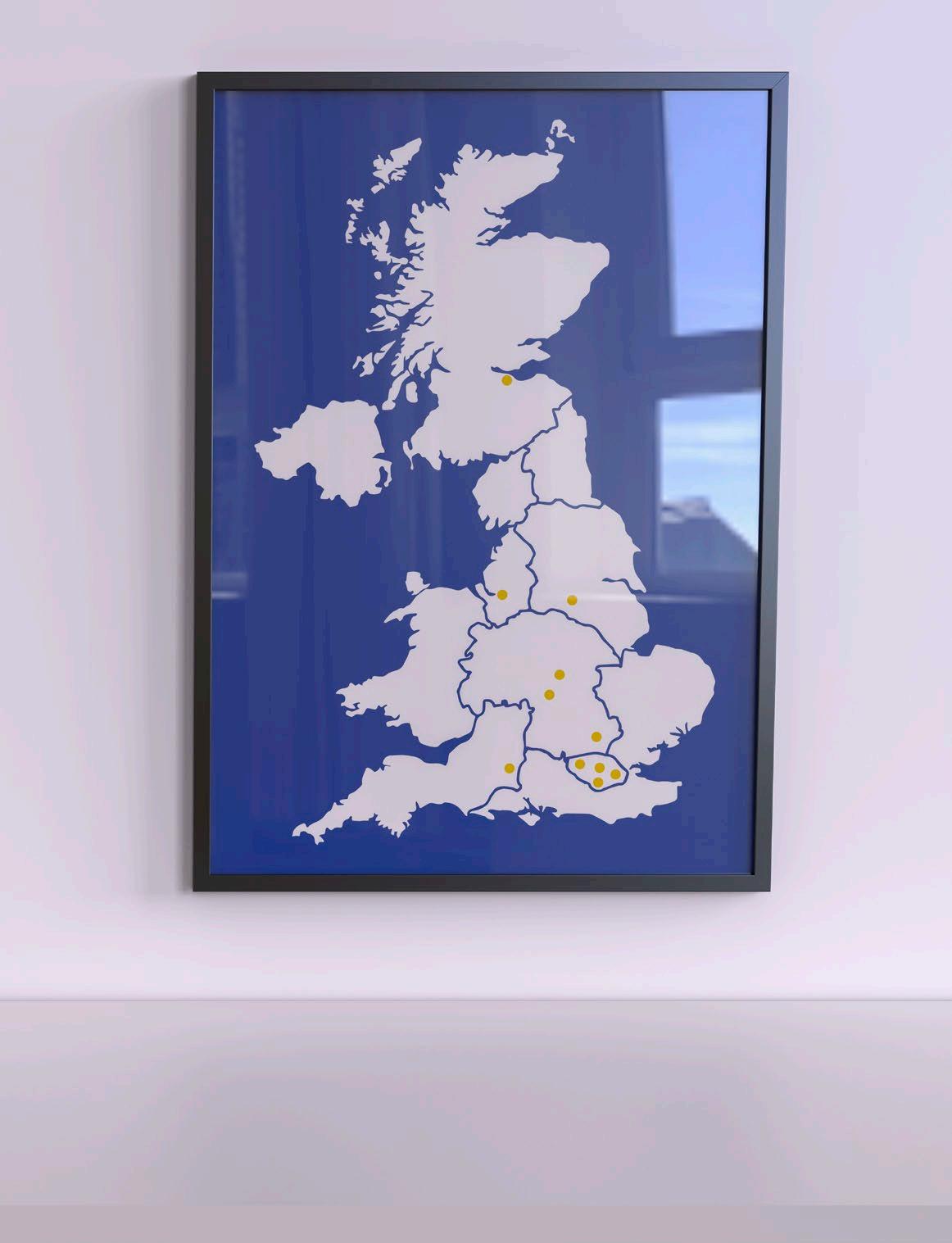 Brunel Design Students worked across a range of sectors from Industrial Design, Consultancy, Automotive, UX/UI, Visual Merchandising, Medical, Engineering, Manufacturing, Yacht Design, Graphic Design, Education, Design for Disability, Interior Design, Service Design, Toys and Retail.
Brunel Design Students worked across a range of sectors from Industrial Design, Consultancy, Automotive, UX/UI, Visual Merchandising, Medical, Engineering, Manufacturing, Yacht Design, Graphic Design, Education, Design for Disability, Interior Design, Service Design, Toys and Retail.


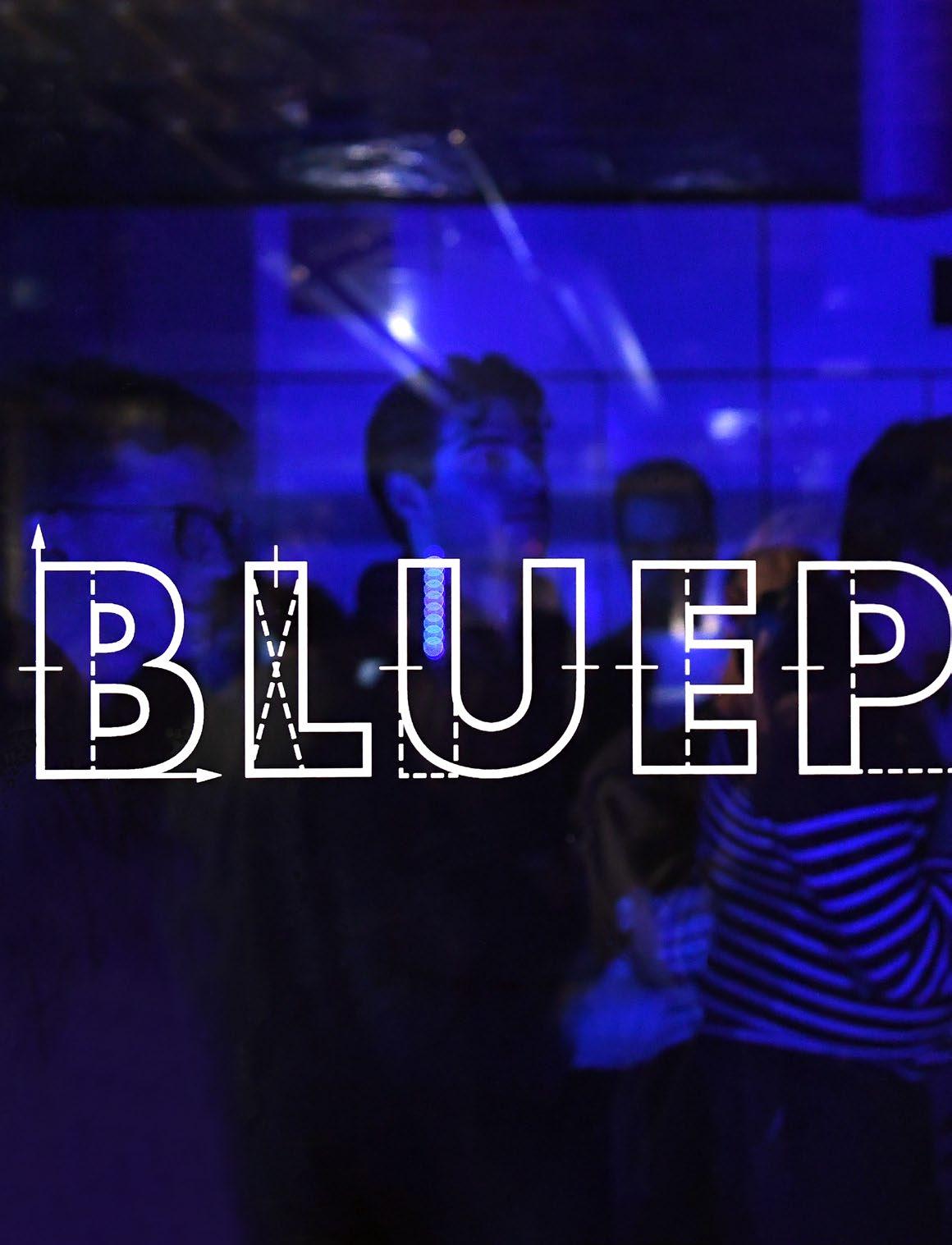

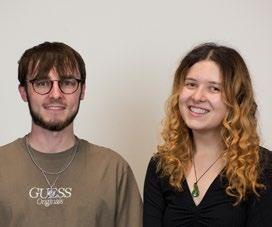
Brunel Design School is one of the leading Design Schools in the country, producing top-class graduates and championing new designers. Made in Brunel is a platform that highlights the incredible work that our students create. As we look back in reflection on the past 17 years of Made in Brunel we strive to uphold the legacy created by those who came before us. This year is no exception; the students within this book and their respective projects are a culmination of the passion and craft within the School. This year’s brand, Blueprints, cumulates all the ideals of this cohort.
As we come to the end of the year, we are able to reflect upon the remarkable year we have had at Made in Brunel. Kicking off our year with the signature brand launch, we featured an all-new brand room. This experience enabled members of the Brunel Design School to physically immerse themselves within our brand like never before. In March, we held our hugely successful Pop-Up event in Soho. Here, we held an insightful panel discussion which explored the future of design and inspired thought-provoking questions from our audience.
What’s more, we hosted the new ‘Design-Off’, an all-encompassing challenge which involved exciting new team elements. Another classic event recreated this year was the Design Challenge, where teams of students worked with leading companies to pitch ideas and gain feedback. The year rounded off with our final showcase at the iconic Bargehouse, Oxo Tower Wharf on London’s Southbank. Here our graduates exhibited their excellent work to industry professionals and celebrated their time at Brunel University London.
Here we are, at the end of the year and our time as Brunel Design School students. We are so proud of the team that helped deliver Blueprints. As you read through the projects in this book, we hope you will see how the Brunel Design School leads the way as one of the UK’s top universities for design. We leave this publication as our legacy to inspire and launch the designers of the future. To every student and graduate from the Brunel Design School, we wish you the best in your future endeavours.
Welcome to Blueprints.
Connor Ray & Chloe McCourt
Made in Brunel Directors 2022
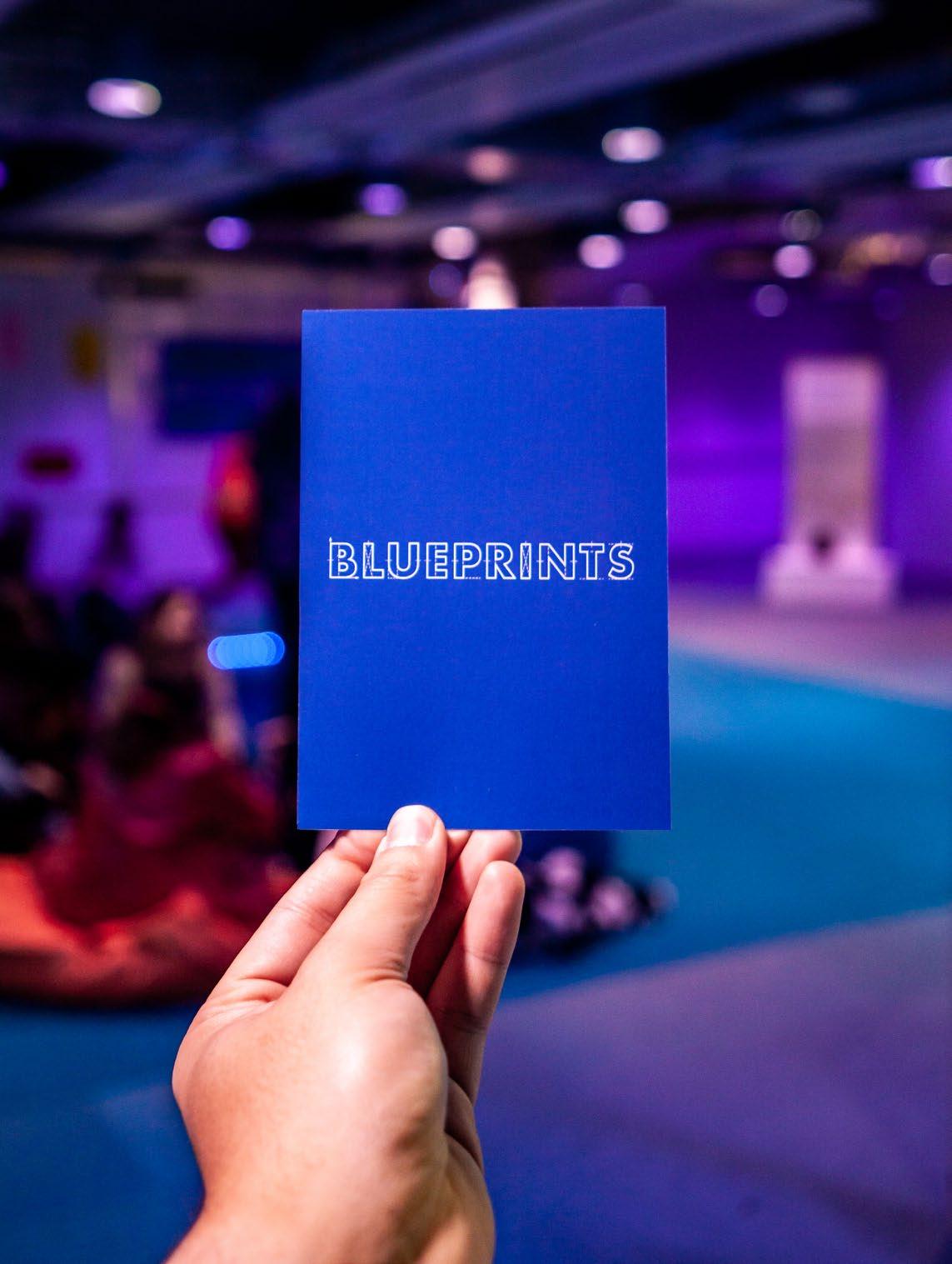
Made in Brunel has its own meaning to everyone within the Brunel Design School, so choosing a brand which resonated amongst our team was a key focus to us as Brand Managers. We ran workshops with our team to reflect on previous Made in Brunel years, exploring what their brand story and values meant to us. Reflecting on our history is important to understand where we have come from, and also to see how we can move forward as the next generation of creative minds.
After reflecting on workshop feedback, the idea of Blueprints as our brand came to be. Blueprints represent a traditional technical design drawing method which has adapted with the times. They were first used in 1842 as a reproduction of technical drawings, generated by contact printing on light sensitive sheets. Nowadays, they can be generated via digital means and distributed globally. They reflect the journey we have taken as design students, much like how the Brunel Design School has adapted to keep up with advances in technology and design methodology. Blueprints represent the hard work behind our polished designs and individual journeys of discovery and growth.
Blueprints can be produced indefinitely to communicate an idea through the means of universally understood symbols and structures. Good communication is crucial to materialising ideas, beginning as a passing thought or small sketch. We show pride in presenting our ideas and accomplishments, using the end of year book as a platform to share our work.
Our values which work alongside our core brand had to feel like a true reflection of our intentions as designers. The values which were chosen to reflect our brand and current mission as designers are togetherness, detail oriented, curious, purposeful, and forward thinking. Each value is represented by different material hatching used in technical drawings.
In defining the Blueprints brand we have been inspired by the students, faculty and friends of Brunel Design School. We hope that you enjoy being part of the Blueprints brand.
Rosina Leftwich-Kallmann & Kirsty Patterson Made in Brunel Brand Managers 2022

We work together, sharing our knowledge and supporting each other in our studies.
We examine the whole picture, down to a granular detail.
We are playful in our work, always exploring and studying the world around us. PURPOSEFUL
We design with intention, considering that our work may survive past our lifetimes.
We think to the future, carving new paths of change driven by innovation.
Throughout the year of 2021/2022, Made in Brunel hosted five varied events in venues spanning across the City of London. Each event has been designed to forge connections between the students of Brunel Design School and the wider design industry. Made in Brunel strives to ensure these archetypal events reflect the current interests and priorities of Brunel designers and the global design industry.
Brand Launch

1 26th November 2021
Michael Sterling, Brunel University
Design-Off
2 20th January 2022
Michael Sterling, Brunel University

As the past year draws to a close, we have the privilege of reflecting on the wide range of Made in Brunel events hosted in 2021/2022. As Events Managers, it has been important to keep the Blueprints brand and our values at the core of each event. The events have formed networks between students, faculties and the wider design industry, which we hope will extend beyond the current year.
With a new year upon us, the Made in Brunel team were excited to reveal the Blueprints brand. The brand launch took place on the evening of 26th November 2021 and pulled a crowd of students, alumni, and university members. Expectations were high and with the help of the bar stocking unique drinks such as the Alessi Morretti and the Pale Brunale, the event was in full swing. The main event was undoubtedly the curtain drop revealing the hidden ‘Blueprints Room’. The room carefully illustrated the journey of the brand so far, from the history of Blueprints to our visual identity. Our brand values were at the core of this room, displayed through a series of immersive experiences. It was certainly a night to remember and set the stage for the year ahead.
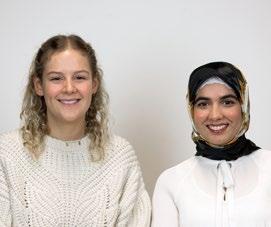

Inspired by previous years’ iconic Sketch-Off, our initial studentbased event was the Design-Off. The event pushed students to show proficiency in prototyping, branding, rendering and a whole host of other skills. The evening progressed through a series of time-restricted knock out rounds, as students battled it out to make it through to the final. Our panel of judges had the challenging task of whittling down the contestants to three prize winners. The panel was comprised of Brunel Lecturers Steve McGonigal and Dr Eujin Pei as well as Brunel Alumni Alex D’Souza and Sophie Denham. A huge congratulations to our runners up Oscar Norman and Henry Leeson, and a special shout-out to Chris Biggadike who took away first prize.
In Term 2, we hosted the Design Challenge, which brought together teams of designers from first year to PhD. Teams worked on varied briefs, provided by companies including Smallfry, Stix Mindfulness and Futurenova. In just five hours, the groups defined, ideated, developed and presented their final idea. The day was brought to an end with live virtual presentations. Thank you to everyone who took part and to the companies who provided briefs and valuable insights and feedback.

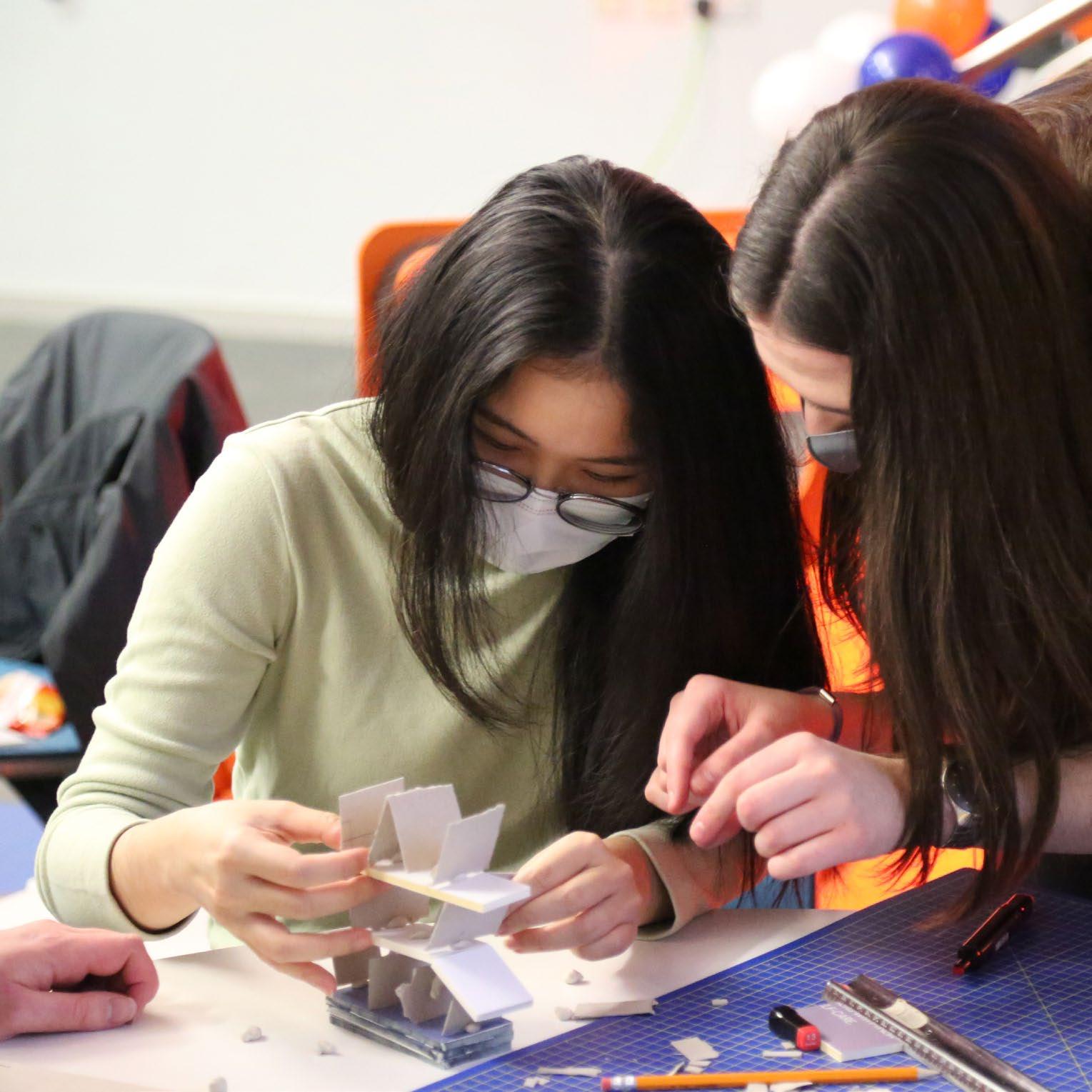
The Blueprints Pop-Up took place in London’s busy Soho district on the 3rd and 4th of March 2022. We kicked off the Pop-Up with an industry evening, packed with an interactive exhibition, Q&A session, and plenty of opportunity for networking. Over 100 designers took part in the Q&A session, with a theme of ‘The Future of Design’. Our Q&A panel, Lauren McMullan, Vice President and General Manager at SharkNinja London, and Amardeep Singh Shakhon and Gurmit Shakhon, founders of Bros&Co, masterfully answered a range of questions submitted live by the audience. Audience participation made for a dynamic evening, which was hosted by Ioana Saioc and Anduena Bardhi.
On the second day, we opened Blueprints up to the public. With the addition of a lino printing station and coffee bar, we welcomed the public to experience the Blueprints brand.
Every year Made in Brunel takes over the Bargehouse, Oxo Tower Wharf on London’s Southbank for our Final Showcase. The four day event is highly anticipated by all at Brunel Design School as we invite industry, the public, family and friends to join us. The rooms are filled with a range of products and service-based projects which reflect the work done by Brunel Design students over the last year. The showcase facilitates conversation between students and guests about the work displayed, as well as the design industry and upcoming opportunities.
The showcase also plays host to industry and alumni evenings; both of which are filled with live talks, socialising and networking.
Blueprints welcomed guests to our showcase on the 16th-19th June. We are proud to continue the Made in Brunel legacy at the Bargehouse and consider it to be a fitting culmination of our time within the Brunel Design School.
Thank you to all who joined us for our events throughout the year and for the continued support. We look forward to seeing you all at future Made in Brunel events.

Millie White & Silke Heyse Made in Brunel Events Managers 2022
Sophie Wilson & Somaiya Afzal Made in Brunel New Designers Managers 2022
This year, we built upon the work of our Website and Social Media Manager predecessors across all digital media channels, continuing to release a steady stream of high quality, visually stunning, and insightful content.
Taking on board the knowledge gained from the new Interaction and User Experience Design final year module, we set out with the goal to improve the overall usability of the Made in Brunel website, making minor tweaks that result in drastic improvements. Made in Brunel has an extensive history that can now be backdated to where it all started through the website’s timeline page, documenting all of the previous brands and highlighting key events over the years.
Last year’s team breathed new life into the blog. We had seen the impact their articles had on students so we wanted to continue to produce these almost weekly pieces. Our blog posts provided insight into our events via the “Behind The Lens” series, offered 3D printing and manufacturing advice to our students, and announced the incredible plans for the future of Brunel Design workshops.
We kicked off the year in the most Made in Brunel way possible, with our “everything orange” team photos. This monotone style spontaneously became our aesthetic throughout the year, dictating the visual language for all of our events, from the Design-Off through to the Final Showcase but, of course, using Blueprints blue.
MiB wouldn’t be anything without the students, so a great focus was placed on the promotion of their work, helping to grow awareness and exposure of the sheer quality of work produced by Brunel Design School’s finest. Our competition collaboration with Stockely Park provided an opportunity for students to have their designs manufactured and installed at the park entrance.
Henry Copeland & Oliver James Dawson Made in Brunel Website Managers 2022
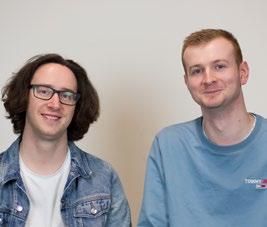
Stanley Binns & Sophie Lazenby Made in Brunel Social Media Managers 2022


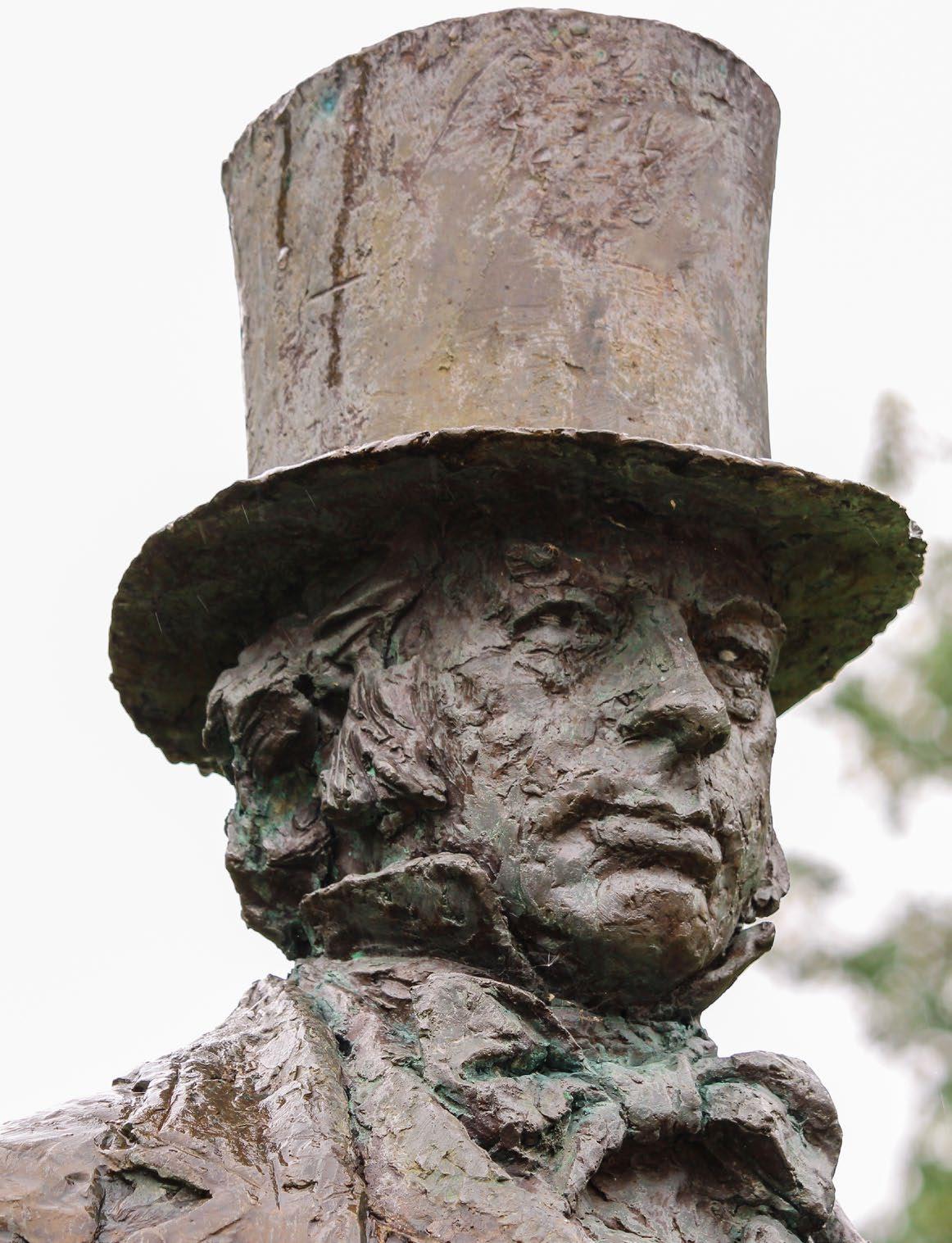

The Major Project is around one third of the final year study at Brunel Design School, in terms of its credit bearing. It brings together all the knowledge, understanding and skills developed in a selfselected design project (sometimes in collaboration with industry). This might be based on emerging personal and career interests or a brief set by a collaborative partner.
Our students have the freedom to choose a product, service or system as their focus. For each programme of study (BA Industrial Design & Technology, BSc Product Design and BSc Product Design Engineering) there is a variation on the focus to reflect the degree title, students’ interests and potential career pathways. The assessment is based on the practical outcomes of the work, and spread over eight months of study to encourage and emphasise good planning and management of the project.
In the first term, the assessment mainly focuses on the quality of research, clarity of the design brief and product design specifications, and the feasibility of initial design directions. In the second term, the formative assessment is organised in the form of the Industrial Review Evening. At the event, design students present work-in-progress concepts and gain valuable feedback from industry specialists and different tutors. The final outcome of the Major Projects typically include a comprehensive report, looks-like and works-like models, but may also include digital communication, such as user interface prototypes or CAD visualisation.
Brunel Design School has a fantastic track record of Major Projects which have achieved high profile press coverage as part of MiB. Our students have won major national awards including those at New Designers and the Mayor’s Entrepreneur Competition. Increasingly, Major Projects have been the foundation of start‐ups which have attracted considerable business investment.

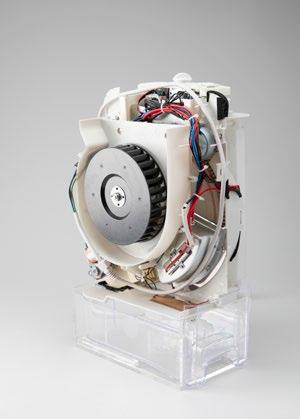

Increasing current low satisfaction levels experienced by overcrowded social rented households with dependent children.
This is an innovative product-service system, named Primrose, which will increase satisfaction levels amongst social rented households (specifically flats) with dependent children who live in overcrowded conditions.
Primrose does this by reducing waiting times experienced when attempting to resolve damp and mould issues, which allows for a greater quality of life. This is addressed by an innovative low noise dehumidifier that will reduce the risk of respiratory diseases, such as asthma. It also provides a new means of drying damp clothes indoors without the need to open any windows.
The wall mount feature will ensure that the scarce floor space of an overcrowded home is not invaded. This allows the household to maximise the space they live in and feel less crowded in the home.


Moment introduces a reliable non-hormonal male-contraceptive pill alongside an app-based service, which addresses cultural barriers to increase engagement and adherence.
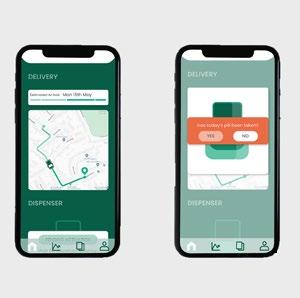

There are 14 available contraceptive methods that 60% of the European and North American population rely on. However, hormonal methods cause side effects such as mood swings, weight gain, and reduced libido. Non-hormonal methods require involved procedures for both patient and practitioner, leaving male contraceptive methods, of which there are just two. Condoms have a real-life efficacy of 85-90%, and vasectomies are usually favoured by those later in life. There is an opportunity for a reliable non-hormonal male contraceptive pill, for 18-29 year-olds with male reproductive organs in the UK.
Moment provides easy NHS login, simple prescriptions with home delivery, educational games, and medication tracking that can be shared with sexual partners, helping to combat uncertainty, mistrust, and social stigma. The smart connected dispenser only notifies the user if they forget to take their pill.


Safe & Seat is an inclusive design which will help physically disabled drivers to have the best driving experience.
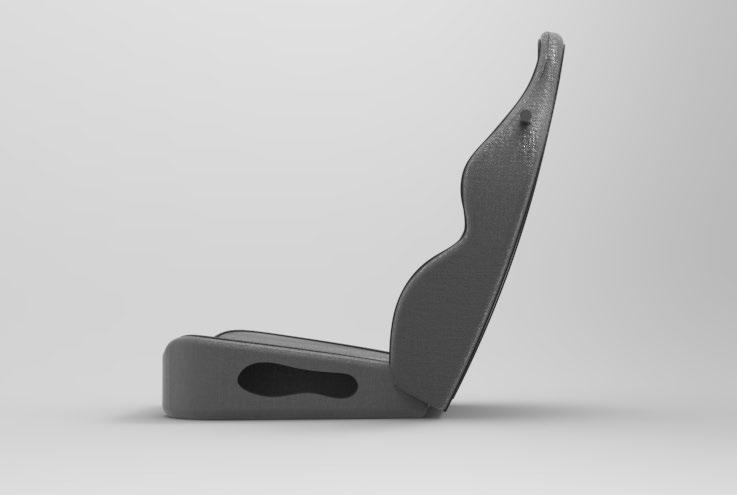
Safe & Seat take it as their duty to provide comfort and safety for physically disabled drivers. This product focuses on the ergonomic sitting position of users while driving.
By supporting the driver’s posture with the right amount of pressure, Safe & Seat takes away all the pain whilst ensuring safety. It aims to make its users have their best driving experience every time they get on the road.
Safe & Seat has three main traits: the lumbar support cushions, ease of getting in and out of the car, and a compartment for the safe storage of belongings. Designed for all types of vehicles and journeys, Safe & Seat is the ideal solution for physically less able people with posture issues.



The Only One is an app that addresses the challenges faced by Black designers, creating a safe space for young Black designers and professionals to gain confidence.



This project looks into the reasons behind the lack of diversity in the design industry and aims to challenge current solutions with the purpose of creating conversation through disruptive design. Currently, two million people work in the creative sectors, and only 3% of designers are Black. This stems from early career choices where individuals encounter three main challenges, feelings of isolation, no role models and fears of discrimination. Research findings highlight a need for change that brings more Black people into the Design industry, and the creation of diverse teams promoting inclusive products and services.
The Only One creates a safe space for young Black Designers to be mentored by Black design professionals, building their confidence, knowing that there is room for them in the design industry. Breaking down these barriers will lead to an increase in representation of Black people in the creative sector.




Tackling the financial burden and health risks associated with laundry practises in the UK for those in fuel poverty or with limited living space.
Those in fuel poverty are forced to make compromises in various areas of their laundry routines, due to their financial burdens. Tumble dryers are an impossible option, because individuals struggle to afford the upfront costs, rising energy bills as well as finding space in shrinking UK homes for another large appliance. Drying options are limited further by the associated health risks with indoor drying, air quality deteriorates as humidity increases, facilitating mould growth that aggravates respiratory conditions.
The Ardian drying unit solves these struggles by incorporating three key characteristics: compactness, adaptability and cost-efficiency. This has been achieved by enabling full collapsibility, various attachments to fit into different environments, material, and form optimisations to minimise cost and the prioritisation of outdoor drying.

AR View is a project that looks into improving museum information architecture through augmented reality (AR) to provide a more customisable and enjoyable experience.


AR View is a multi-faceted platform to provide an alternative to current museum artefact labelling for use in both museums and galleries. AR View utilises augmented reality through a phone application as well as a pair of augmented reality glasses (to be rented at the start of the experience). These can be used to give real time information about what you are looking at, solving current issues that museums face such as overcrowding. The application also aims to expand the museum experience to relive memories after the visit, a trend that is currently being tested by museums.
During this project, significant research was done into the areas of information architecture, glasses anthropometry as well as current museum experiences. Primary observations as well as secondary research were utilised to create the final product.




Don’t Kill Murph! is a game that keeps you off your phone.
Don’t Kill Murph! is a smartphone accessory designed to help you restore a balanced relationship with your phone. Smartphone addiction can have serious impacts on health and wellbeing, including poor sleep and increased risk of mental health disorders.

The game rewards healthy screentime habits in order to encourage regular downtime without your phone. All you have to do is protect your friendly companion, Murph, who helps you monitor your phone habits. In return you have to help Murph fulfil his dream of building his pixel paradise, Murphtopia! Murph spends each day building new parts of Murphtopia, using tools and resources that you unlock through good screentime habits. However, Murph is under constant threat from the ever-present evil cloud that looms over all of Murphtopia, his arch nemesis, The Scroll, who feeds off your unhealthy screentime habits. Just thirty minutes of uninterpreted scrolling and you condemn Murph to a painful death by Scroll.


The Smile Brace is designed to assist clubfoot patients become more compliant with their brace use by improving the overall comfort and experience, thus decreasing recurrence rates.
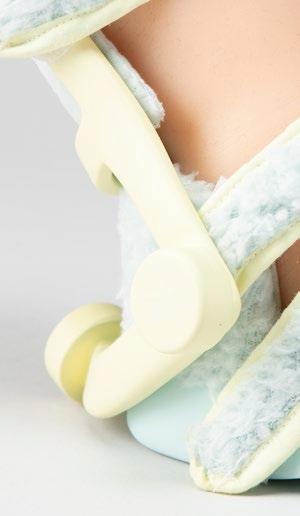
Clubfoot is a birth defect in which a foetus’s feet or foot are turned upwards and directed inwards. This occurs in 1 in 1,000 births in the UK. While the treatment method has a 95% success rate, there is still a 37-47% recurrence rate. This is primarily due to noncompliance with braces. To maintain the shape of the feet after the casting phase, a brace is worn up to the age of 4 or 5 for up to 14 hours per day.

The Smile Brace was designed to promote brace adherence by improving the overall visual style and moving away from the appearance of a medical device, taking on a slipper-style design inspired by the aesthetic of being indoors. This also ensures that the patient experiences maximum comfort whilst wearing the brace including elements of breathability and adjustability. An abduction dorsiflex mechanism was integrated into the design to maintain the correction of clubfoot.
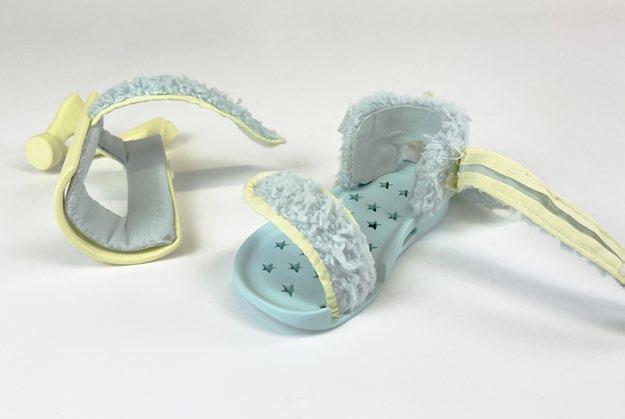

Mizu is a product-service designed to improve medical adherence among Type 2 diabetic patients by allowing them to manage their medication regime effectively.
Mizu will primarily be used to dispense pills and keep patients hydrated as they receive notifications and health recommendations through the mobile app. Mizu does not prominently stand out as a pill management unit therefore, reducing discomfort in public while subsequently aiming to provide user interaction and social support.


The accompanying app considers convenient and accessible user engagement, medical assistance and scheduled appointments. Mizus pill compartment can be easily detached and filled up with medication for each use. The pill compartment can store up to a day’s worth of pills to be taken three times a day. Mizus app allows the user to plan their medication schedule, where Mizu will then alert the user when it is ready to be consumed. This simple yet effective design addresses factors of non-adherence within patients by creating an integrative product to be used daily.



SHŪCHŪ interprets the user’s digital calendars, scheduling deep work and break sessions throughout their day, nudging them to be more productive.


Research has shown that we are only productive for a total of 2 hours 53 minutes in an 8-hour workday, with the remaining time lost through procrastination and distractions. With the recent increase in the uptake of hybrid working models, remaining productive in different working environments, whether it be the home or the office, can be a struggle for us all.
SHŪCHŪ wirelessly connects to a computer, displaying events from the user’s digital calendar and recognising gaps in their schedule. The device fills these gaps with deep work and break sessions, based on the productivity-improving Pomodoro method. The display automatically changes to a visual countdown screen that nudges the user to engage themselves in deep work, ultimately facilitating improved productivity. The product integrates perfectly into a work-from-home or office desk space but can also be taken and used on the go, for non-stop productivity.


A sustainably designed, recyclable COVID-19 lateral flow test kit, using only bio-based plastic and card, that also incorporates various human factors improvements.


COVID-19 lateral flow test kits have been critical in combatting the spread of the virus. However, throughout the pandemic, and with the tests now paid-for, their designs have remained wasteful. The 2 billion provided in the UK have created enough plastic waste to fill at least 19 Olympic swimming pools.
EcoClear not only addresses the waste issue, but also makes sustainability improvements across its life cycle. Only two materials are used: a bio-based recyclable plastic, and card. The design enables all individual component packaging to be removed. Compared to the most widely used kits, the design achieves an estimated 20% weight reduction, and a 70% reduction in CO2 and energy use.
EcoClear envisions what a holistically designed, more sustainable and user-friendly test could look like.


GlideAir is a monitor used to physically visualise air quality inside offices and homes.


Our work productivity can be influenced by a number of things, one being our air environment. The average person fills their lungs and breathes 20,000 times a day, which means the air environment we put ourselves in is constantly circulating inside our lungs and affecting our brain activity without us even realising. This can affect and disrupt our work productivity if the air environment turns poor without us even realising.
GlideAir is all about turning the invisible, visible. GlideAir is a monitor which physically visualises five different factors of air quality on vertical scales.
The aim is to communicate a range comparison that is easy to see at a glance, rather than a single number that can be difficult to put into context. GlideAir measures for temperature, humidity, carbon dioxide, PM2.5, and PM10.
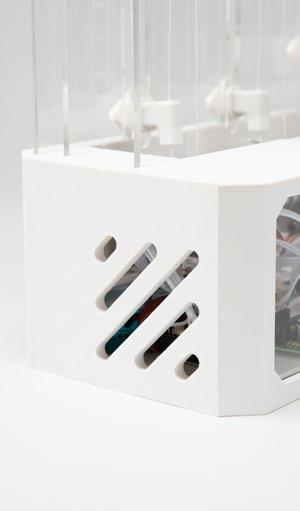

Semper is a versatile portable exercise device that offers ACL patients an easier way of performing rehabilitation at home.
Semper is a product designed to improve patient motivation during the latter stages of ACL rehabilitation. By integrating commonly used resistance bands, the patient can perform a wide range of exercises that strengthen the knee faster than traditional methods. Over time, patients can increase the resistance by adding tougher bands allowing them to progress through rehabilitation quicker and ultimately return to sport faster. Manufactured using additive 3D printing technology, Semper is constructed uniquely for the patient’s size and fit, ensuring complete comfort and ease of use.



Semper uses internal sensors to accurately display the flexion angle of the knee and deliver haptic feedback to the user. Visual feedback enables patients to track their progress, enhance their stretches in real-time during rehabilitation activities, and guide them on their rehabilitation performance. Physiotherapists can provide clear targets to patients by updating Semper with active flexion targets during the rehabilitation process.

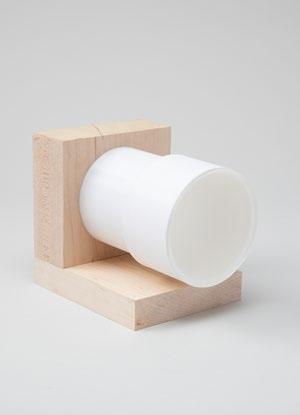

A pay-as-you-go lighting service for consumers living in rural Malawi that lowers entry costs.
Sol Service is a pay-as-you-go service that increases accessibility by lowering entry costs to allow a larger number of consumers to have access to clean lighting. The product itself utilises a lens on a screw mechanism that, when rotated, will move the lens back and forth. This adjusts the focal point of the light to change it from a wide-angle light used to light up entire homes to a narrow brighter beam used for tasks such as studying.

Sol Service has been designed with longevity of the product in mind by offering repairs and maintenance at various energy hubs where the product can be recharged for a small fee. Additionally, Sol comes with the capabilities to charge small devices such as mobile phones and features a glow in the dark power button so that it can be found in the dark. This allows the user to adjust the brightness of the product to their needs.


Renewable energy generation for the marine environment.


Commercial shipping is an incredibly efficient way to transport goods long distances around the world, however it is still a major emitter of greenhouse gasses. With other industries improving their carbon footprint and demand on shipping increasing, the sector could account for up to 17% of global CO2 emissions by 2050. While major ship design changes will be needed in the future, this is a long way off. There is a growing need to minimise the emissions from the existing fleet of ships.
Ocean Energy provides a retrofittable device capable of fitting to the decks of oil tankers to provide clean energy directly to the ships auxiliary power supply and reducing the reliance on diesel generators. The device comprises of a vertical axis wind turbine with a solar array above, multiple units can be placed on each vessel depending on the size. All aspects of the product have been designed with the harsh conditions of ocean-going vessels in mind.



Digital Ford Sign aims to prevent drivers from underestimating risk and water depth when crossing river fords, preventing breakdowns, emergency callouts and fatalities.
Fords are when a shallow river crosses a road, requiring any passing vehicle to go through the water. These usually are safe; however, when water levels rise, they become dangerous, with as little as 6 inches potentially stalling and stranding a car, doing considerable damage; fords alone make 12 of the top 20 breakdown hotspots in the UK. More significantly, of all stranded vehicles, 75% are written off, representing a substantial monetary loss for drivers.
When approaching a ford, drivers often underestimate water depths and cannot easily tell the difference between when it is safe or dangerous. The Digital Ford Sign solves this by measuring and displaying water depth on a staff gauge and showing associated risk through the conventions established for traffic lights. Both displays provide drivers with a clear stimulus they can interpret, aiding in their decision making.



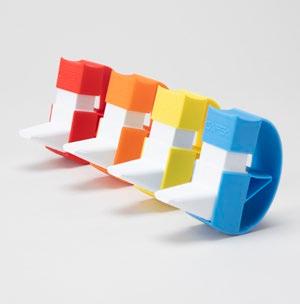

CAPSA brings together a physical and digital experience to improve asthmatic’s inhaler techniques, safely increasing the amount of medication reaching their lungs.


12% of the UK suffer from asthma, with researchers finding that there is a 74% chance of making three mistakes when using an inhaler, resulting in, at most, 40% of medication reaching their lungs. CAPSA is a two-part solution to encourage better inhaler techniques, increase the amount of medication reaching their lungs and reducing reliance on the NHS. The product is an inhaler addon, which supports the user with an ergonomic grip, which can be held in multiple ways, and encourages the correct orientation.
The app supports the user by providing them with AI based feedback, with the user recording themselves using their inhaler and the AI providing them with informative feedback. It also features an informative video guide and the ability to record each time they use their inhaler, allowing the user and their GP to make an informed decision about improving their asthma management.


An educational program creating a new, engaging way to teach 7–11 year-olds about animal welfare. Nurturing development of children’s social and emotional perception of animals.
Due to lack of education of animal welfare, there are huge issues concerning the health and wellbeing of pet rabbits in the UK. Owners are often unaware of the highly complex needs of rabbits and can be neglectful towards their pets.


Bunny Business has two main offerings; worksheets that cover the five welfare needs of animals and engage children in a range of active learning activities, and ‘Barry the Bunny’ a teaching aid that helps children learn how to appropriately handle rabbits. Barry the Bunny detects rough handling through pressure sensors on his ribcage and gives feedback to the child by vibrating if not handled correctly. The teaching aid is loaned to schools by a charitable organisation that cleans and maintains the teaching aid after use. By developing more effective methods to teach children about animal welfare, future generations will be better equipped to reduce instances of welfare violations.



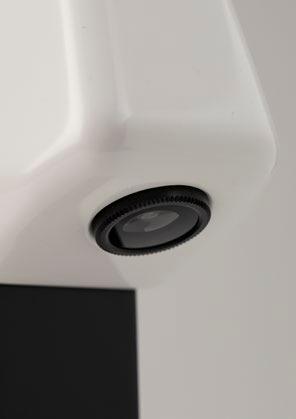

Tackling the dangers faced by cyclists in HGV blind spots.
Due to the elevated position of the cab of an HGV, the driver’s lines of sight are compromised at the direct front, rear and adjacent sides of the vehicle. These areas are defined as blind spots. Current systems in place to alert cyclists of blind spot dangers are ineffective. With cyclist and HGV accidents having the highest fatality rate of all traffic types, how can cyclists be better warned of HGV blindspots in order to reduce the risk of an accident occurring and increase HGV safety?
The Laser Blind Spot Indicator, or LaBSI, paints a visual projection of the blind spot onto the ground next to the HGV. The LaBSI is attached to the side panel of the HGV via strong magnets. This offers a non-permanent, secure and universal fixture. The projection illuminates when the driver switches on their indicator, alerting cyclists and anyone around the HGV to the potential ‘danger zone’. A flashing laser helps the LaBSI grab cyclists’ attention, giving them the ability to identify the blind spot and take precautionary measures to adjust their position.
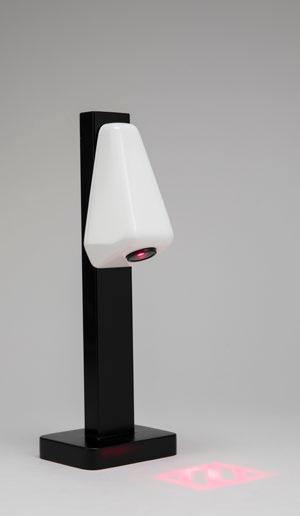

Bespoke fencing handle manufacture through a customerorientated product system service to reduce injuries and increase athletic performance.
The fencing grip is the interface between hand and handle, where the sword unites with the fencer to become an extension of their own body. The optimisation of the handle is key to both comfort and performance. Despite this, modern grips are a one-shapefits-all product, with fencers often using poorly fitting handles. The consequences include inhibited movement of the fingers and hand, as well as injuries such as blisters and serious upper limb disorders.


Get a Grip aims to revolutionise traditional fencing handle manufacture, creating a valued customer experience through individualising and optimising handle shape. The service delivers customers a simple method to mould and adapt the shape of a handle using a thermoplastic. After which, 3D scanning and printing technologies unseen on the market before provide the customer with access to multiple copies of bespoke handles made specifically for their hand, reducing injuries, and increasing performance.


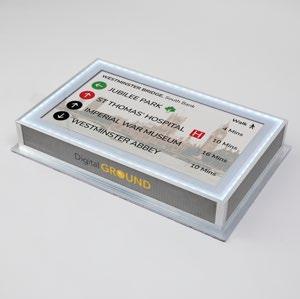

DigitalGROUND is a wayfinding scheme supporting pedestrian navigation in cities. It balances textual and graphic elements, offering localised directional and travel information.

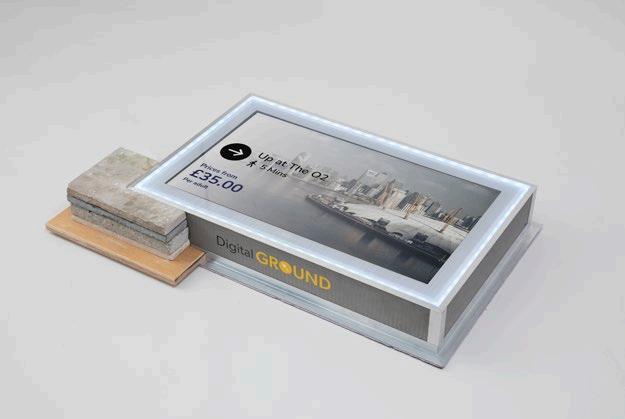
The outdoor digital signage market is expected to see the highest compound annual growth rate within the signage industry. Users currently depend upon conventional signage and GPS enabled devices to navigate. These do not cater for navigational strategies of all demographics. Environmental cues, such as signage, play an important role in building cognitive maps of an environment.
DigitalGROUND comprises of a digital screen installed at ground level. A pedestrian’s vertical field of vision is currently overwhelmed; displaying instructions at ground level differentiates the solution from the existing market. This offers live updates and complete customisation to deliver specific client requirements. Localised marketing opportunities for businesses, with integration to the transport network, offer value to the UK public. DigitalGROUND also encourages changes in user behaviour, providing walking instructions for a healthier and more positive city experience.

A sustainable low-cost hydroponics tower system that reduces plastic waste; reusing single-use plastic bottles as plant pots.



68% of the world’s population are projected to live in cities by 2050. Biotopia offers a non-mains-powered, fully sustainable, compact, portable, and affordable solution to grow food in your home.
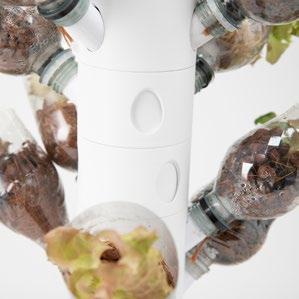
Biotopia repurposes waste such as plastic bottles, packaging, and drink can pullrings to build the kit, providing a low environmental impact solution. It engages user interaction, and its online social community retains interest and commitment. Its low price point offers an affordable kit, and user grown produce saves money.
The recycled rPET modular tower will grow up to 15 plants and herbs at any one time using a capillary system with total flexibility. Additionally, the vertical farm can have a solar-powered pump upgrade to the kit to provide easy water distribution.

Wave provides adaptive hearing protection for users at higher risk of developing noise-induced hearing loss and tinnitus.
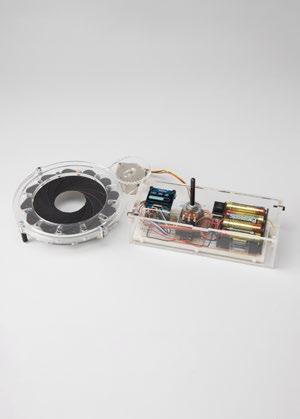


The necessity of looking after our hearing is often overlooked, with over 12 million people in the UK suffering from some degree of hearing loss. Tinnitus is the “perception of sound in the absence of a corresponding external sound”, with 15% of UK adults experiencing debilitating tinnitus at some point in their lives. While both conditions are prevalent in all age groups, those who are frequently exposed to loud and stressful environments are often at higher risk of suffering from noise-induced hearing loss and tinnitus; both having a significant effect on the quality of life.
Wave implements safeguards into the user’s daily routine, reducing the risk of noise-induced hearing loss and tinnitus. Providing bespoke, adaptive, hearing protection, Wave responds to the environment by passively adjusting the noise reaching the user’s eardrum via an adaptive nitinol aperture. By restricting the volume of sound passing through into the user’s ear, Wave provides a safe hearing experience in all environments.

Create outside the box with Qube, a high quality, sustainable, engaging, entertaining kit for children when travelling long-haul.



Qube provides children with a creative spark to engage them throughout a long-haul flight. Qube can be pre-ordered on the purchase of an airline ticket with a small holding deposit. After takeoff, Qube will provide a high-quality, re-usable product to the child. They can benefit from merging physical and digital play using the product-app combination to explore the world they are travelling over with themed in-game levels, unlocking new levels whenever they reach new airspace to keep them engaged throughout the flight.
The staggered release of levels engages children during different flight periods; when a level is unlocked, the child will benefit from an educational insight into each country and culture. Upon descent, the kit is returned to the cabin crew, who conduct a quick quality check before sanitisation to determine whether you get your deposit back. Overall it is a simple process that offers unique onboard entertainment for children.
A sustainable and customisable mini cosmetics case, shaped like an egg, that caters for the varied tastes of make-up users.


The cosmetics industry is one of the most wasteful, and sustainability is no longer a trend but a lifestyle choice. People are looking for products and brands that reflect their values and choices. This collaborative project with the company ThrowBox Innovation Studios is aimed at creating an egg-shaped make-up case, which allows users to construct a personalised make-up palette to touch up their individual look.
The Make-up Egg contains a number of cosmetic products, in removable parts, that allow the user to replace and recycle the containers once consumed. This is a sustainable way for users to create their own colourful palette with different types of products that can be placed inside the case (from lip to eye products) to cater to the varied tastes of its users. The customisable, compact palette within the egg lets the user effortlessly carry and expand their case when desired and needed.


A compact, transportable liquid medicine container for commuting and daily use, where users can easily administer their medication, therefore increasing adherence.

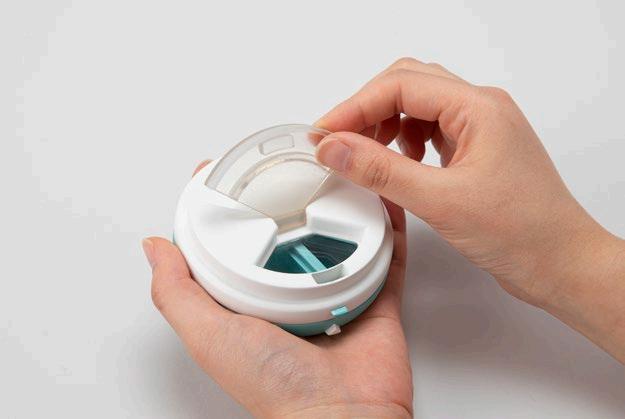
According to research, 71% of users voiced that the most difficult aspect of administering liquid medication was travelling. When travelling for work or leisure, 77% of people felt extremely burdened. Liquid medications are cumbersome, inconvenient to transport, and less chemically and microbiologically stable than their solid counterparts. To aid users in tackling these problems, Bhari aids in delivering liquid medication while commuting to work and during everyday travel, in order to lessen the risk of non-adherence owing to inconvenience.
The most common solution is transferring the medication from the large bottle to a smaller container that the user already possesses at home. In response to this, Bhari allows users to select the desired dosage by rotating the product’s lid to administer their liquid medication. The device includes interchangeable compartments of different measurements and is equipped with a child-safe lock.



Allay is a product solution that aims to alleviate needle anxiety for adults when donating blood in the UK.
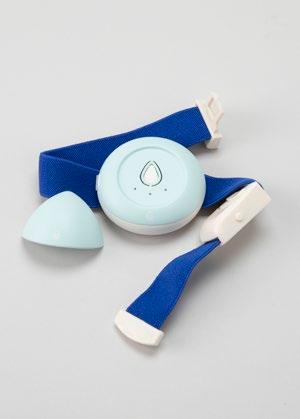

The number of blood donations in the UK has recently dropped to 131,825, the lowest recorded in four years. Ten percent of adults admit to having anxiety of feeling pain and nervousness at the sight of needles, the latter being the main reason for hesitation. The NHS Blood and Transplant services are always looking for new ways to increase donor numbers.
Allay taps into a new pool of healthy and eligible blood donors by introducing two products that tackle the feared pain and sight of a butterfly needle. The medical device uses vibration and weight to desensitise a donor’s nerves 30 seconds prior to injection to reduce the pain. The device cleverly integrates a tourniquet reducing the need for an additional strapping method. The needle shield sits comfortably onto a donor’s arm to protect the donor’s gaze from the inserted needle, whilst allowing nurses to maintain visibility of the injection site.
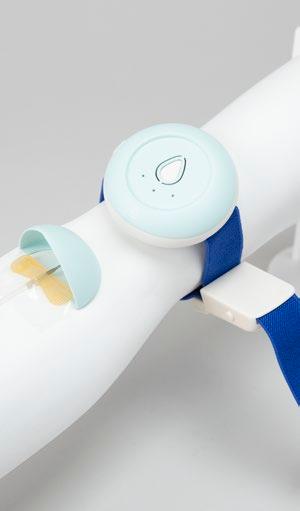

A sustainable zero waste air purification system, harnessing the natural power of plants and activated substrates, maximising home working productivity and wellness.
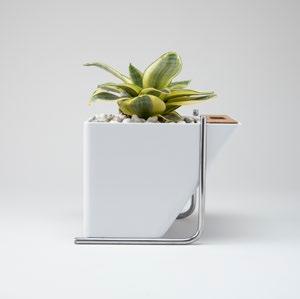



Indoor air is ten times more polluted than outside air. COVID-19 has created a dramatic increase in sustained home working and is expected to continue. With the global air purifier market size averaging 21 million products, there are 6,000 tonnes of nonbiodegradable HEPA filters discarded and sent to landfills each year.
PUREAIR uses Phytoremediation technology to naturally purify and gently humidify the air. Air is forced through a layer of activated substrate, the contaminants are trapped by activated carbon allowing microbes in the soil and root system to break them down. Thus allowing the plant to digest these, creating new plant tissue making PUREAIR bio-regenerative (self-cleaning). The improvement of air quality within a domestic workspace reduces the risk of health implications, stress and anxiety, boosting concentration and the overall feeling of wellbeing.

A system that reduces the fear and anxiety of travelling alone using a discreet emergency button in the ring and safety features of the app.
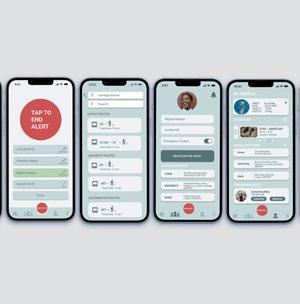

Women’s safety has been an issue widely highlighted throughout the world. In the past year, the UK has had an increase in raising awareness for violence against women. Statistics show that 70% of women in the UK have experienced sexual harassment in public with only 4% reporting incidents of sexual harassment to authorities. These numbers highlight the large scale of concern this issue has in the UK even in recent times.
Moonlight uses a discreet button in the ring that is connected to the app via Bluetooth, which will then send an alert to the user’s chosen emergency contacts. Visual feedback is given through the LED light on the status of their alert (Red – Alert sent, Green – Alert accepted, Blue – Police alerted). The app also has additional safety features such as finding safe locations, routes and being able to see their friends’ calendar during emergencies to get more information on their whereabouts.



A collaboration with the NHS to maximise the time patients spend in a paediatric intensive care unit (PICU), by transferring equipment onto a CT bed in one go.
PICU cares for the critically ill patients who are on support and occasionally need to be taken to the CT scan room for imaging. These patients have multiple lines and equipment attached to them which need to be transferred onto the CT scan bed individually, making the process time consuming and error-prone.

This equipment unit allows for storing the equipment and lines neatly away from the patient when in the PICU and is transferred onto the CT scan bed in one go, allowing the staff to minimise time outside the safe environment of PICU.

A working prototype has been evaluated at Royal Brompton Hospital via a trial run and compared to the status quo. It was decided that its use is not just limited to anywhere patients are on support (PICU/ITU, HDU and CCU), but can be used in other parts of the hospital such as CT or fluoroscopy.





CX is an innovative method for conducting financial activity via blockchain integration. Executing faster payments using cryptocurrencies and processing the transaction with biometric data.
CX supports digital payments conducted over the decentralised network utilising the blockchain advancements. The interaction requires multi-factor biometric authentication in order to execute a transaction in a timely manner.
CX is a product-service operating in the world of digital payments, utilising the entire scope of the blockchain. In correspondence with the cryptocurrency legalisation, CX ecourages hardware storage, obstructing fraudulent intrusion that is looming over the centralised third party services. With just three simple interactions; the gesture input, biometric 2-factor authentication that implements the fingerprint sensor and the heart beat sensors, and the CAPTCHA confirmation, the user will execute a P2P transaction across the blockchain network. The owner would therefore be paying for their expenses using the coins that are stored in and compatible with the device.
The Growth Garden is a play therapy game aimed at supporting and facilitating conversations about loss, change and other difficult topics.
On average, one in five children will experience the loss of someone close to them by age 18. Children can be exposed to many forms of loss and change, such as the death of a loved one, loss of a pet, or other family changes like divorce. More recently, the COVID-19 pandemic has presented a whole new set of changes.

Generally, the thoughts and feelings of children during difficult times are overlooked. Without intervention and processing a traumatic event during childhood, this can lead to developmental disorders in later life and other mental health problems such as stress sensitivity, anxiety, and depression.
The Growth Garden game provides an engaging distraction activity and conversation prompt for parents to talk to their children and help the child communicate how they are feeling in a way they understand most, through play.

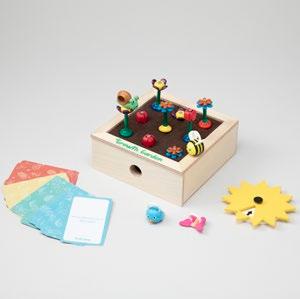




Re-Nu is a sustainable modular manual toothbrush designed to encourage users to maintain consistent and effective dental care.

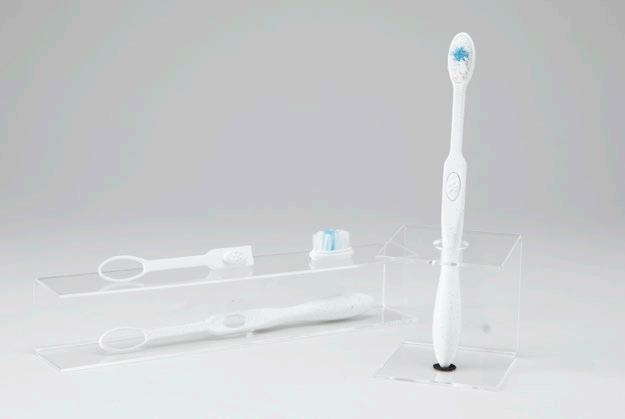
Non-recyclable multi-material products contribute to tonnes of municipal waste which is sent to landfill every day. Manual toothbrushes are the most widely used example of a multi-material product, but they are often overlooked by consumers in terms of their environmental impact. They risk being sorted into the wrong polymer waste stream which can result in polymer crosscontamination. This reduces the physical and mechanical qualities of the recycled plastic, limiting post-processing applications.
The Re-Nu Toothbrush alleviates the shortcomings of existing environmentally-friendly solutions by reducing the impact of manual toothbrush waste through design for disassembly, and provides a familiar brushing experience. Users are encouraged to maintain consistent and effective dental care with regular toothbrush changes through the packaging design and colour changing bristles. The modular design allows the single material toothbrush head to be easily recycled and replaced by the user.


MyHemo motivates women with iron deficiency to adhere to their medical regime through managing their iron intake and encouraging a better dietary lifestyle.

The World Health Organisation states that iron deficiency is the top nutritional disorder in the world; 3.5 billion people suffer from a lack of iron, 33% being young, menstruating women. Iron deficiency, if unaddressed, leads to anaemia which can have serious, lifethreatening consequences. However, 50% of the medicated population are non-adherent to their regime due to forgetfulness, a lack of awareness, organisation, support, and more.
MyHemo is a smart health management system that aims to overcome non-adherence. The app encourages tablet consumption and an iron-rich diet by utilising gamification throughout. Features including progress trackers, a community page, schedule planning, and data visualisation are key in assisting the user on their journey. The modular water bottle provides freedom and flexibility by containing tablets and iron-rich snacks for on-the-go convenience. This system alleviates symptoms and reduces redevelopment risks.


A GSK collaboration to design a fun medical device for children, tackling anxiety whilst taking medication, reducing illnesses stigma and alleviating parental pain points.


Five million children under the age of five passed away in 2020, the majority from preventable and treatable causes. For some illnesses, children are required to take medication every day to stay fit and healthy, but there are currently very few oral medication delivery devices designed for this age group due to a lack of paediatric innovation. Fear and anxiety while taking medication, preparation and delivery failures from untrained parents, poorly designed devices, and the stigma associated with their condition can lead to reduced therapy adherence which may endanger their lives.
Nürtra addresses these difficulties by enhancing children’s medication experiences through play, increasing their familiarity with the device and helping to cope with treatment. It also features modular attachments suited to different ages that are designed to reduce the chance of choking and a secure mixing cup which assists parents in medication preparation.




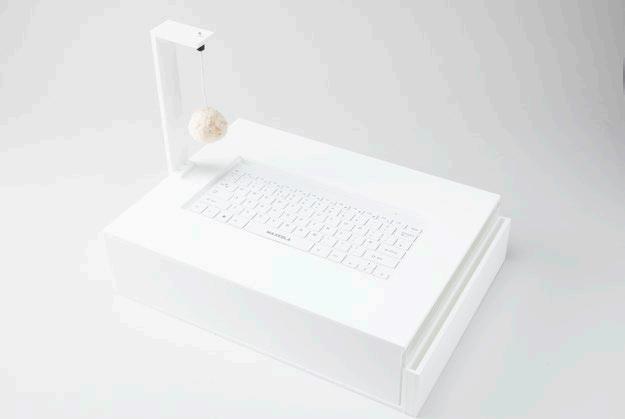
Good Cat is a keyboard-shaped cat mat with a backsplash function that allows cat owners to work effectively, without being disturbed by their cats.

The COVID-19 outbreak led to a large increase of those working from home, which includes a significant number of cat owners. This has meant that pet and owner interactions increased massively, which has provided more bonding opportunities but has made it impossible for owners to concentrate on performing work tasks.
With the possibility of more fun exchanges with their owner, cats unknowingly become disruptive as they attempt to engage with their owners. The Good Cat provides a personal keyboard-shaped cat mat for cats to play with so they feel a sense of psychological balance. A soft fur toy ball is suspended to attract the cat’s attention through the prospect of play and an additional transparent protector is pulled out by the cat owner to prevent cats from walking on the keyboard.


A product used to monitor skiing head injuries in order to detect brain bleeds.
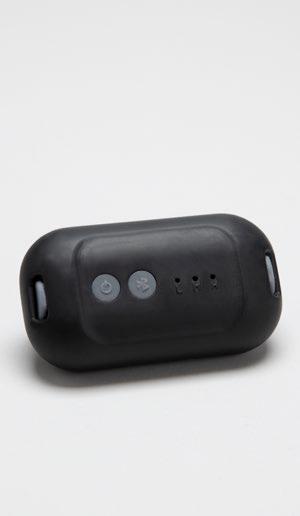
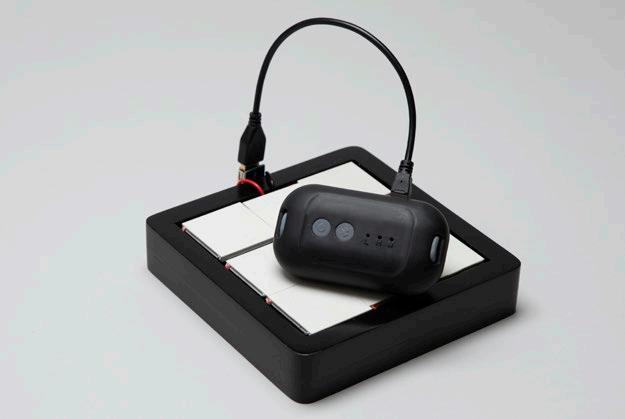
Skiing is one of the highest risk sports for head injuries; with 600,000 injuries each year as a result of skiing or snowboarding in America alone. 20% of all these injuries are severe head traumas.
Brain bleeds often cannot be detected immediately, the patient may seem fine for a few hours, sometimes days. CT scans are the only way to detect bleeding on the brain. If the bleed is not detected, doctors cannot drain the blood and permanent damage or fatality invariably occurs.
An accelerometer inside the helmet measures the force at which the head has been hit during an injury and determines whether a CT scan is needed to check for a brain bleed. Using thermoelectric generators, this ski helmet is powered from the heat of the user’s head. 5 TEG’s produce 0.9v at a temperature difference of 25 degrees. 3.3v is generated with a buck booster to power the internal accelerometer.


Helmet Halo transforms existing micromobility helmets, providing new functionality with a renewed purpose to prevent injuries, not just protect the wearer in the event of an accident.



Since 2015 over 26,000 cyclists have been killed or seriously injured. One-fifth of these casualties come from factors related to visibility and misinterpretation of rider’s paths or speed by other road users.
Helmet Halo is a retrofittable kit that can be mounted to a wide variety of micromobility helmets offering a unique solution to make riders clearly visible and safer on their journeys. The halo’s light wraps around the helmet, providing 360 degrees of visibility. An automatic brake light and sequential indicators replicate common car signals allowing pedestrians and other road users to determine the rider’s speed and direction of travel. Helmet Halo’s independent sub-systems allow for easy alterations and replacements. This modularity means people can customise the device around their requirements and helmet preference. Through the companion app users can control the device. Pairing the rear-view camera allows riders to observe and record traffic directly through their phone.


Save Our Sneakers is a service and community that provides members with the tools and guidance they need to reimagine, recycle, and repair their old shoes.


27 billion pairs of shoes are manufactured every year. 95% of these will end up in landfill. Save Our Sneakers is a project dedicated to repairing old sneakers and deterring footwear consumerism whilst encouraging creativity in the process. The project also aims to build a community of sustainable sneakerheads who learn and share skills together.
The service works in three easy steps. First, users will sign up and become members where they will have access to exclusive content, online tutorials, and the community forum. Next they will receive their creative repair tool kit and instruction manual in the post, allowing them to start the process of reinventing their old shoes into new creations. Once the repair is complete, members are encouraged to share their creations via the online community forum as well as on social media.



Combating musculoskeletal disorders caused by working from home by focusing on education and behaviour change.
39% of people working from home in the UK have developed musculoskeletal disorders. This is a result of inadequate workspace ergonomics dually caused by a lack of ergonomically sound equipment and a lack of knowledge surrounding ergonomics. MySit focuses on the group of people most likely to suffer from this problem; those without dedicated workspaces.
The MySit smart pillow can fit into any existing workspace and features pressure sensors which can analyse the user’s posture and ergonomics while they work. This information is then relayed to the person in real-time through the MySit monitor, which uses both a pressure map and a secondary screen, which displays helpful recommendations and break reminders as well as a daily ergonomics score. This score aims to motivate the person to change their behaviour and take more interest in their musculoskeletal health and ergonomics, in a similar manner to step counts.


Riley the Reading Monster is an interactive toy for 3-6 year-old’s, using phonics to help children to learn to read independently in the home.


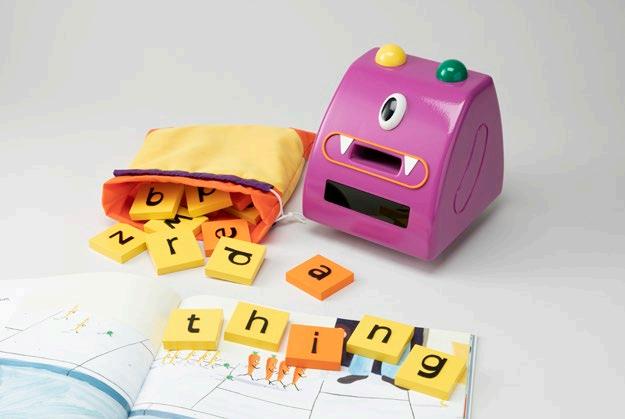

Reading is a fundamental skill needed by everyone, yet many children do not get the support required to develop this skill within the home. This can be for many reasons such as learning difficulties with the child or the parent, a lack of interest, or a lack of time dedicated to reading. With the increase of dual working households, this is leaving less time for family activities.
Riley the Reading Monster is a toy aimed to be used independently by a child so that they can learn phonics while a parent is unavailable to read with them. By pushing the letter tiles through Riley’s mouth, NFC is used to display the chosen letters on the screen with the phonetic sounds projected through the built in speaker. When the chosen word is displayed, the green button activates the toy to phonetically say the word and then repeats it in standard English.

A wearable device to assist small farmers and smallholders with sheep handling during the process of hoof treatment, by supporting the sheep’s body and front legs.


Hoof treatment is a vital part of sheep care, which involves catching and handling sheep to check for physical injuries and diseases in the hooves and treating them appropriately with tools and antibiotic spray. The handling process requires farmers to tip and hold the sheep in a sitting position, leaning over them to access each leg. Often hoof inspection and treatment has to be performed opportunistically on sheep in the field, meaning handling equipment must be portable.
Sheep Support is a foldable device on a rotating mount, worn above each kneepad. It uses an internal spring to apply pressure against the sheep, holding it in place. A shaped cut-out can support the front legs of the sheep. This allows the farmer to concentrate on using the tools necessary to treat hooves without worrying about holding the sheep in place.



A device aimed at improving the learning ability and wellbeing of university students suffering from sleep deprivation, through encouraging regular and constructive breaks from work.


University students lead a full lifestyle, managing high workloads, hobbies and social pursuits, all of which, along with other issues, can cause students to become sleep deprived. A lack of sleep can cause detrimental effects; for instance, an inability to remain focused or a drop in working memory, which can affect their work. One method that helps to reverse the effects of sleep deprivation during the day is taking regular, short and well timed breaks.
Fika collects sleep behaviour data during the night, and creates a routine of breaks specific to the user, based on their sleep quality. When performing university work Fika glows brighter – the brighter the glow, the sooner the student should take a beneficial break. These calculated and constructive breaks help to boost a student’s ability to learn, by improving short-term memory, productivity and concentration. Wellbeing is improved by helping to regulate emotional response and reduce stress and anxiety.


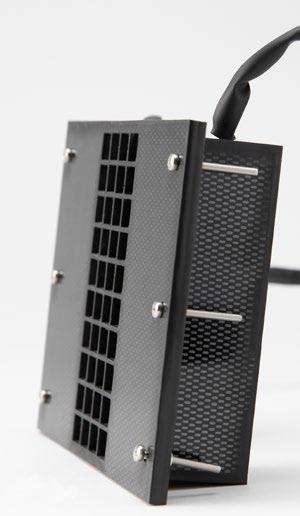

Improving the air quality inside Central Line trains in the underground services.
Air pollution is becoming a growing threat to the public health. Particulate matter is a composition of either small liquid and/ or solid particles. These pollutants are labelled according to their atomic sizes and are typically suspended in the air. These are considered to be one of the most dangerous air pollutants, its carcinogenic nature making it a contributor to lung cancer according to the International Agency for Research on Cancer (IARC). It is expected that there will be around 2.5 million cases of air-related illnesses in the next 14 years, damaging the country’s financial and health sectors. With the Central line being labelled as the dirtiest by Financial Times and Metro UK, this project aims to innovate a new technological product to improve the air quality within the trains. Gaining the ability to regulate the air condition within the underground services could improve the health and well-being of commuters, achieve a better user experience for the passengers and ease the losses of the UK government’s finances against air-related respiratory conditions.


PlanetBased is the all-in-one app that holistically integrates into users’ lifestyles to empower them to successfully reduce the environmental impact of their diet.
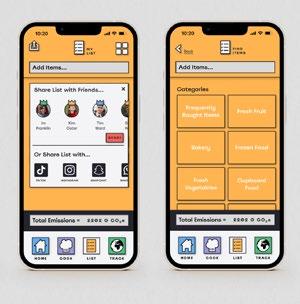

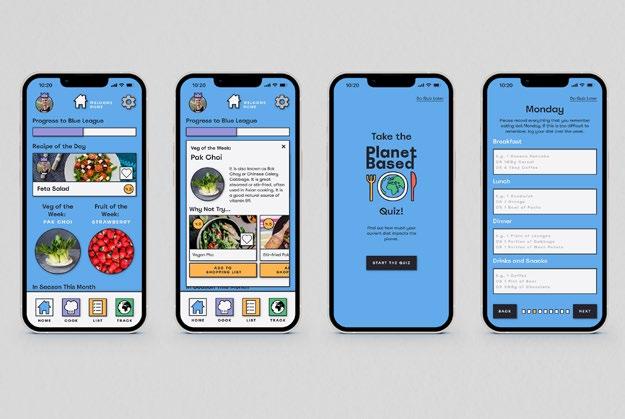
The UK population’s current diet means that the food system makes up a significant proportion of the anthropic environmental impact on the planet. Fortunately, many want to take action to reduce the environmental impact of their diet. In a 2021 UK-based study, 53% said they would like to reduce the environmental impact of their diet. However, 71% of those who expressed interest in reducing their impact said barriers prevented them from achieving this goal. PlanetBased equips users with a comprehensive set of tools to minimise these barriers while motivating them throughout the dietary transition process. These tools include a personalised dietary quiz, a catalogue of customisable low environmental impact recipes, an intelligent shopping list, informative dietary and food item comparison tools, a dietary management system that allows the user to track progress, and a support system facilitated by the PlanetBased community that unite like-minded people to work towards a common goal.


Titania is a board game and an app that provides climate education for the family.


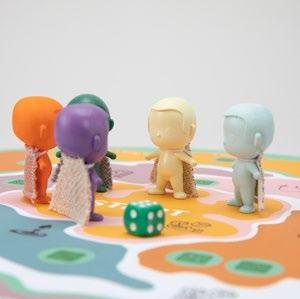
Titania was designed to offer climate education to all members of the family with the aim of offering them weekly tasks and assignments to provide them with sustainable development from a young age. The absence of climate education from the school curriculum has left students, parents and teaching staff wondering why informing children and adolescents about climate issues has not been made a priority by the educational system. Adult family members have also expressed a lack of knowledge on how they can be more sustainable in their daily lives. In their experience, constant exposure of the escalation of climate change is displayed on social media and television, without offering the audience ideas on how they can incorporate sustainability in their daily behaviour.
This product-service generates sustainable missions and integrates climate education with weekly family interactions through a mobile application, a board game and customisable characters.


A disposable razor designed to increase accessibility.


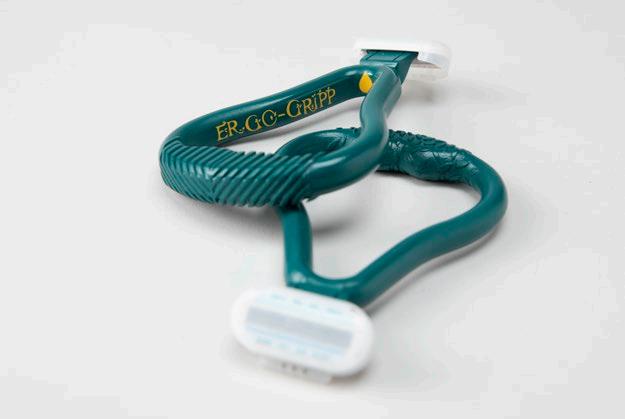
Shaving for those with concealed disabilities such as arthritis and dyspraxia can be painful, physically demanding, or unachievable. This is because shaving depends on the user’s range of motion in their hand, wrist and digits. This range of motion is often restricted by swelling, deformation and lack of strength, which can cause pain for the user whilst shaving. Having a dexterity issue can make shaving an intimidating task as poor grip and a lack of control can result in an injury.
Existing products are not designed with dexterity in mind, this is highlighted by companies choosing to design between the 5th and 95th percentile to ensure products are accessible to the vast majority. However, users with dexterity issues may fall out of this category so Ergo-gripp has created an inclusive product that will assist those with arthritis and dyspraxia to have a more comfortable and painless experience whilst shaving.

The VG Cart is a multifunctional farm aid that helps small-scale commercial growers plant and harvest produce more efficiently.
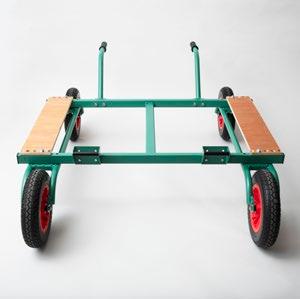
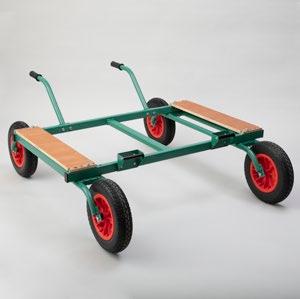
For the small scale growers and farm hands that work on one of the over 100,000 small farms in the UK, their work which involves planting and harvesting of produce is slow, inefficient and back breaking. Small farms use permanent bed systems that mean growers must crouch next to or straddle over the growing space on thin paths. Staying in these straining positions while lifting and moving equipment as they travel is very strenuous and currently there is nothing on the market that addresses these problems.
The VG Cart is a multifunctional solution, reducing strain for users by providing a seat while working and improving efficiency by reducing the need to constantly move equipment by keeping it all close to hand on a moving platform. The modular shelf system adapts to user needs, providing options for 2 person use, a more convenient way to transport equipment and a flat pack design. With a simple, robust design and replaceable components the VG Cart can reduce the rigours of farm life for years to come.




KALEID is an interactive kaleidoscopic projector that alleviates the daily accumulation of stress in young adults by facilitating play and creativity.


In 2018, 74% of people felt so stressed that they had been overwhelmed or unable to cope, with Millennials and Generation Z reporting twice as much stress relative to older adults. A lot of stress in the day accumulates due to work or education.
Play is a vast term encompassing many activities, from exploring the woods to doodling. It provides adults the opportunity to distance themselves from stressful environments, giving them space to assess how they’re feeling and heal. However, play is stigmatised and associated with immaturity, robbing us of a priceless tool. KALEID encourages people aged 18-39 to observe their surroundings on the way home, motivating them to befriend nature through collecting attractive flowers, leaves and rocks they find on the way. Once home they can place their findings within KALEID and customise the output with mirrors and filters in order to collate their creations projected on their ceiling.

Smart Walker is a walking aid that helps older people to improve their quality of life. It can reduce muscle energy expenditure and joint pain during walking to increase their walking rate (number of steps per minute).
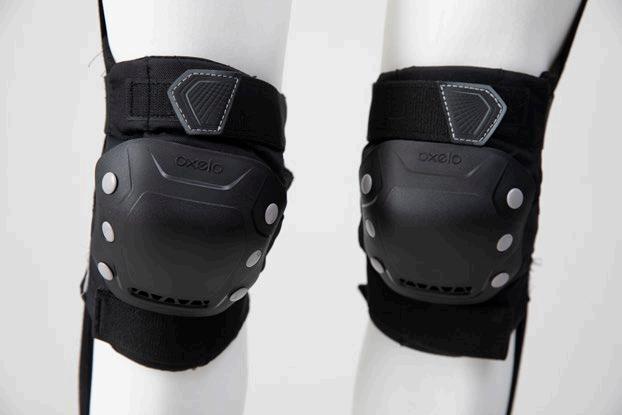
The concept of the Smart Walker is mainly inspired by the military human exoskeleton. A human exoskeleton is a mechanical device made of a steel frame that can be worn by a person to provide an additional aid to limb movement. Elderly people can rely on its strength to take pressure off their joints and assist with movement.

The support section of the Smart Walker is designed to help transfer some of the pressure to the upper body, thus further reducing the pressure on the joints of the lower body during movement, as well as acting as a support, helping elderly people maintain their balance.


MinaMina is a discreet, user-friendly device that allows users to reduce their migraine frequency and severity safely by themselves without medications.
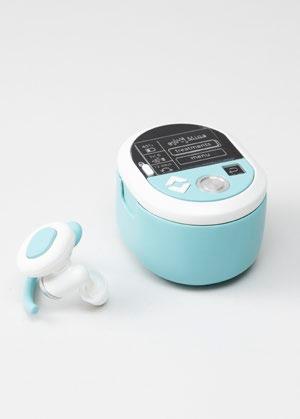
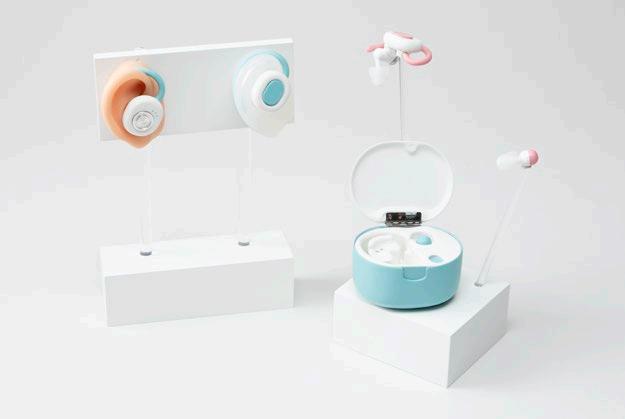
Frequent migraines are severely disabling for up to 80% of sufferers. Most sufferers develop Medication Overuse Headache (MOH) from taking migraine medications. They need effective nonpharmaceutical treatments to get relief without causing more pain.
Mina is a personal nerve stimulation device that reduces migraine frequency and intensity without medications or harsh side effects. Designed to be efficient, portable, and discreet, Mina lets people treat their migraines easily, wherever they occur. Mina modulates activity in the brain regions responsible for causing migraines by stimulating the Auricular branch of the Vagus Nerve with small electrical pulses. The stimulation is delivered via a comfortable and efficient wearable earpiece, that is wirelessly controlled by the charging case. The device synchronises treatment data with its companion headache diary app for migraine care that simplifies monitoring for both patients and healthcare providers.
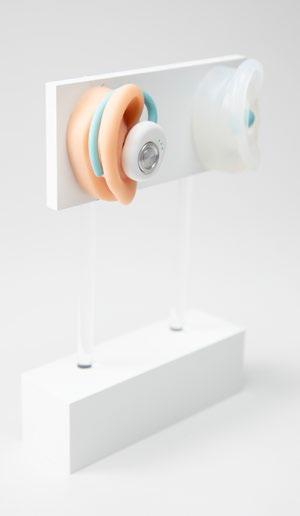

SONEAR is a product designed to improve the spatial awareness of deaf cyclists in the UK through haptic technology.


Cycling has become a growing form of transportation ever since the outbreak of COVID-19. It is a common skill that requires the ability of sensory perception and voluntary movement. However, the trait is not shared by all members of society, as those who are hard of hearing lack the critical sensory skill to hear whilst cycling. Research shows that deafness accounts for 68% of increases in misperception on the road, the leading cause of almost 70,000 road accidents per year.
SONEAR is designed to give deaf cyclists the ability to sense whenever a car is in their proximity. This is achieved through SONEAR’s adaption of haptic feedback technology, using ultrasonic waves to calculate the distance, positioning and speed of a nearby vehicle. Calculation takes no more 0.03 seconds to execute and once executed, integrated LRAs are used to produce rates of vibrational feedback to inform the user. The vibrations can increase in frequency and intensity the closer a car gets to the cyclist.


Encouraging change in the lifestyle of young adults affected by COVID through immersive outdoor gaming.
The COVID-19 pandemic has forced various lifestyle changes, especially with the people aged 18-36. These include reduced forms of physical activity, outdoor time, and social interaction. This project attempts to technologically appeal and encourage behavior change in these young adults through a popular entertainment activity: gaming. As various augmented reality optical-wear are being developed and a few geared towards gaming, it will not be long until we see this popular hobby turn into a form of AR gaming where the lines between the digital world and reality start to blur.
Elysium is a game design supported by a motion gesture controller for accurate physical motion recognition that translates into ingame commands and mechanics. This allows users to become their game character in real life and perform class-related motions in battle – encouraging physical activity and outdoor time without losing the trending social aspect of playing games.


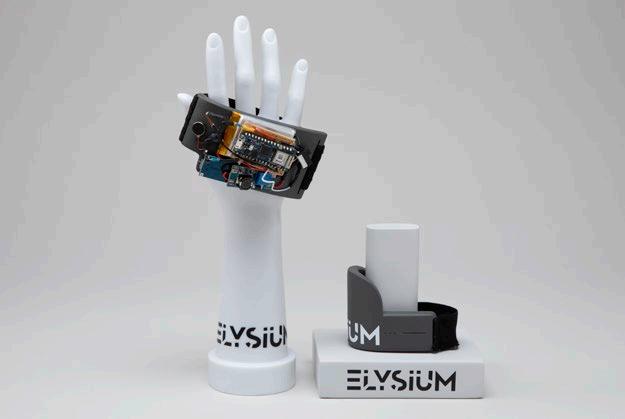

Daily food and drink management made commuter friendly.
Recovering from the pandemic, everyday workers are returning back to the daily routine of commuting and meal planning. Through the design of a modular product, the project aims to facilitate active transport and consumption of food and drink at work, whilst additionally promoting breaks.


According to research by Bupa, it is estimated that a third of UK workers eat lunch and snacks at their work desk. This statistic is only set to rise due to the insistence from health officials that workers respect social distancing in order to prevent the spread of COVID. This product offers a convenient solution for users to become more self-reliant, whilst additionally addressing our current throwaway society, by reducing the 11 billion items of packaging waste produced every year in the UK from consumers who purchase quick and easy food solutions.
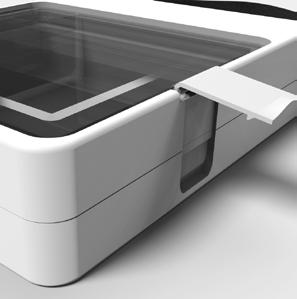




The first returnable food delivery packaging system in Indonesia, in collaboration with ALAS.

Despite various initiatives to reduce plastic pollution, 44% of the total pollutants in water bodies worldwide is still made up of single-use plastics, and 69% of this, comprises of take-out consumer items. By 2025, the number of food delivery service users in Indonesia will increase by 90.3% (39.2 million users), and the plastic waste generated from single-use plastic packaging will only increase as a result.
The new packaging offers 40% average reduction in CO2 footprint and energy consumption in material and production phases of its life cycle, as well as offering additional marketing benefits from the specially designed lid, integrating with the smaller compartments to have its leak-proof feature. With primary research data provided by the company and by conducting additional focus group, interactions, the pain points of the user journey were identified, and the product-service system has been redesigned for streamlined user experience.


3rd mode is an availability status indicator to maintain positive relationships between colleagues in coworking spaces.
Coworking offices are rising in popularity due to their flexibility and affordability compared to long term contracts. However, these spaces most significant dissatisfactory elements are noise and distraction. To remedy this, workers wear headphones. However, this creates a ‘fourth wall’ between the worker and their colleagues and a grey area forms where the status of one’s availability is hard to decipher. This uncertainty causes pain points for parties involved as the colleague can become anxious to interrupt, or the worker can react badly to the disruption.
This scenario is where 3rd mode intervenes. With a simple slot mechanism, the user can slide between communicating they are open to conversation or closed off to interaction. Fun, contrasting colours and physical differences between modes make the status evident to those around. The user would purchase the product to get a personalised pair, or the employer would provide them.




Using haptic feedback and gamification to improve the functional motor outcomes of home-based stroke rehab.
Remo is a wearable rehabilitation system for stroke patients recovering from functional motor impairments at home. Fulfilling the current demand for effective virtual rehab, brought about by long-term resource pressure on health services and recent COVID-19 restrictions.

Remo uses haptic vibration cues to provide live feedback to patients, indicating when the target range of movement or correct exercise technique is being achieved. This allows the development of neuroplasticity, both passively, when taking part in daily activities, and actively when following an exercise session on the Remo app. The ability to encourage and track the application of rehab-specific movement, within everyday activities, improves the adoption of movement learned through rehab. In turn, increasing the likelihood of achieving full functional recovery. The system helps patients improve self-management, with personalised exercise plans, data insights, and a progress diary within the Remo app.




Ecosutura is a surgical skin stapler designed to contribute to the implementation of green practices in healthcare institutions while still being an efficient and patient-focused device.
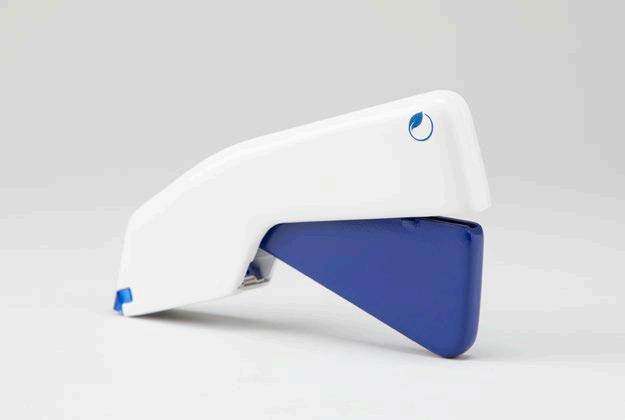
Nowadays, most medical devices ultimately become waste, resulting in 5 million tonnes of residue produced daily worldwide. However, the continuous growth of disposable medical devices, together with the low values of recyclability in the healthcare institutions, evidence a big problem for this industry. This situation has created a market gap for more environmentally friendly alternatives in the medical sector.
Ecosutura is used for skin closures after surgical procedures. Unlike most skin staplers, this device can be reused up to twenty times instead of being disposed of after surgery. Additionally, the design has been tested to provide the best usability to surgeons and reduce the risk of Repetitive Strain Injury, considering the comfort and safety when using this equipment multiple times. The staplers materials have been chosen to withstand the medical regulations and resist sterilisation at high temperatures.

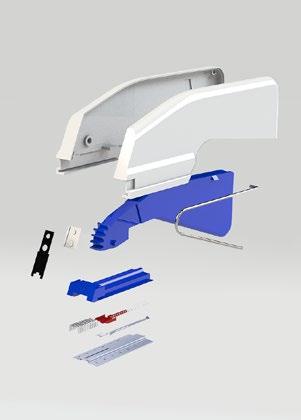

Muse is a toy that promotes creative and active play in children aged 7-11. It aims to inspire and develop imaginative minds through music creation; addressing the future skills for tomorrow.


Children are overconsuming technology more than ever, leading to them missing out on crucial creative and active play experiences. Less than a quarter of children receive the recommended 60 minutes of physical activity each day. If we don’t address the growing concerns of digital overconsumption in children, we could be faced with a generation of consumers, not creators.
Muse encourages creative learning and play at home through music creation. Children are encouraged to explore the outside world around them and record and collect sounds using the handheld controller. An innovative editing experience powered by motion immerses children of all music experience levels within digital environments, where they can mix the recorded sounds and create their own music. Either start from scratch or use one of the custom templates to explore sound and motion, curating mixes and memories. Share your musical adventures with family and friends.



Sandi is a sustainable off-grid toilet solution for rural SubSaharan Africa that uses dried natural powders as the flush medium.



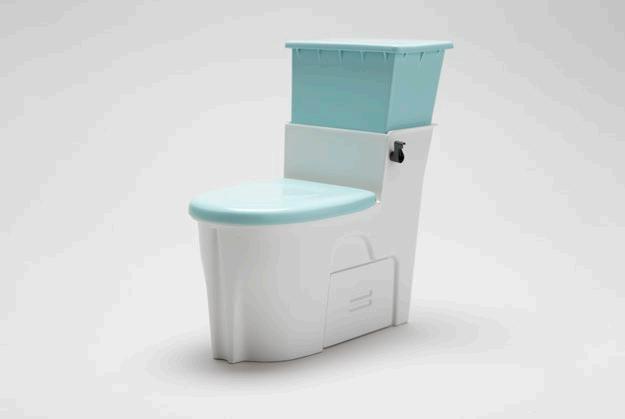
Safe sanitation is an essential part of daily life, and those who have it often take it for granted. However, it undeniably plays a crucial role in public health and allows sustainable social and economic growth. Current rates of progress predict that the world will achieve universal coverage of safe sanitation in the twenty-second century. However, 1.9 million deaths are still caused by poor sanitation every year, and 94% of open defecation is practised in rural areas.
Sandi is a sustainable toilet designed to meet the UN Sustainable Development Goal 6.2. It uses locally sourced natural dried material as the flush medium. Its purely mechanical design paired with container-based sanitation allows it to operate without infrastructure. Furthermore, using urine-diverting technology that separates waste streams allows for decentralised waste treatment that can produce valuable fertilisers and soil conditioners.

A smart ball and speaker device that creates early positive experiences of playing tennis for children through audio and visually interactive tennis games.

A decline in levels of physical activity is starting to be seen in both adults and children worldwide, with 80% of children preferring digital over physical play. This is particularly noticed in the decreased participation levels of individual sports such as tennis due to factors like lack of enjoyment or pressure to succeed. With physical play and having fun being essential for children’s mental and physical wellbeing. Theo is creating a more fun and interactive experience of exercise by introducing digital elements into the physical space of tennis.
The child chooses from the different game cards and inserts it into the device. With games suitable for on and off the court, the speaker will first explain the rules after which the ball will light up based on the game. The inertial sensors of the device will help the ball and speaker react to the children’s actions, making sport more fun and engaging.

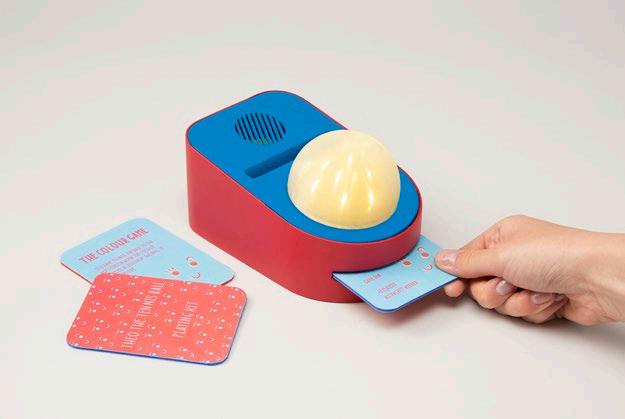

A wearable, actively-functioning device, to relieve the symptoms of sensory overload in autism spectrum disorder (ASD) individuals.
ASD’s are a group of developmental conditions that affect an individual’s ability to process sensory input. People with ASD’s lack the necessary filters in order to block out certain sensory stimuli and it builds up like a traffic jam, until they meltdown. This is known as sensory overload, and it is a distressing, panic-filled ordeal.
Wander is a concept that aims to help adults with ASD’s to live more freely. This device is subtly worn under clothing, and utilises highly effective deep-pressure proprioceptive input. It specifically targets reflexology pressure points on the shoulders and sternum to alleviate the effects of sensory overload. Wander’s active functionality, comes from a system that uses an ECG to detect changes in heart rate, and when elevated in a state of panic, the pressure will be applied. The shoulder pieces are removable, for added customisability and everyday practicality.





Abilitate improves performance and adherence to home-based physiotherapy for those with mobility loss, through electrical stimulation technology, progress tracking and virtual reality.


Following a neurological condition such as a brain injury or a stroke, individuals experience reduced balance and coordination, and strive to regain physical abilities. More than one in three face unmet rehabilitation needs after a brain injury and healthcare services are unable to satisfy demands. Consequently, substantial importance falls on physiotherapy at home. However, only 71% of patients follow their prescribed physiotherapy routines at home.
Abilitate is a wearable device and app that aims to ease the rehabilitation journey for users and parents. Together, they offer progress tracking at home through motion sensors, displaying this in the app. It provides electrical muscle stimulations (EMS) to improve muscle engagement during physiotherapy, remotely controlled by the physiotherapist. The app offers virtual reality games to increase physiotherapy and EMS engagement, as well as support and guidance for parents.
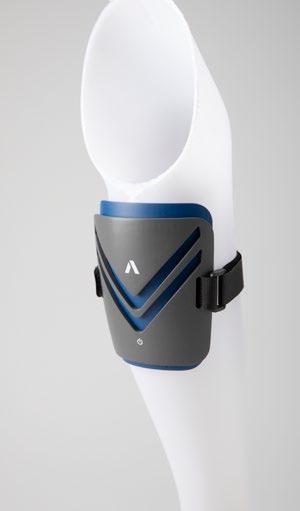
ChatterLearn is a voice-interface classroom smart speaker that helps develop verbal communication skills, encouraging collaborative learning via conversational AI and gamification.



Research has shown that improved verbal communication and collaboration skills positively impact academic outcomes, cognitive development, and a student’s sense of well-being, and confidence. Yet these skills are not a significant part of what happens in everyday classrooms, and current educational technologies (EdTech) do not cater to this. The ChatterLearn classroom smart speaker combines cognitive science learning methods with visual and auditory real-time feedback to encourage schools to integrate EdTech into lesson starter or plenary group activities. Teachers can upload quizzes wirelessly and mixed ability student groups discuss and share their knowledge to come to an agreed answer, inputting this verbally by holding down the central button. Friendly competition with other class groups to earn achievements through existing school reward systems encourages students to reach the set amount of correct answers first.


A replaceable, one-size-fits-all suitcase wheel designed for travelling adults to provide them with a quieter experience and an extension in the longevity of their suitcase.



“I was woken by a low, rumbling growl coming from the street below. It was the soundtrack to summer in Europe’s cultural capitals: wheeled suitcases being dragged over cobbles”. Like Nathan Brooker, who published the previous statement for the Financial Times in 2020, many people share similar frustrations regarding the noise produced by suitcases. In addition, the inability to easily replace suitcase wheels once they are damaged has a negative impact on the environment as users would have to send the product to landfill due to difficult disassembly. According to the Expedia Group, in 2021, 59% of travellers said that they were willing to pay more to make their trip more sustainable, which shows that being conscious of the environment is a priority for many travellers.
Unheard tackles both pain points; through a removable screw and a rubber suspension, the product is replaceable and, on average, 25.8dB quieter than a current suitcase wheel on stone paving.

Tempo aims to motivate and encourage patients with arthritis on the hands and wrist to perform exercises to build up muscles inbetween joints, providing pain relief.


Tempo provides osteoarthritis and rheumatoid arthritis patients with a platform to learn and play music. Exercises have been incorporated into several notes, which can be performed on the wearable device that provides haptic feedback in vibrations and light. Sensors integrated into the wearable device provide instant feedback to the app, measuring the flexion of each finger to play a particular note. Using physical and digital feedback allows patients to receive the optimum treatment suited to their personal capabilities. Challenges, warm-ups, tasks, and step-bystep learning modules have been integrated into the app to help arthritis patients perform these exercises, learn music and allow them to create their own musical ensembles. Providing a platform to learn to play music enables patients to build confidence, improve their social and mental well-being, and strengthen joint muscles, increasing their range of motion and minimising inflammation.


An accessible and personalised, modular on-boarding and retention product-service solution for online banking, focused on trust, competence, and autonomy.

LUCENT is a product-service solution which is an accessible and personal route towards using digital banking services comfortably. The solution is a modular on-boarding and retention service composed of four phases. Phase one is the customer outreach strategy, and phase two is the service on-boarding process, including a persona matching process. Phase three is the modular educational program which is formed of three key stages; trust, competence and autonomy. Phase four is the user retention strategy, involving customer services and maintenance.
The main component is the platform, a software application which integrates the functionality of a typical online banking application with personalisation and education features tailored to less digitally-abled users. The trust stage is centred around ‘The Tool Kit’, an informative help package. LUCENT was developed to provide an all new bank brand, focused on trust.



Protex is a modular, padded short, offering customisable and comfortable protection.



Sports participation of adults aged 16+ rose from 60.9% to 62.8% in 2022. Keeping active keeps the body healthy and the mind sharp. However, exercise can also be detrimental with the possibility of injuries as insignificant as a bruise developing into a more severe injury. With long term injuries negatively influencing mental health.
Protex utilises a polyester lycra blend short, to create a skin-tight fit, strengthening and supporting the surrounding muscles. The four way stretch polyester anchors the padded sections to the body creating a streamline fit. The padded insert is comprised of an EVA foam layer in combination with a rigid D3O outer foam offering a flexible but tough barrier. Protex’s construction makes it fast and easy to change the padded inserts. This customisation allows the wearers to alter the special pads, depending on the sports and the level of comfort required.

A solution to aid in the maintenance of proned ventilated patients within the Intensive Care environment.


Prone therapy, which involves rolling a patient onto their chest to improve their oxygenation, has been demonstrated to reduce mortality in ventilated respiratory patients by 50%. However, proning puts everyone involved at risk due to the current methods of maintaining the proned patient once in the prone position.
EverProne consists of three ergonomically constructed mats formed of independently controlled chambers that are placed at the proned patient’s chest, abdomen, and feet. The chambers use alternating pressure technology to distribute pressure across the body, reducing pressure sores from forming in sensitive areas. The wheeled unit includes a CPR response that deflates all chambers instantaneously, making CPR safer for both the staff and the patient. The screen will notify the nurse when the patient must be moved to the next position and will adjust the height of the chambers accordingly. Manual adjustments can also be made by the care team, adjusting the chambers to meet the patient’s needs.
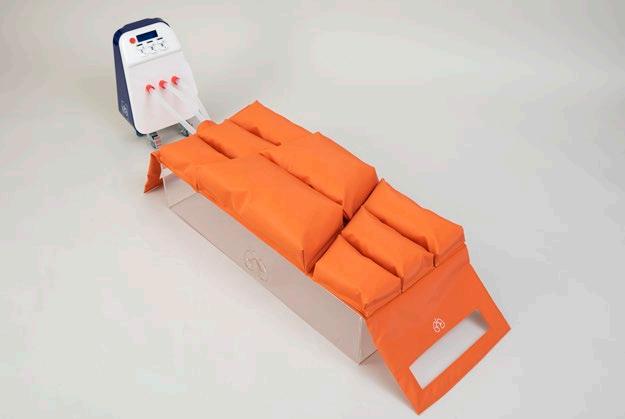

Bounce is an app-based service that aims to support teenagers who have experienced family separation and guide them toward improving their mental health.
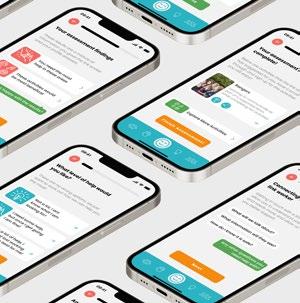
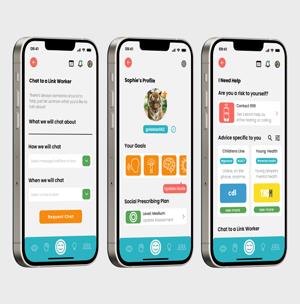


Millions of teenagers experience family separations every year; these circumstances can leave teenagers emotionally scarred with potential negative implications later in life. Bounce aims to provide an educational, interactive, instantly accessible, and personalised support system.
Through social prescribing, Bounce’s link-workers will assess teenagers needs and refer them to local non-clinical activities that assist in improving their well-being and self-confidence. Using Plutchik’s wheel of emotion, teenagers can identify their emotions and follow a process that allows them to untangle their feelings and take action towards resolving them while increasing emotional intelligence. An online community allows teenagers to share experiences, support one another and destigmatise family separation, and the library enables teenagers to understand their current circumstances.

Simplistic, low cost products for theatre directors and audiovisual (AV) designers, that enable accurate synchronization between performer’s actions and audiovisual changes in live performances.
The products make it possible for actors to change the audiovisuals by themselves, whilst on stage (e.g. play a shooting sound right at the second it is acted). The product is easy to set up, control, and affordable for low budget projects.
AVCTL B (button) - Discreet body mounted and easily disguised button. Activates the audiovisual change once pressed.

AVCTL U (ultrasonic) - The device is activated when actor steps into close proximity, thus initiating the change in audiovisual.

Devices are set up through software which can be connected to other software commonly used in theatres. During live shows the devices are overlooked from the control room.
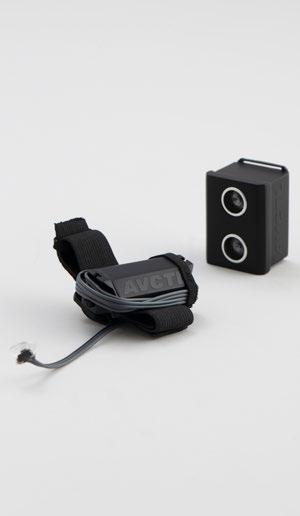

Computer based design methods takes the form of a series of integrated projects exploring multiple software packages for CAD visualisation, simulation and reverse engineering.
The projects have an automotive theme, starting with a blueprint, a model car is created using surface modelling techniques. The scale models are 3D printed in high resolution and the digital design is tested using a virtual human testing environment. Within this testing environment, a number of human interaction studies are completed, focusing on lifting, comfort whilst operating the vehicle, and vision (what the driver can see from within the cabin). A lifting jack is prepared and analysed whilst raising the car previously modelled. The car jack parts are tested using finite element analysis (FEA) and motion studies within SolidWorks, combined with optimisation studies to reduce the material requirement whilst maintaining a suitable factor of safety.
The second project introduces thermo-fluid theory, flow simulations and computational fluid dynamics (CFD). Tutorial exercises are completed, introducing the concepts of the virtual testing platform ANSYS and conducting flow simulations including heat transfer. The final simulation involves testing the car modelled in a virtual wind tunnel and making some improvements to the aerodynamic performance.
The module is popular with both staff and students and creates a fantastic opportunity to showcase CAD/CAM/CAE skills with multiple industry standard software packages as well as learning new skills in virtual prototyping, modelling and simulation.
Every year the standards go up and the quality of the models improves. Only this year we have quite a collection of automobiles, ranging from Fords to Ferraris.
With a reputation for impressive CAD models, this year’s Brunel cohort created a broad range of models, from F1 cars to iconic film automobiles. Here, a collection of 3D modelled cars produced by final year Computer Based Design Method students are seen.
From the beginning of Term One, students start with a blueprint of their chosen car, and through a surface modelling software, create a detailed replica that is later used to perform virtual human and CFD simulations to improve the performance and efficiency of the cars.

1. Bilal Chaudhry
2. Connor Ray
3. Jordan Evans
4. Edward Cray
5. Shin Heryll Mejia
6. Kripa Gurung
7. Rahima Begum
8. Jess Logan
9. Anduena Bardhi
10. Archie Read
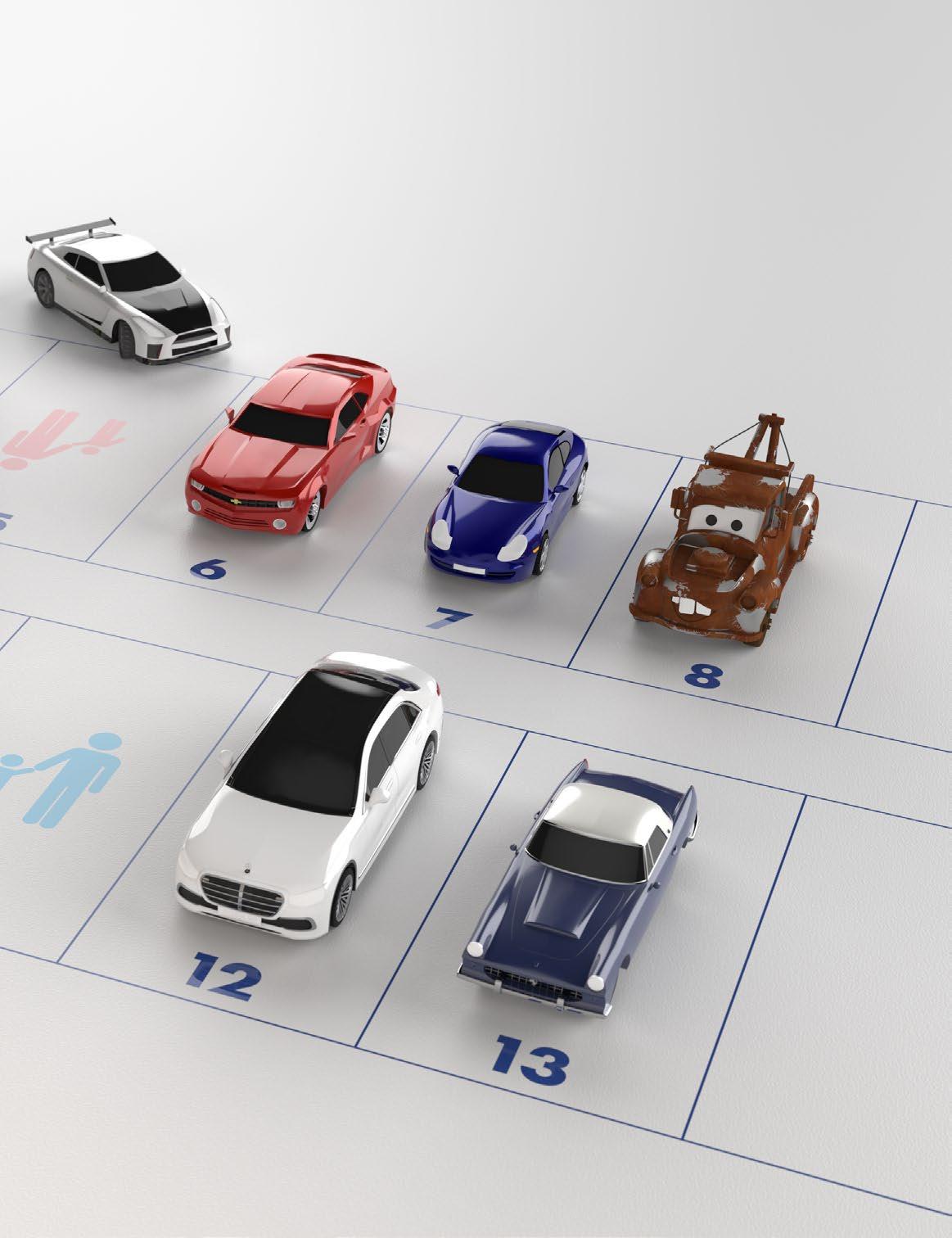
11. Henry Copeland
12. Wysiana Patricia
13. Lyn Tan
Launching a new product or service into a new market is a high-risk strategy. Scholars estimate that 60-90% of start-up companies fail to satisfy the anticipated requirements of potential customers. Innovation in design is one of the strongest driving forces for successfully launching new products. The Design & Innovation, Management & Process (DIMP) module explores relevant entrepreneurial principles, theories, and methods for organising and managing significant design and innovation activities. Delivered over two terms, it seeks to develop students’ strategic planning skills and encourage entrepreneurial thinking. By examining how start-up companies are created and how risks of failure are minimised, students develop independent research skills and their ability for critical thinking.
The topics that are taught as part of the DIMP module include: Innovation Management and Entrepreneurial Strategies, Open Innovation and Consumer Collaboration, Managing, Sustaining and Financing Innovation, Branding and Marketing, and Creating and Funding a Start-up. Students benefit from being taught by both academics and world-leading industrialists with a mix of theoretical content and real-life industrial experiences shared by serial entrepreneurs, c-suite executives, and seasoned international consultants.
The module aims to develop students’ capacity to apply knowledge, tools and techniques to the creation of unique business models for their designs; they identify appropriate marketing strategies and communication channels to deliver strategic plans effectively. By the end of the module, students will have developed an understanding of the relationship between design and innovation practice, and will be able to use knowledge of economic, environmental, and social factors to identify and target new opportunities for design and innovation projects.
The DIMP module is associated with the complete range of knowledge, principles, theories, and methods relating to undertaking the organisation and management of significant design and innovation activity.
Taught by both academics and world-leading industrialists, students gain a theoretical understanding of innovation management and entrepreneurship. Students learn from the reallife industrial experiences shared by serial entrepreneurs, c-suite executives, and seasoned consultants.
As part of the module, students are tasked with creating a business plan for their major project. This includes determining their target market, identifying value propositions, and evaluating the most appropriate means of generating revenue from their product design.
The assignment helps students develop strategic planning skills and encourages entrepreneurial thinking. As part of the assignment, they must clearly define the problem or opportunity that they have identified in the market and explain succinctly how their product design differs from existing solutions.

In simple terms, ‘embedded systems’ involve ‘single-chip computers’ that can be found in a multitude of products worldwide. In Term 1, the module offers a series of practical labs to acquaint students with a mid-range PIC microcontroller – this includes the implementation of algorithms required for passive hardware to be turned into a smart device. Whereas Arduino is often used for developer-friendly rapid prototyping, PIC is an example of a microcontroller that can be found in commercial products.
The Term 2 project offers a chance to explore PIC-related technologies of your choosing to design and build a custom embedded system for any application you like. This is a demanding project intended only for students who are comfortable with year 2 electronics, CAD and fabrication techniques, C programming, and the application of mathematics in practical situations. This module requires a significant commitment in terms of time and effort, extending way beyond the duration of the weekly lab sessions.
Embedded Systems provides opportunities for students to develop and demonstrate knowledge, understanding, practical design skills, and other attributes in the following areas: 1. Practical applications using embedded systems design techniques; 2. Use of appropriate technologies based on industry-provided data; 3. Understanding of embedded systems theory and design principles; 4. Ability to propose, design, build, programme, test and demonstrate a completely custom-made product independently.

Spectrum is a wellbeing task light for people that work from home, using RGB LEDs that create lighting conditions to match the body’s circadian rhythm.
Spectrum utilises two modes to allow users to have complete control over lighting conditions. In Automatic mode, the RGB lights use a timer to match the colour temperature of the sun throughout the day to match the body’s circadian rhythm alongside using a Light Dependant Resistor (LDR) to increase brightness if the room is dark.
Manual mode uses three variable resistors to adjust the brightness for each of the Red, Green and Blue channels to allow the user to change the colour and brightness.
Spectrum uses a simple to use interface and buttons alongside an adjustable neck that changes height and length, as well as rotating to give the user complete control over where the light is coming from. Having ideal lighting conditions allows users to improve productivity, have less fatigue throughout the day and improve quality of sleep.



This device reminds children and teenagers to wear their dental retainers each night. The device prompts the user by increasing the saliency of the retainer when brushing their teeth. The device also reminds the user when they last wore their retainer.

When children and teenagers get their dental braces removed, many will be asked to wear a retainer in order to keep their teeth straight. By providing immediate feedback to the user, such as lighting up the retainer stand and displaying text instructions on the LCD, the device reminds the user to wear their retainer, forming a long-lasting habit.
The device has been designed to wake up from sleep mode when the user removes their toothbrush from the cup. When the user removes their toothbrush, the device detects whether it is the morning or evening and displays the appropriate instruction (e.g. “please pick up you retainer”). Once this action has been completed, the device congratulates the user, positively reinforcing the habit. When the toothbrush is returned, the date last worn is then read from the RTC and displayed, providing long-term feedback to the user.
The device is battery operated to enable use in a bathroom setting. In order to save power, the device will enter sleep mode 30 seconds after the user’s toothbrush has been placed back in the cup.
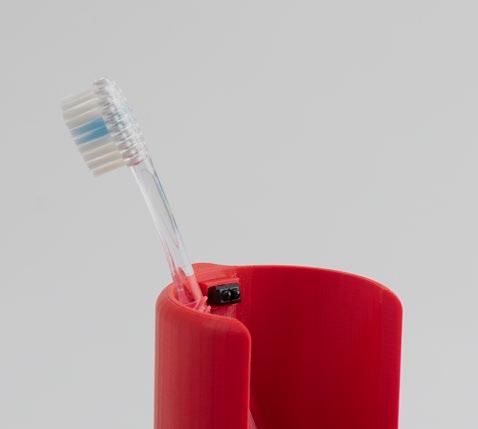

An interactive game for stroke patients to stimulate the brain and provide upper limb rehabilitation physiotherapy. The device helps users practice their reaction time by moving their arm into a set position depending on the position of an LED.


Stroke rehabilitation is a combination of physical and mental stimulation. By using LEDs to instruct the patient where they need to move their arms, it retrains the brain to communicate movement. Repetition is key to making sure the effects of the physio are permanent, hence why a game will make the rehab more successful as it encourages enjoyable repetition.
The device fits to the back of the hand and the user must move their arm in the orientation of the corresponding LED. When the top LED lights up, the user holds their arm flat with the palm down. The arm must be titled left, right or face up when the other corresponding LEDs light up.
The game will end if they have not held their hand in the correct position before the light turns off. They win the game if they have completed all rounds perfectly. This simple exercise encourages patients to regularly move their arms and rebuild their muscle and mental stimulation.

Exercise Pal is designed to gently remind older adults diagnosed with osteoarthritis to move and exercise troublesome joints.
More than 10 million people in the UK have osteoarthritis or similar conditions that affect the joints. One of the best and easiest ways to help slow the deterioration of the disease is to integrate regular light exercise into people’s daily routine. However, it is common for users to forget to dedicate time during their day to exercise specific joints that are not exercised with general daily movement.
The developed works-like prototype seeks to aid users in reminding them to lightly exercise for a user-settable number of times per day. The device will sound a gentle reminder to the user, which can be addressed by holding the exercise ball and engaging in light exercise triggered by motion. The purpose is to mock up an MVP to test the idea with target users later – if successful, potential further development could include the recognition of specific movements and gestures and the introduction of an app.


The prototype is based on the PIC16F1847 architecture. It utilises a 3-axis accelerometer to detect movement, an LCD display to provide feedback and context to the user, and a RealTime Clock to time keep the exercise alerts, track completed exercise minutes, and count the date and time.
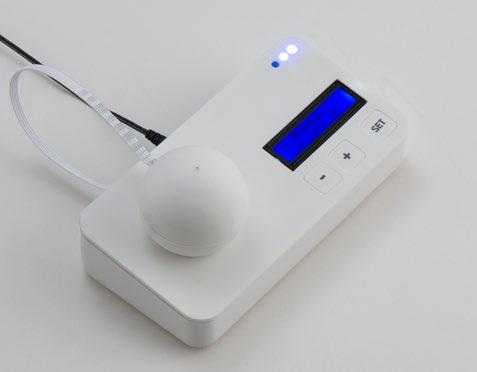

Aura is a meditation and mindfulness tool that takes the user away from the screen of a smart device during meditation and replaces it with light patterns to help them drift into the right headspace.
The heart of the meditation device is a 16F1847 PIC microcontroller which was programmed in C and controls all the operations of the embedded systems project. The hardware interface also includes an LCD display where instructions and messages appear, two buttons, one ‘Select’ and one ‘Enter’ button, seven LEDs that light up based on the mode selected, a pulse sensor and an ON/OFF switch.
The product features meditation, breathing and focus modes, each with a different light pattern to be followed during the session. As lights turn on and off, the user is supposed to follow their patterns while breathing or meditating, directing their focus to the lights instead of outside thoughts. The integrated pulse sensor will let the user take their pulse before and after the session so that they can track the effect of the mediation.
The physical working prototype contains the PCB and components inside an easy to hold, round device with a simple interface, mechanical buttons and a subtle screen. The device has a clean design and can seamlessly integrate into a home environment.

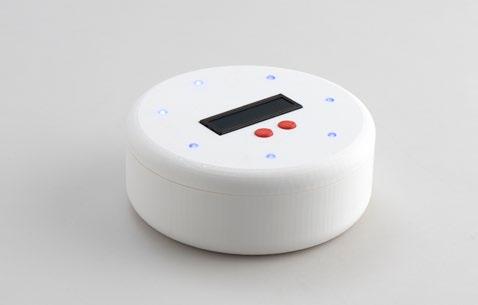


This system device is designed to both remind and monitor the taking of medication for elderly people living at home.


The device is designed so that the carer will be able to place the pills inside of the drawers, in morning, midday and evening slots. The carer will then be able to select a time for the device to alarm for each of these slots, ensuring that the time works for the resident.
Once the time is equal to the time the carer previously set, the piezoelectric buzzer will alarm using pulse width modulation, and the LED will illuminate below the required drawer. The IR sensors will detect that the drawer has been opened and, if not the alarm will continue to sound, with the screen displaying how late the person is to take their pills. After 30 minutes, the alarm will turn off and the screen will show “Pill Missed”. This will inform the carer that a pill has been missed throughout the day.
The device will also show the time of next pill, to remind the resident the time that the device will next alarm. This process is repeated for the midday and evening pill slots. The carer is able to reset the timings of the pills by pressing the reset button.
There are good prospects that the next few years are the period when the world finally faces up to the challenges of climate change. Governments are committing to greater carbon reductions, and global fossil fuel providers like BP are pivoting their business models towards renewable energy. Balanced against this is the growing global demand for products and services, and the associated pressure on resource use and waste production.
The Environmentally Sensitive Design course at Brunel aims to develop an understanding of current environmental problems, and guide students to integrate design strategies, approaches and tools to design lower environmental impact products and services. Approaches explored include eco design, design for behaviour change, emotionally durable design, biomimetics, and designing for a circular economy. Students are encouraged to adopt a broader perspective on design for sustainability, not only focused on products but also on innovation in services and business models.
The goal is for them to be able to integrate these elements into a personal position on environmental matters, so that environmental issues will play an integral part in their professional design careers.

A single-hob cooker that targets the associated toxic materials, high energy usage and encourages environmentally conscious behaviour through a paired PPS system and remote functionality.
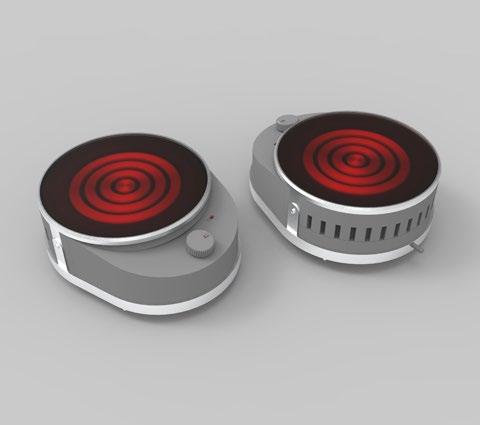
Cookers are used by all, multiple times a day accumulating a very high embodied energy. Investigations highlighted that this originates from the materials, lengthy use phase and the disposal of the cooker.
Issues with materials were solved by an overall reduction in quantity used, changing to a mechanical dial and implementing consistency in material selection. This was done by following the form of the pots and pans more closely, and with the reduction in the types of materials to mainly ABS and Aluminium. It removes the majority of the toxic materials from excessive electronics and isolates those left so they are easier to deal with post-life.

Modularity has provided many benefits where the user is able to safely access components for easy maintenance and repair. Modules can be posted separately to the original producers to properly replace or dispose of, meaning durable or toxic materials are dealt with collectively.
Finally, a combined Lease and Pay-Per-Service PSS system provides economic incentives for conscious behaviour. The manufacturer retains ownership, incentivising them to be involved across the cooker’s entire lifespan. The user pays a subscription every month that includes the cost of the cooker, app access and an allowance of meals with different energy levels.

This is a single-blade, multi-functional shaver and trimmer which is designed to target the environmental impacts caused by the previous generation foil shaver.



Conscious of the design criteria, it was essential to consider ways to mitigate the power output generated by the appliance and reduce resource consumption. The inspected product has been fully disassembled, the performance of which has been illustrated through a system boundary diagram. Based on the streamlined LCA, it has been established that the most severe impact is generated during the material extraction and processing, yet every one of the phases has been considered in the re-design.
Referring back to the LCA assessment, the life cycle phases have been ranked concerning the environmental impact they deliver, based on which the re-design ideation has been formulated outlining their pros and cons.
The outcome is an incremental innovation that features an active distance sensor that triggers the motor, reducing energy consumption during the use phase that is wasted whenever the user does not operate their appliance.
Moreover, the head has been radically redesigned, maintaining the manoeuvrability while decreasing the number of components utilised in its assembly and the device’s configuration, which has been revised to provide a cordless module with a reversible assembly configuration.

The Electrical Waxing Roll-On Kit was disassembled and put through a life cycle assessment and qualitative analysis to investigate potential areas for a redesign.
The Electrical Waxing Roll-On Kit’s function enables users to remove unwanted hair in the comfort of their homes. The kit contains an electric heating device, consumable wax refill cartridges, consumable depilatory strips, and consumable finishing wipes.
Subsequently, the redesign was focused on reducing the number of parts, redesigning the consumable parts to minimise waste, reducing the energy used per treatment, and increasing product longevity. The outcome was a home sugar waxing kit containing a non-electric roll-on applicator, reusable depilatory strips, water-soluble sugar wax, and a glass storage container.

Many changes were made to the design to reduce its enivronmental impact. For example, almost all consumables are now reusable and decomposable or recyclable at the end of life. The only consumable, the sugar wax, is decomposable and water-soluble for lower environmental impact disposal. In addition, all electronic components were removed. Instead, a removable silicone wax pouch is heated in a microwave. The new applicator holds enough wax for only one use, reducing the energy required to heat the wax and material to produce the applicator.


This project focused on creating an environmentally sensitive redesign of a blood glucose sensor kit.
This is a diabetes care product which includes a small sensor applied to the arm that provides continuous blood glucose monitoring for 14 days, with the rest of the kit including an applicator and housing for the sensor. Currently, the entire kit is single-use and so reducing material impact and increasing product longevity were identified as a high priority when redesigning.
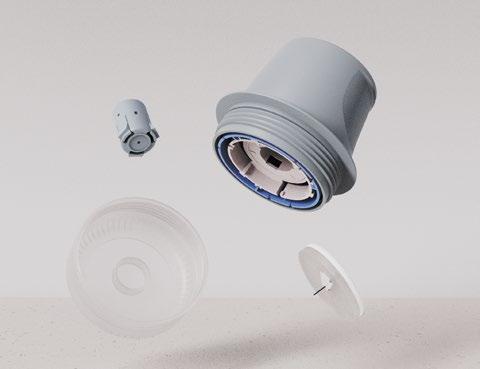
Design for Manufacture and its medical applications were kept in mind for the final design, creating a realistic and more sustainable outcome. The sensor applicator was changed to be reusable by implementing a removable needle module that can be disposed of separately, while the sensor housing material was reduced significantly.
These changes meant a new product-service system was able to be implemented, with each month new sensors and needle modules being sent to the user, while a take-back program for the used components would reduce the end of life impact. In total, this resulted in a 60% decrease in both energy usage and carbon footprint at first purchase and dramatically reduced the impact over its product life.
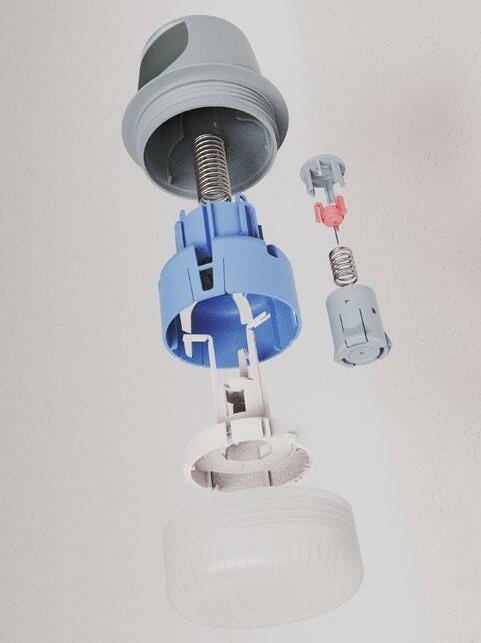

Addressing and improving the environmental impact of a domestic blade coffee grinder, with a focus on its full life-cycle from raw material impact to use phase and disposal.


Coffee is the most popular drink in the world, with around two billion cups consumed everyday. Of these cups, around 80% are prepared at home, leading to a large and growing demand for specialist consumer appliances such as coffee machines and grinders.
A streamlined life-cycle analysis identified raw material and use phase as primary contributors to CO2 and energy use of the coffee grinder, with the bulky ABS casing and the low efficiency, high-powered motor being the most significant contributors. Qualitative analysis also revealed some other redesign priorities to be reducing behavioural impact and optimising the product for disassembly and repair.
After an ideation process, the highest influence and most practical ideas included replacing the blade mechanism with burrs, reducing the motor size, and reducing unnecessary material volume. Other influential ideas included the use of lower impact polymers, bio-based polymers and the introduction of product-service system options to optimise disassembly, maintenance, and end of life.
These design changes were implemented into a final redesign that showed a significant theoretical reduction in energy and CO2 impact over the product lifecycle.

Vapora is a clothes steamer product-sharing service that aims to minimise individual purchases, reducing the demand for new goods, and decreasing waste disposal.


Clothes steamers are used for quickly removing wrinkles from fabrics with the use of high temperature steam. The popularity of this device has increased during the past years, raising a competitive advantage over ironing.
A full analysis was carried out on a clothes steamer to establish a complete redesign process. Product disassembly, qualitative analysis, and a life cycle assessment were carried out to uncover potential design improvements. Through the results obtained, the principal areas targeted were consumer behaviour and product life optimisation.
The product design and material selection were developed to benefit the maintenance, durability, and end-of-life aspects. For the heating plate, recycled aluminium provides a more energy-efficient choice than extracting pure aluminium. For the body, handle and hanger, polypropylene has been selected due to its recyclability, durability, and resistance to high temperatures and humid environments.
The initial analysis of the steamer resulted in a holistic design strategy that uncovered opportunities for improvement and optimisation in multiple areas. The pay-per-use system raises user consumption awareness, which is directly correlated to energy wasted. These changes have allowed for a more durable, economical and eco-friendly solution.
Human Factors is a Level 3 module for Design students. The module introduces and guides students to systematically understand and apply Human Factors for the design and evaluation of products, services, and systems. To enable students to develop a complete and integrated understanding of people from a physical, cognitive, and social perspective, the module is structured in four sections:
Understanding the human body and its main systems: This section includes anthropometry, biomechanics, physiology and the perceptual systems. Understanding the cognitive system: This section includes information processing, the evolution of the human modular cognitive architecture, decision-making and human errors. Key areas of applications of human factors in design: controls and monitors, stress and workload, health and safety, design for health, and design basic principles such as mental models, affordances, constraints, and natural mapping. User centred methods for design and evaluation: this section covers topics such as task analysis, evaluation techniques, and techniques for user research.
Students engage in two assessed tasks in the module including presentation, teamwork, and design reports. In Term one, a group-based assignment brings students to identify an area of human activity that is either not supported or partially supported by existing products and services. Analytical concepts and frameworks are applied at this stage to pinpoint requirements and attributes that are developed later in the module. In Term two, students work individually to develop detailed concepts, though a human-centred and iterative design process that involves real participants. The introduction of some empathy tools enables students to understand design requirements from the perspective of those who may be differently abled.
This module contributes to the development of competences and sensitivity that capture the multifaceted nature of the human experience, and to ensure that Brunel Design graduates are competent in designing products and services that originate from and fulfil people’s requirements.
Dr. Gabriella Spinelli

A collapsible and wheeled water container that makes the movement of large volumes of water easier for campers with musculoskeletal conditions.
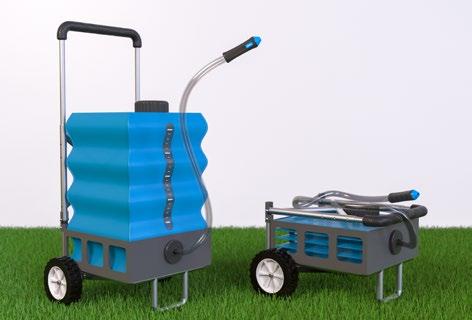

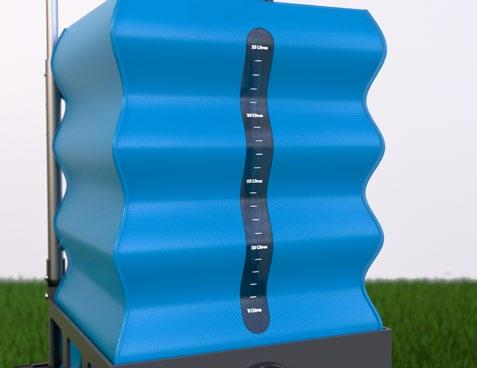
Camping is a highly popular form of tourism, with a total of 14.33 million domestic camping trips in Great Britain in 2019 alone. While camping, the campers are responsible for the collection of their own water for cooking, drinking, and cleaning; an essential amenity for maintaining a comfortable standard of living.
Most campers choose to pitch their tent away from the site facilities, such as the toilets and water taps due to the heavy foot traffic, disrupted soil, and smells. This means that when collecting water, they must transport the heavy container large distances over grassy, uneven, and muddy ground, a task that can be particularly troublesome for people with pre-existing musculoskeletal conditions.
The design solution is a wheelable, large capacity water tank that allows users to easily fill and transport large volumes of water at a single time. The inline pump system means the users can decant from the tank without having to elevate it or bend down to use a spigot. The product can then be collapsed to a significantly smaller size to be stowed away for transport or storage. The included Human Factors principles make for a user-friendly product that streamlines the water collection process.

This thermostat controller aims to support older adults in maintaining safe temperatures within their homes as part of a safety-focused heating system.
Older adults have increasingly poor temperature discrimination and lack precision in adjusting their thermal environment, putting them at risk of contracting coldrelated illnesses. As older adults spend the majority of their time inside, it is important to consider the heating of their homes. Current evidence suggests that temperatures below 18ºC can cause an increase in blood pressure and increased risk of blood clots. Existing thermostats do not provide visual feedback on whether the current room temperature is within a safe temperature threshold and do not support the user in creating and maintaining a safe environment.
The redesign concept is split into two sections; the top signifies the target temperature and the bottom signifies the current temperature. As the user twists the top section, the target temperature is set and the colour will change from red to blue (too hot or too cold, respectively), giving immediate feedback on the user’s thermal safety. Users can watch the bottom section (current temperature) gradually change colour to match the target temperature. This reinforces the change in room temperature, even if users have limited thermal perception. The increased saliency of the room temperature and the thermal safety feedback provided ensure the user is comfortable and confident in managing their home heating system.



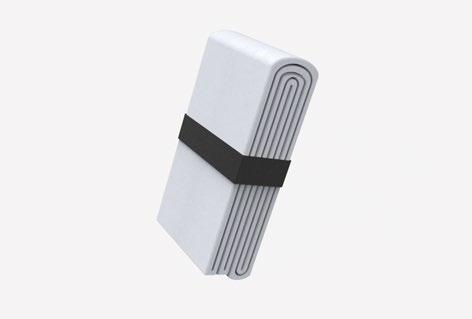
Backpacking is a popular form of low-budget tourism. In 2020, there were 10.75 million backpackers in the US, and this number is steadily increasing.
Hedonic and utilitarian motivations encourage backpackers to rest in shared accommodation, such as hostels, during their trip. However, this form of collaborative consumption has many issues. Research found that privacy, security, and personal space are desired among backpackers and there has been a high demand for hostels to improve these qualities. A lack of privacy results in poor sleep quality, which negatively affects the user’s behaviour, emotion, and cognition. Studies show that the importance of sleep quality contributes to the tourist experience significantly.
Sense Sleep is an efficient, low-cost solution for backpackers resting in shared accommodation which solves the need for privacy to provide more comfort at night. Sense Sleep is a portable bed divider and privacy tent in one, which can accommodate for three levels of privacy. At the highest level, Sense Sleep creates a noise-dampening (60dB > 40dB) and light-blocking (200 lux > 8 lux) enclosure to give users privacy since light and sound are the most common stimuli disrupting sleep. The multiple features and flexibility of Sense Sleep enables users to have a peaceful night without any unwanted distractions.



Night time hazard detection system. This project focuses on the dangers of driving at night and how these dangers can be minimised.
Research highlighted three key aspects which were most detrimental to night-time driving: fatigue, glare, and poor visibility. Poor visibility is the only danger that is universal, and therefore became the focus of the project.
The proposed solution aims to improve the driver’s situational awareness whilst minimising mental workload. It makes use of night vision cameras in combination with an algorithm trained to recognise potential hazards on the road or at its edge. These hazards are then highlighted on the driver’s windshield through a heads-up display (HUD). The entirety of the product has been designed in order to minimise any additional stressors on the user’s mental workload, mainly through use of the HUD which allows drivers to keep their eyes on the road rather than being distracted by a screen. Materials chosen had to be unlikely to reflect light where controls were kept to a minimum. Those that are essential are simple, and present physical or visual feedback. Intervening at the first level of situational awareness, this product allows a driver to identify a hazard before its too late, reducing the likelihood of an accident.

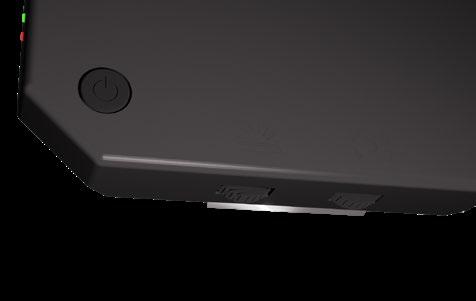
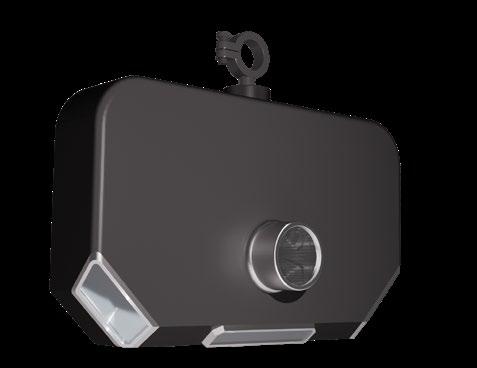

Supporting children within the early years age range in the development of effective handwashing practices.
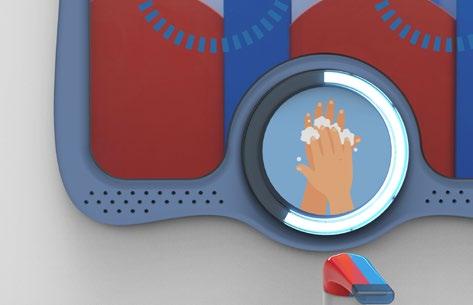
Ineffective handwashing increases the risk of spreading infections. Therefore, the early years’ education curriculum aims to teach children (3 to 4-year-olds) good handwashing practices, thereby also developing their independence. However, current teaching methods and the artefacts used require high staff involvement, reducing the efficacy of the learning process.
In response to this problem, the children’s handwashing station has been redesigned to fulfil the requirements of the primary user. The final design supports three aspects of the learning process: the time of washing, a comprehensive set of motions that ensure hygienic handwashing practice, and feedback on the effectiveness of the technique.
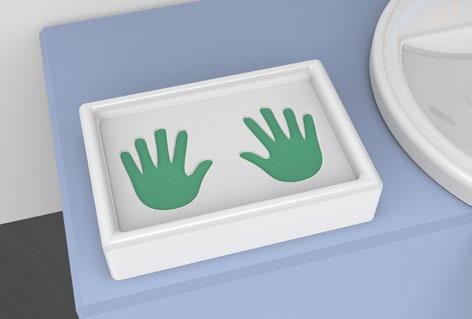
The handwashing process begins with the children coating their hands in quick-dry paint. They get visual feedback as gaps in the paint coverage highlight insufficiently ‘washed’ areas. A song prompts them to check regularly, and the mirror affords a two-way view to get a more complete perspective. Timed lights embedded in the handwashing equipment visually signify the correct order and timings to users. The handwashing song also supports this aspect, providing audio instructions. A video screen positioned at hand height affords users to mimic the actions. Collectively, the changes made to the current design aim to decrease staff workload, reduce infection rates, and increase children’s independence.
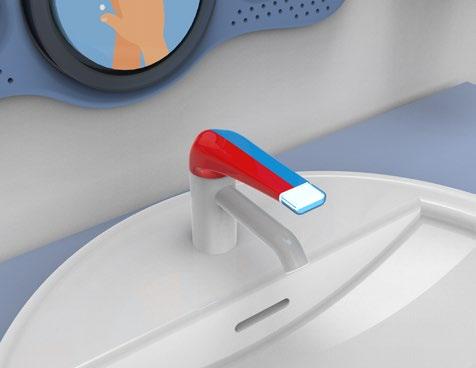

Redesigning heating controls for an improved and more collaborative experience in multiple occupancy housing.
Through background research it was found that many current heating controls are poorly designed, meaning users often had incomplete mental models of their heating systems leading to discord in multiple occupancy housing with half of British couples having had arguments over their heating.
The final design focused on redesigning a smart Thermostatic Radiator Valve (TRV) and an accompanying app for remote control of the system and setting heating schedules. The smart TRV can be controlled via the app or manually with a classic twist dial and a boost button for rapid heating. Providing suitable user feedback on the current state of the heating system was a key feature missing from many existing heating products. Therefore, this redesigned TRV boasts improved saliency through a large digital temperature display and a colour changing LED ring to indicate when the radiator is heating. Finally, the app provides autonomy to occupants by providing personalised heating to their individual spaces while automatically balancing the temperature of shared space making a more suitable heating system for shared houses.


The Interaction and User Experience Design module ran for the very first time this academic year, aimed at understanding Interaction Design, User Experience and User Interface Design to a high intellectual and professional level through academic lectures, a series of industry lectures from multinational technology companies and workshop-based tutorials. This project-based module looked at designing interactive solutions to complex socio-technical challenges focused on the Internet of Things and smart home devices.
In term one, students chose a particular use case within the project brief and worked as a group to situate socio-technical challenges within the context. The topics chosen by students varied from postpartum healthcare, natural disaster management in homes, sexual health awareness with young people and quantifying happiness. Students showed great enthusiasm and active participation in this new module which gave them the opportunity to develop their UX-UI skills and apply them within their respective projects. Data visualisation based on Dear Data technique by Lupi and Posavev (2016) was a key part of the project where students captured ‘invisible data’ and illustrated it in a way that was engaging and easily digestible to the users.
In term two, students worked individually, taking the design insights onboard and developed interactive digital solutions applying UX-UI theories, framework and principles, while at the same time also considering ethical and privacy values of the user. Throughout the module, students applied creative design techniques from auto ethnography and card-sorting exercises to diary studies, all with the aim of gathering qualitative data. The module covered Human-Computer Interaction (HCI) and User Experience which explored how interactive digital systems (across all digital platforms) can be designed to be usable and provide users with an engaging user experience.

Soothe is a mobile app designed to provide a comfortable, safe space for new mothers suffering from postpartum depression to reflect and gain advice within the community of mothers.

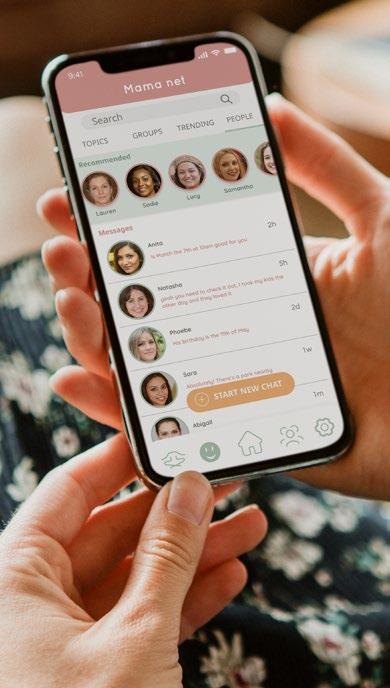
Approximately 1 in 10 women experience postpartum depression within one year of giving birth, leading to feelings of loneliness, negative thoughts, and a loss of appetite. With many apps currently tackling depression, there is a lack of focus on postpartum depression. Soothe was designed to tackle issues women face in the postpartum stage, focusing on ways to integrate and support new mothers within their community through the use of emotion tracking, daily affirmations and a meditation space.
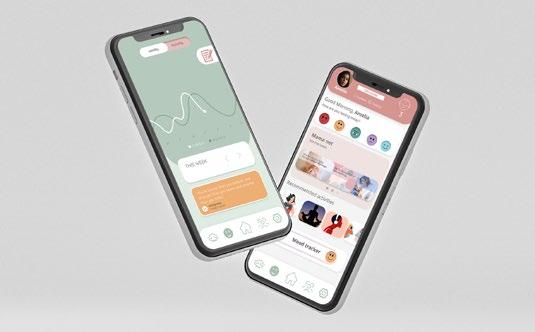

A product and app system that provides a smart localised early warning system for the homeowner in the event of a possible natural disaster.


It has been found that, in the US alone, 35.8 million homes (43%) have a high or very high natural disaster risk. Despite this, there are currently no smart security systems on the market that can help to mitigate the impact of a natural disaster. ELESAFE uses a series of sensors, that users can place around their property that provide localised warning and detection of possible hazardous events. The system alerts the user of the problem via the hub device and mobile app, and provides specific advice on what they can do to protect themselves and their family.


An app and product to provide further information and assistance to new mothers with parenting their newborn and establishing a self-care regime.


34% of new mums who reported experiencing exhaustion indicated that it negatively influenced their daily lives. If mothers do not take proper care of themselves, they can suffer from poor mental and physical health, making it challenging to meet the infant’s needs. Flourish is designed to aid new mothers in successfully parenting their newborn baby. The app ensures that mothers are informed about their babies while also helping them establish a routine, assisting the new mother in regaining normalcy while managing motherhood.


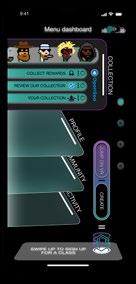


FUSE is an interactive app that encourages adolescents to socialise in a miscellaneous VR community, mitigating the health implications prompted by the lack of public spaces in cities.


With the rise in urban living, it is anticipated that by the end of this decade, 80% of Europeans will live in cities. The urbanised community is striving to be socially and physically active, yet are unable to do so amid the growing concern of social inequality. FUSE highlights the lack of public places in cities and residents’ lack of access to fitness. It is targeted at young adults aged 18 to 24, who will be provided with the app to organise gym lessons and explore the NFT marketplace as a rapid access tool for a convenient and time-effective user experience.


Feels is a smart health app designed to elevate the low moods of students and improve their happiness and well-being through gamified fitness.


In the UK, the average happiness rating fell by 1.1% during 2020, with anxiety levels increasing. Researchers found that physical activity can increase happiness levels; however, according to WHO, 1.4 million adults do not meet physical activity targets. Feels encourages physical activity in students with low moods. The algorithm suggests exercises to the user based on the mood they input, then provides a gamified activity to motivate users to exercise. Feels encourages users to connect with friends, attend university events, and monitor their mood and fitness progress to improve their wellbeing.


The Sexual Health Hub is an app for all things sexual, aimed at improving the accessibility of services and providing a centralised platform for both users and professionals.

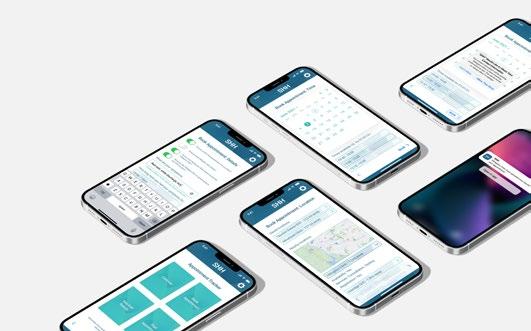
The SHH app encourages more young adults to use sexual health services by removing the stigma surrounding sexual health and helping to improve accessibility around the UK. Through the app, users can order test kits, book appointments, and consult professionals for further advice, removing the need to attend clinics in the early stages of the process – one of the main reasons service uptake remains low. Most importantly, users can access their personal records directly through the app and share them with clinics, helping to streamline the process of booking appointments and referring to new clinics.
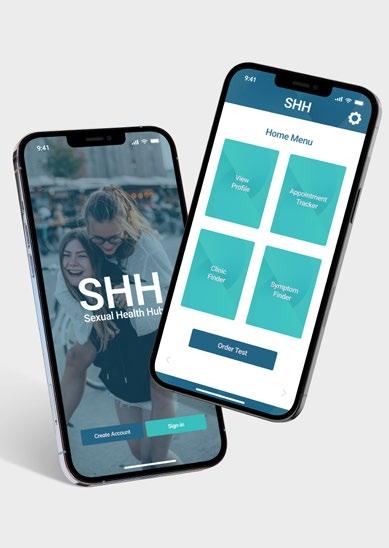

This smart security system applies modern technology into the homes of vulnerable elderly individuals to improve the quality of their lives.
Through the combination of modern cameras and Artificial Intelligence (AI), the Hummingbird Security system identifies and processes human behaviour and effectively communicates this information through the app. Ranging from an average family visit to potential burglar activity or an elderly person falling over, the app-linked system will act to notify the necessary people, even emergency services, if needed. Moreover, the integration of playful features such as hide and seek allows the camera’s set up to identify weak points in security and incentifies young grandchildren to visit their grandparents.



Planet Food is a new way to buy, plan, and track your food. The app aims to explore how a gamified user experience and characterisation may help to reduce food waste in the home.
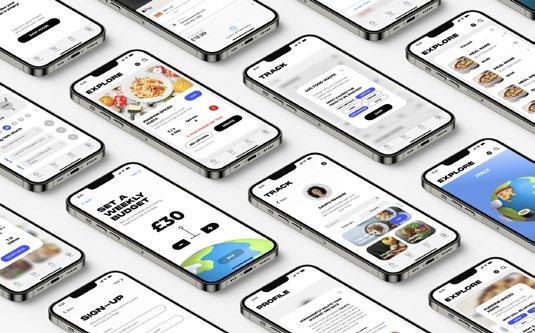



Planet Food reinvents the local market for a digital space. The Explore screen is home to a new way to shop; the globe lets you explore food and dishes from around the world creating a fun way to engage with food and plan your meals. Track your household’s food waste and take on challenges to earn rewards. As you log food waste the app learns your habits and identifies patterns so the app can suggest updated portion sizes or alternative meal options. Planet Food works great as a family activity as you and your children can explore the world of food together.



BloomBloom is a new model of renting clothing, bringing a more fun, interactive take on renting pre-loved items. The platform encourages reduced fast fashion consumption and is a step towards a more circular economy in the fashion industry.
Working on a subscription model that gives access to more items over a longer period of time, Bloom organises wardrobes for different occasions and themes. The app’s main screen is the Story, which shows users their patterns of wearing clothes more visually. The design is “growing” every time you wear an article and it “blooms” at the end of the month, when new features and rewards are unlocked. The user can also create their own 3D avatar for trying on clothes, posing, giving fashion suggestions and advice.



RedRed aims to raise awareness of sustainable period products to reduce the volume of waste created by traditional period products and their packaging.
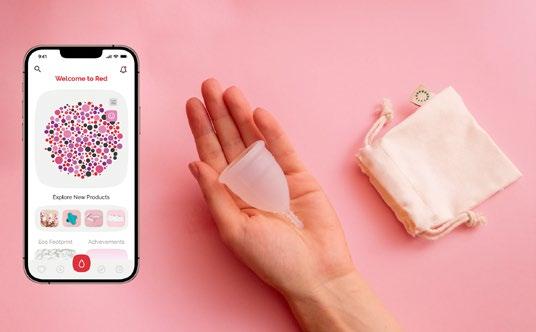

Data visualisation, habit tracking, and a reward system are all included within Red to motivate users towards a sustainable lifestyle. Red can be used to freely explore personalised product recommendations or scan individual product barcodes in-store for an instant review. Logging the use of products enables the users to input their experience and allows them to gain points towards discount vouchers. At the end of the product’s life cycle, Red instructs users on how to correctly dispose of products to ensure the volume of waste is minimised.

The Advanced Design Innovation Module (previously known as ‘Contextual Design’) combines the design innovation process with brand-repositioning.
In Term one, students mainly work in teams. They start with a blank canvas, exploring and researching to define meaningful briefs based on global challenges that are set to become increasingly relevant in the next 10-15 years. They then propose novel Design Innovation Strategies for a future-focused product, service or system and frame it as a pitch to a brand of their choosing.
In Term two, students continue working with their team theme and selected brand but each develop and realise their own individual concept, first in 2D then as detailed looks-like models. This year, we were able to bring back the informative mid-term Gateway Presentations and lively ‘Work-in-Progress’ show to the Micheal Sterling Building, in person with physical boards and sketch models. Paul Josse and his team of technicians helped to provide their continued crucial support and offered extra workshop refreshers in a range of materials and techniques to help students regain their confidence in the workshops.
Hua Dong took over leading the module after Marjan Angoshtaris’s departure in 2021, and has continued to build upon its many years of rich heritage! We would like to thank Marjan for ensuring a smooth transition, and the critical support and extra efforts of Benjamin Parton. We also welcomed two new tutors: Pravind Appiah and Ayca Dundar, who are already helping to ensure that the module goes from strength to strength. We hope the work provokes, inspires and demonstrates how design can create meaningful and relevant user experiences to be a vital tool to create change for humankind’s future. (Please note: the brand-repositioning works contained within are purely for illustrative educational purposes and are only being used in the context of non-commercial research. Neither are they for commercial gain, or officially representing the views of the brands or companies.)
Hunger is a continually growing global issue, with food waste being one of the root causes. Barclays intend to bring awareness and create effective solutions for young adults to be mindful of their food waste management techniques within households through sustainable and economically viable methods.

Nourish is a lunchbox and locker system which allows people to engage in a social food lifestyle, whilst also encouraging proper food management and a reduction in food waste.

Fresh regulates the humidity level within a specific storage location to increase the shelf life of fresh and dry produce. This will in turn decrease people’s sending costs, especially as they have less to spend on food.

Planner collects data from the user’s shopping receipt and uses this data to help prevent the user from overbuying and under-buying groceries.
Discover is a digital wallet that offers recommendations during the users shopping trips based on personalised settings.


Balance recommends relevant recipes to the user based on their ingredients at home and plans out an effective cooking routine, whilst also considering user preferences to mitigate food waste by proposing portion sizes and suggesting recommendations for leftover ingredients.


Eco is the future of food waste collection and battles to change consumer food waste habits. Eco is a system that benefits households, councils and agriculture by effectively composting food waste to create rich soil for farmland.
Care homes, designed to support your elderly loved ones, are falling short. Studies show that 85% of elderly care home residents show significant nutritional deficits, and 20% are dehydrated. As both a cause and effect of poor overall health, this accelerates physical and mental deterioration in a vicious cycle.
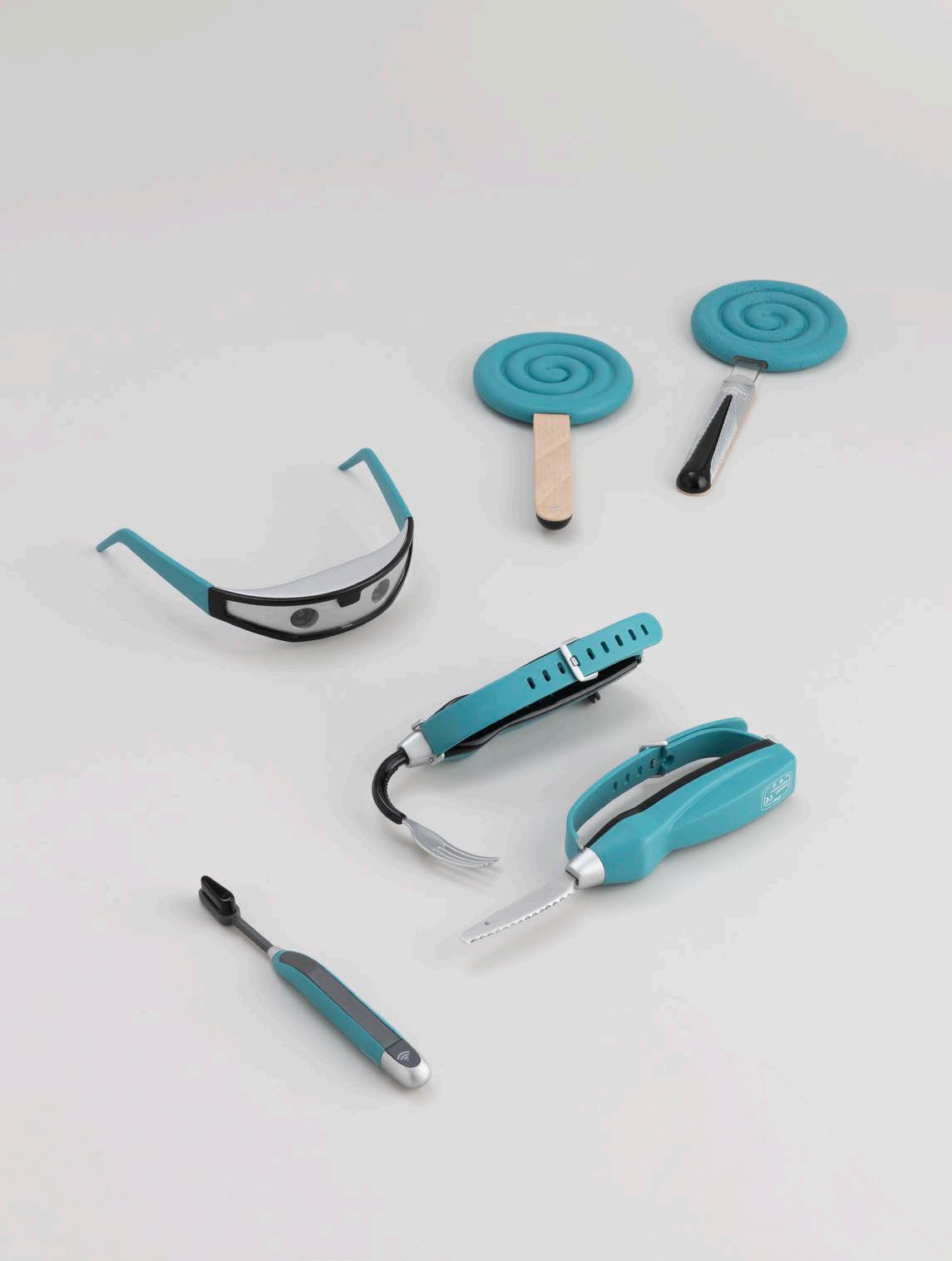
Fitbit MaxVision allows people with dry macular degeneration to utilise their working vision to the maximum. By projecting objects from their blind spots into their peripheral vision, they can see and finish their meal to maintain a healthy diet.



AdaptivEat is accessible cutlery that overcomes poor hand-function, allowing disabled residents to feed themselves again. A gesture-controlled softrobotic knife and fork converts limited movement to complex motions for eating. AdaptivEat fights malnutrition through mealtime independence.
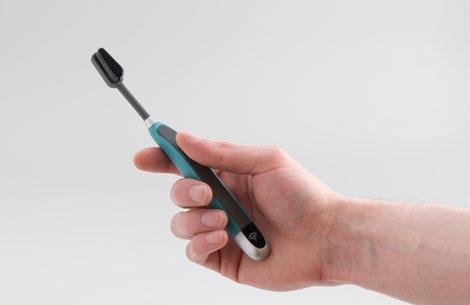
Fitbit HydroPop is designed to make hydrating both familiar and fun for care home residents through tapping into childhood memories. HydroPop uses flavour encapsulation to flavour the water through a permeable membrane, which will encourage the resident to drink more.
DentaScan uses near-infrared scanning to capture a 3D image of the mouth, highlighting any issues before they are visible. Dentists then view the scan remotely, offering advice and organising visits before issues arise, preventing dental pain, cavities, and tooth loss.
Food waste is a global concern, with about one third of all food produced for human consumption going to waste. Alongside wide ranging environmental consequences, there are stark financial impacts, especially for families with children. Thus, we intend to help families with children to reduce their annual financial losses caused by domestic food waste.

A smart storage management unit to encourage UK households to store their fresh produce separately, which can be a problem for many. Ripen IT prolongs the life of perishable fruits and vegetables stored within it by mitigating ethylene exposure and minimising ethylene concentration.

Matplanerare aims to help reduce food waste by efficiently planning for grocery shopping. Food waste can start even before purchasing groceries, due to overbuying; however, Matplanerare enables users to organise their grocery shopping with various features.
Din Låda is an in-store machine system that will be used in IKEA’s new supermarket concept. It focuses on food waste caused by packaging design and in reference brand new way to prevent the amount of waste occurring as a result.
Matsvinn is an educational family food waste game which offers a fun opportunity to parents and children alike, to learn through play and waste less food. The game highlights how food waste can occur at the key stages of planning, cooking and eating.
Köks Projektor aims to primarily reduce the amount of food wasted in UK households as a result of over preparing food at mealtimes. By utilising touch surface integration technology it displays appropriate food portions for a variety of IKEA recipes.




The world is ageing rapidly due to the silver tsunami and our 703 million elderly are set to double by 2050. Basic activities can be a challenge for the elderly when living independently. By focusing on these activities, we hope to prolong their independence and improve their quality of life.

The Medicator improves management and adherence to complex medication regimes for the elderly experiencing visual decline. The smart ring sends reminders, and guides the user to the wallmounted dispenser. The internal container is easy to remove and refill at the pharmacy.

The Cook-O-Meter aims to aid the visually impaired elderly in cooking more meals independently. It prevents food poisoning and burns with a thermal imaging camera that scans the food and hot pans, warning users and notifying them through an earpiece.
The Washer-Upper aims to reduce the physical strains of cleaning dishes for the elderly suffering from arthritis. A linear actuator lowers the dishes into the sink for it to be cleaned and dried by a heating bed and a fan.
The Smarterphone aims to allow the elderly with arthritis and dexterity inhibitive diseases to remain connected and continue using digital devices. This is achieved by creating an expandable mobile device, with an accessible interface that has low demands on their dexterity.
The Sleep-O-Meter aims to reduce the frequency of night-time urination and sleep disruption, improving users’ wellbeing. Ultrasound scanners send bladder information to a keyring which can be used to advise users on how to get the best sleep possible.



The Plaque-O-Meter is designed to help the visually impaired elderly brush their teeth. It reduces the risk of gum disease by using a guided voice that alerts users to plaque and a dispenser that delivers the correct amount of toothpaste.
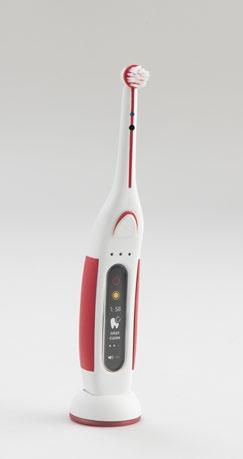
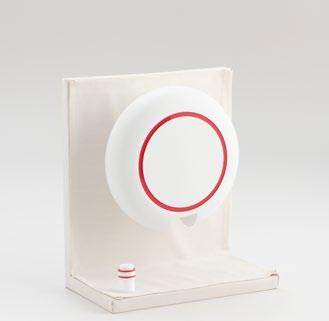
1-in-5 over 65s are affected by Mild Cognitive Impairment (MCI), an intermediary condition between normal cognitive function and Alzheimer’s disease. LinkedIn’s debut product family encourages cognitive, physical and social development for 65-74 year-olds, supporting them to reverse the effects of MCI.

Video and digital gaming has positive outcomes for older adults, the LinkedIn Sphere encourages the use of motor skills. The games support executive functions including language, attention, speech and memory. Balancing challenge and achievability to ensure continued participation.
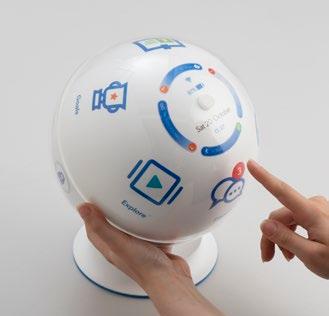

Teaching and learning together can fight back against MCI. LinkedIn Library aims to make lifelong learning commonplace, with a network of educational courses that retirees can add to through E-ink library books - inspiring a more mentally active and sociable retirement.
Only 20% of Diabetics check their feet daily, risking MCI onset deriving from Diabetic Foot Ulceration. LinkedIn Soulut encourages monitoring diligence by conducting a five-point foot assessment, sharing results with the user and their GP via a secure LinkedIn network.
Cooking is a task which has been shown to reverse the effects of MCI. Using this, the LinkedIn Chef is a modular, magnetically connecting, cooking surface, with an easy-tofollow interface, aiding users of any cooking ability, from new starters to experienced chefs.
The amount of model makers in the UK is growing. It is a great way to improve on motor functions and social benefits. LinkedIn Create aims to improve the model making experience with a compact projector to optimise the process of making models.



A device that improves technique, increases enthusiasm, and reduces injuries by recording motion tracking data in sport. It will also send recommended exercises via LinkedIn Learning platform, aiming to encourage regular activity to prevent disinterest, a common symptom of MCI.

Dementia is the most common age-related neurodegenerative disorder, with 850,000 reported cases in the UK. The UK has an ageing population; 95% of dementia cases occurring in people aged 65+. 700,000 informal carers already support someone with dementia and only 12% receive adequate aid. How can Silver Spoon relieve their burden?

Sweet Support is a programmable infusion device which periodically administers medication. The transdermal feature of the device allows medication to be taken effortlessly by the dementia patient and removes stress from the carer’s everyday life.
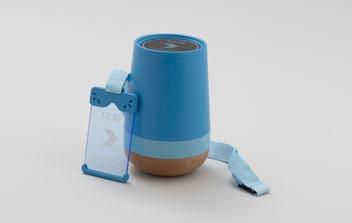


Sweet Vision helps to lessen the burden of information exchange between informal and respite carers. By allowing the respite carer to “see through the eyes of the main carer”, information is clear, specific and tailored to each household.
Sweet Moments captures and projects essence. The capturers record personal interactions whilst the hub features a hologram display. Allowing informal carers to reconnect with loved ones lost to dementia through realistic conversations and shared memories.


Sweet Connection is a product that helps to improve communication between the informal carer and their loved one suffering from dementia. Through the visualisation of the dementia sufferer’s long term memories both parties can reminisce and converse.
Sweet Intuition is a system of devices helping to work with informal carers to monitor and communicate with the person they care for effectively. The system provides peace of mind for the carer, knowing they will be alerted if a problem occurs.
Sweet Escape provides informal carers a way to look after their emotional health while fulfilling their constant caring responsibilities. Using an AI wearable and smart device, short, tailored exercises are generated for carers to initiate when taking daily tea breaks.

Wildfires are set to become more frequent, increasing around 50% by the end of the century. Even with optimistic climate predictions, a global temperature rise of 1.5˚ will induce dangerous wildfire conditions in locations which are not currently prepared for this, such as the UK.

The Tesla Ex Gun allows firefighters to create firebreaks from a safe distance, by shooting flame retardant bullets that explode and, within 3-10 seconds, extinguish the fire.

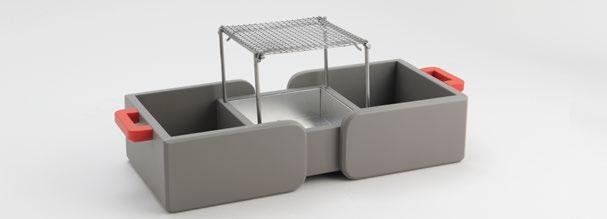
Arrive with your fire, leave with your fire. The biggest wildfire risk that campfires pose is in the disposal of the hot ashes, as they easily reignite. Fire Box collects and stores hot ashes until they can be safely disposed.
Tesla Vision are ergonomic goggles that block out the intense brightness that rural fires create, which cause the loss of natural night vision, and reduces the risk of injury by providing night vision to see ground hazards.

Bee Beacon utilises UV light to attract bees after wildfires. To ensure bees are drawn to the food source, the UV light mimics the appearance of the Gaillardia flower; providing a source of food and drink whilst habitats are regrowing.


When dangerous levels of smoke are in the air, residents are advised to stay indoors. The Bus Stop Bubble is an air-tight rendezvous point, from which those who are unable to reach a nearby indoor space can be picked up from.
Its estimated that 1.3 billion women worldwide have experienced a form of physical or sexual violence in their lifetime. This will increase by 160 million by the year 2035. How can Tiffany & Co. protect and empower women, allowing them to safely go about their lives and support their wellbeing?

The psychological effects of having experienced a domestic abuse situation can be completely debilitating. Tiffany Compact is a haptic Eye Movement Desensitisation and Reprocessing therapy device in a compact mirror form, providing the user with a discrete on-the-go therapy solution.



Upskirting is the most undetectable offence on and around public transport. Tiffany Shield utilises electromagnetic induction to integrate into bags, emitting infrared to disrupt visual recordings taken underneath the product, and discreetly alerts perpetrators to discourage them from future acts.

The most common reason to spike a drink is with the intent to rape or cause sexual assault. Tiffany Sense is a drug detection cup provided by venues that alerts you if your drink has been spiked.

Tiffany Lux protects women walking alone at night as a non-violent defence strategy using strobe light patterns. When activated, the device releases a disorientating flash and strobe light sequence, giving the woman a chance to escape the situation and seek help.
Hostile work environments are common in many workplaces. By detecting tone-of-voice and physiological changes, Tiffany Apprise warns a perpetrator that they are causing distress. If persistent, a recording of the abuse is sent directly to HR to avoid victim repercussions.
By 2036, one quarter of the UK’s workforce will be working from home at least 3 days a week. WeTransfer will safeguard future working conditions with a range of tools that each recapture an essential aspect of the office experience, lost when working from home.

WePause aims to build the social side of company culture in a future where teams are physically separated. Each button can dial a colleague into a call, set in the kitchen and centered around the act of having a tea break.

Sedentary Behaviour is a serious health problem that has seen a dramatic increase amongst homeworkers. WeMeetings uses computer vision and gesture control to transform the large portion of time that homeworkers spend in virtual meetings from inactive, to interactive.
WeUnplug is a work-from-home desktop computer that creates a tangible boundary between work and home. Employees can only access their company’s cloud workspace by inserting a physical smart key that unlocks at the end of a 30-minute liquid timer.

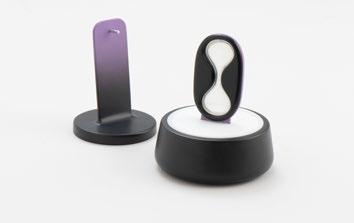

WeSleep combines the use of Aromatherapy and light therapy to improve sleep quality for those working and living in a single room environment. The scanner uses spectroscopy allowing the user to replicate their favourite smells which automatically coordinate with their daily routine.

In-office employees are favoured for promotion over homeworkers. WeMeasure makes every employee salient to the manager. The interface and physical pendulum communicate organisational and individual balance, derived from self-assessments, client, and team feedback.
Portraying body movements over a video call is particularly challenging for physical activity trainers. WeDemo is a pair of gloves with integrated conductive plates and 3D scanning technology that convey body positions through physical sense.


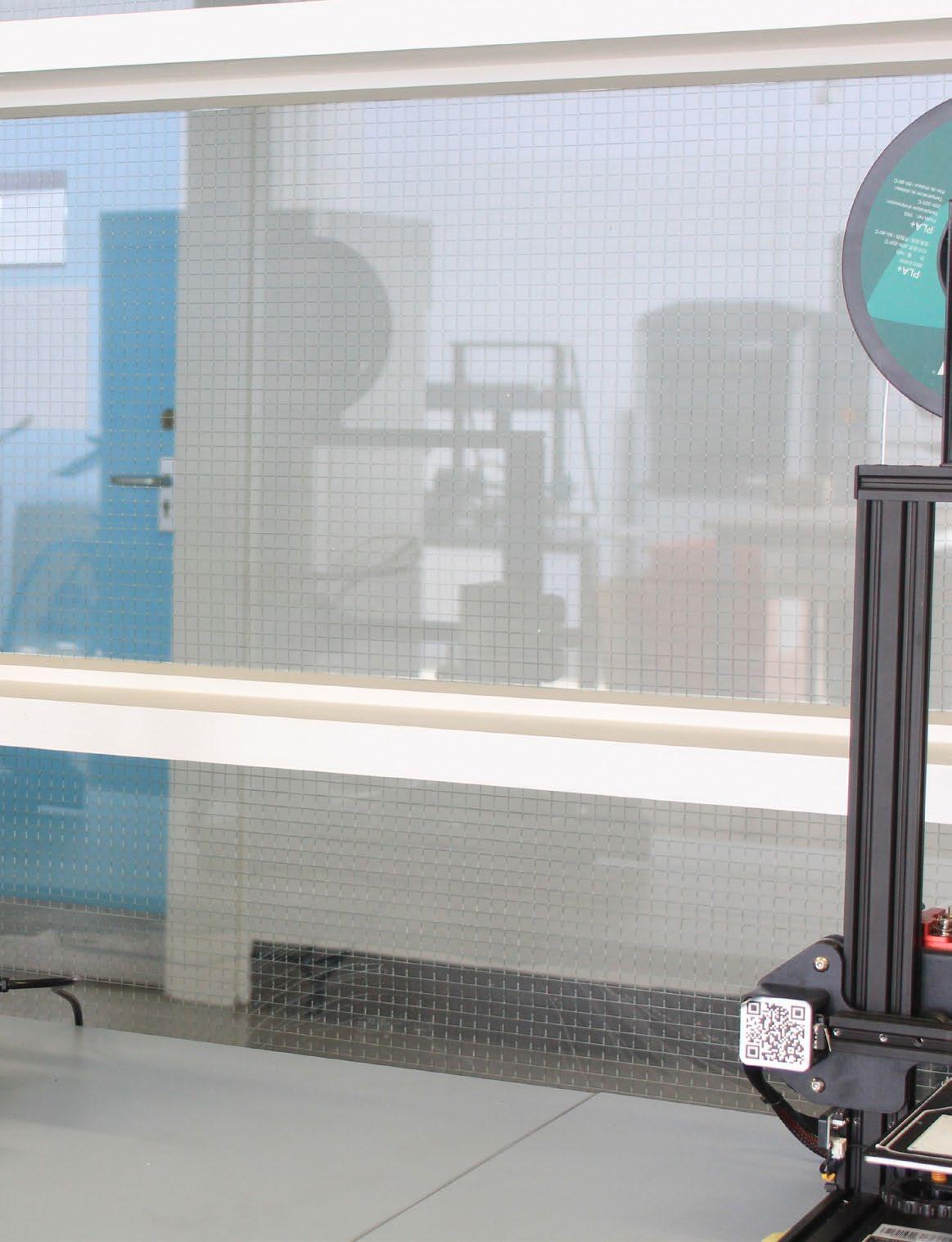
In order to cope with the economic, social and environmental challenges we are facing nowadays, designers need to innovate beyond individual products and conceive systemic solutions blending physical and digital products, services, spaces and communication.
Our MSc IPD degree focuses on the design of these innovative integrated solutions. In pursuing this, we emphasise the balance between the interest of users, industry, society and the environment. We cover the whole design process, integrating all aspects relevant to the development of these systemic solutions: human needs, sustainability, technology, aesthetics, management, marketing, business and design methods.
This programme is delivered by a cross-disciplinary lecturing team enhanced by design and branding professionals. Live briefs from small, medium and large enterprises from our industry collaborative partners are integrated into our modules and play a pivotal role in the learning experience. Our MSc programme is accredited by the Institution of Engineering Designers (IED) and is studied full-time over one year. As a result, we produce highly qualified and sought-after designers who are employed in companies ranging from design consultancies, research and development departments to research institutions and government bodies.
The Sustainability, Entrepreneurship and Design MSc has been developed to equip students with the practical and entrepreneurial skills required to deal with sustainability and environmental management issues in any business. They will help address the upcoming significant challenges in society and transform our economy to incorporate the principles of sustainability.
This presents an exciting opportunity for them to be at the forefront of rethinking, redesigning and rebuilding a positive future for business practice. They will be encouraged to infuse environmental awareness into societies and make tangible contributions to the theory and practice of environmental protection, sustainable business and a circular (green) economy.
This course entitles them to free student membership of the IEMA for the duration of the course and, on successful completion, qualify for GradIEMA. Graduate membership is a launchpad for future leaders within the environment and sustainability sector and offers various benefits to support them throughout their career.
MA Design and Branding Strategy aims to explore branding from a design perspective. It extensively presents and analyses famous and emerging brands, brand trends and brand models. This course prepares students for a career of leading, designing and managing brands at the highest strategic level. Students who graduated from this course work globally for admired major and challenger brands, prestigious brand agencies, and top-level creative consultancies, including Design Bridge, Saffron, Imagination, Interbrand and Ogilvy. They have taken on roles such as brand strategist, brand consultant, brand manager and creative director. Many also start and run their own successful businesses.
Workshops play a major part in the teaching experience, and it is here that students practically engage with contemporary brand issues and tools. Opportunities to develop specialisms in areas such as luxury branding, place branding, digital branding, fashion branding and social branding are encouraged and in many of those areas, Brunel MA Design has pioneered new thinking. We actively engage with the London and international brand community with an impressive list of leading brand and design experts regularly talking to students or facilitating workshops and other activities. The course is generally considered the first Design Branding Master’s programme globally and continues to pioneer content. Students are also given opportunities to engage with ongoing externally funded research projects and industry-led branding projects.
Design Strategy and Innovation MA aims to give designers and other creative disciplines the skills and knowledge to utilise design thinking and leverage design to pursue strategic change and improvement in both the private and public sectors. The programme explores how design can be a catalyst for various types of innovation at all levels, e.g. new products, services, product and service systems, design processes and ways of managing creative teams and collaborating with stakeholders. The graduates are employed by major international businesses, prestigious design agencies/ consultancies, and government organisations, such as Procter & Gamble, Samsung, LG, Asus, Plan and Seymourpowell and Korea Institute of Design Promotion, as design manager, design strategist, innovation consultant and creative director. Some establish and run successful consultancies.
Students learn how to evaluate user needs, design and technology trends, and social movement and discuss key factors influencing innovation development in the relevant areas, including digital economy, sustainable development and social responsibility. They also investigate future scenarios and emerging practices in design and innovation to develop strategic directions for innovation and innovation culture. The course actively engages with pioneers in the fields of design and innovation. They are regularly invited to give lectures and run workshops and seminars with students. Students are also given opportunities to engage with ongoing externally funded research projects and industry-led design projects.

Green Returns was developed in response to the “Without the Waste” brief, part of the 2022 RSA Student Design Award Competition. It takes a holistic approach to the problem of plastic blister packaging which exists in the ‘take-make-dispose’ liner system contributing to the plastic waste epidemic, now posing a global threat to the environment and human health.
Working with the design hypothesis that alternatives to plastic must be rapidly adopted in packaging design, the focus of this proposal was finding an alternative that could operate within a circular economy.

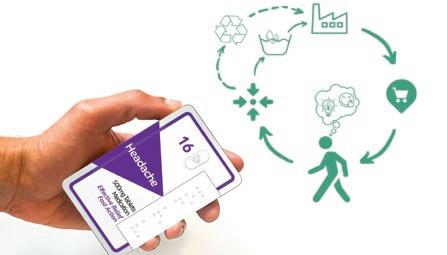
Green Returns puts infinitely recyclable and biodegradable materials within a user-friendly deposit return scheme that empowers consumers to make sustainable choices. The packaging design features biodegradable bioplastic primary packaging where tamper-evidence safeguards are required, and reusable aluminium shell packaging for users to return to store for reimbursement. Packaging forms are standardised in order for the scheme to be rolled out through multiple consumer products, brands, and retailers, to promote economies of scale and supply chain efficiency.




Up is a portable outdoor speaker designed for Roberts Radio. With its flexible and customisable design, Roberts Up keeps up with your life and your style. Roberts Up is influenced by British Design history and heritage. From the Arts and Crafts movement through to today, the British design style was retained, showing traditional craftsmanship while being innovative, quirky and fun. The design also fits into Roberts design language by having rounded edges, using the logo proudly, and being stylish with a colourful aesthetic. The Up concept aims to use the speaker as a statement piece. Its customisable rope enables users to carry their portable speaker to any occasion in the easiest way. Users can select from two different lengths of colourful and patterned ropes while purchasing the product so they can make it fit their everyday life. Users can also get more ropes as they wish to replace and personalize their speaker. Roberts Up is user friendly as well as easy to understand and use. Roberts Up has three buttons on top: Bluetooth, play & pause, and power. These buttons indicate their status through the integrated light rings and their respective colours. The most used buttons are placed on the front face to ease the access while listening.

Roberts is a British brand that produces radios and audio equipment designed to excite the senses and every Roberts product is designed to be seen, touched, and heard. Roberts aim to stay at the forefront of design by continually developing the aesthetics of their products so that they look as good as they sound. In this case Roberts wanted to develop stylish portable outdoor speakers.
This design meets the brief they set and includes bass controls, easy Bluetooth connectivity, volume, play next buttons on the speaker, battery indicator, common charging port, and in-built microphone.


The insights from the primary and secondary research found that users liked this proposed design. The double diamond process had been used to discover that the users wanted their outdoor speakers to be budget friendly so this had been considered in the design. The proposed design also investigates the sustainability of the materials used. The green colour, matt finish and materials such as brass and mesh in the design have been chosen with the Roberts aesthetics in mind.
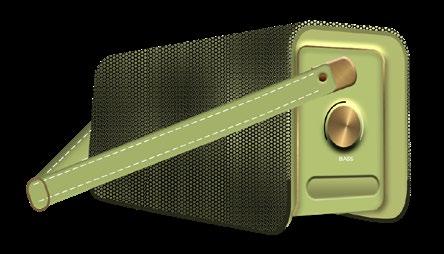




Universities are key urban institutions with significant local direct and indirect impacts on employment, the built environment, business innovation and society at large. The relationship between a university and its neighbourhood is multi-faceted and can be mutually beneficial if well-connected. This research considers Brunel University London as an example where campus life is disconnected from its host town Uxbridge and plans to use a placemaking approach to re-examine and improve the interface between the town and the university in order to increase place attachment from the university and, in turn, create place identity for the town.
The choice of a co-creation, placemaking approach would draw on ideas and inputs from all stakeholders, the unique assets inherent in every community. As the process recognises citizens’ deep knowledge about the place they call home, it would create a sense of collective pride and ownership in addition to opportunities for unique innovation. The aim is to use these strengths to work towards common goals, involve people in the process and create a strategy for the university to collaborate with its town to build a strong identity for the place based on characteristics and needs of the university and its surrounding communities.

REMED is a refillable medication system fed by the NHS waste stream and provides a smart QR system to stay on track of multiple prescriptions, at home and on-the-go.
Many people have to manage multiple prescriptions at once, yet current blister packs are not designed to support this. This results in people having to organise, store and keep track of multiple packets with differing schedules. With blister packs often split across separate boxes there is a large amount of wasted space and subsequently environmental inefficiencies in distribution. 48% of UK adults receive prescriptions, ultimately, high quantities of waste are generated as a result of their single use nature. Whilst economies of scale have been considered in blister pack designs, the environmental impact has not.
Circular economy research informed guidelines for REMED’s design, leading to a reusable medication container keeping the material at its highest value for the longest time. Storing multiple prescriptions for a patient, reducing wasted space transported and unnecessary secondary packaging. REMED operates within a system fed from NHS waste PP and harnessing the NHS’ purchasing power in the UK pharmaceutical market.






MNCs and start-ups use techniques like merger & acquisition to become competitive. When companies merge, their main aim is to create value and financial growth. However, merged organisations tend to disregard cultural aspects, which is extremely essential and sensitive. Issues often arise as employees are concerned about the new culture at work and their positions. Their trust in the leadership might be shaken if their interests are not taken care of. This has a significant impact on businesses’ ability to achieve their primary aim. If cultural synergies are carefully developed, it can help with innovation and brand value creation in the market. Thus, this study focuses on how the human-centred design approach could create a strategic framework for cultural shifts, employee engagement, and a set of integrating tool-kits to support mergers and acquisitions.
The study used in-depth literature review and case studies to explore issues. The data collection and data analysis comprised of expert opinion, scenario mapping and understanding employee’s motivation towards working in organisations. Additionally, it becomes vital to review the process of cultural change management through design thinking. Creating a framework will bridge the gap from these scenarios and ultimately allow focus on a company’s vision.

In partnership with The Chargebox firm, this project was completed in a professional design studio. The Chargebox is the world’s leading provider of safe and free charging solutions for retail, healthcare, transportation, education, and events. The project brief indicated that the business might deliver adequate public charging solutions in the transportation industry.

The modular charging unit provides a sitting and leaning facility for the user while charging their mobile phones in the train station. Modularity will help to adapt to different sizes of train stations. The charging station contains three sitting and three leaning units that can be multiplied to expand according to the needs. A charging station can be arranged in a linear or zigzag pattern, which enables the brand to create a suitable environment while maintaining brand identity.
Circular light will act as a wayfinder. A ring light elevated above the human eye level for improved visibility in congested transportation environments. The light also helps to portray the Chargebox brand identity. Plants help to enhance the charging experience, with research showing they have the ability to reduce tension by 40 percent, ultimately helping users to feel better while charging their devices.
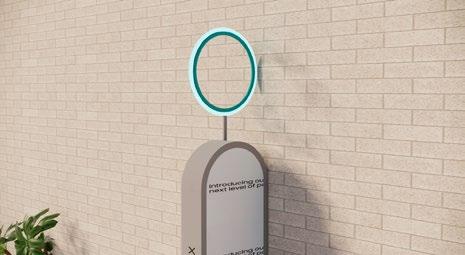


This waterproof outdoor speaker has an integrated lighting system that can be switched into three different modes when being used outdoors. Traffic Mode initiates red, yellow and green lights for safety, Cycling Mode turns the top of the speaker into a searchlight and the underside into a signal light, finally, Play Mode allows the user to upload pictures to be displayed on the top of the speaker via the LED screen, ultimately increasing outdoor entertainment.
The speaker is split into two halves that are connected using magnets. This functionality allows users to split the speaker to share with friends, or use them simultaneously to create a surround sound experience. This split design means customers are provided with the option to select their own colour combination when purchasing the speaker, offering the consumer a personalised purchasing experience.


The small, cylindrical shape of the speaker resembles that of a water bottle, making it easy for it to fit into the bottle holder of a bicycle, the side pouch of a rucksack and much more. The inset LED display prevents the screen from smashing on the ground should the speaker be dropped and the 360 degree speaker array provides omnidirectional sound.


OnePlusOne is a home office desk suitable for young designers who live alone in small space. The product promotes work efficiency, separates work and life, and enables the user to switch easily between work, meals, and relaxation.
The problems identified were that many young designers who live alone in small spaces have unbalanced work and life when working from home. They either overwork or repetitively take breaks, resulting in low efficiency. Also, it is hard to work, eat, rest properly in a small space.
Therefore, this two-layered desk helps separate work and life, and it can be the only desk at home. The top layer builds a partition from the surroundings to reduce distraction and help users concentrate on work. With a smart lamp integrated into this desk, work efficiency can be improved and users can have a more organized work and break time. Ample space is provided for storage and the inside surface of the top layer can be used as a mounting board for sticky notes. To use this desk, users simply open the top layer to do their work and when they need meals or finish their work, they close it to enjoy the personal life. The OnePlusOne is primarily constructed from composite board which is a low-cost and environmental-friendly material.







A digital social prescribing service that takes a systems thinking approach to tackling Cardiovascular Disease (CVD), establishing a community environment whilst addressing the wider determinants of health for London’s single parents. Single parents face health inequalities, through statistically being more likely to have low socioeconomic status and experience mental health problems. In turn, this links to cardiovascular risk factors such as smoking, physical inactivity, and high blood pressure, resulting in a higher risk of developing CVD.
Health inequalities are addressed by empowering single parents to self-manage their health and wellbeing through access to free or affordable activities and services. The service fosters a supportive community to tackle isolation as well as providing access to information and professional advice. By tackling the wider determinants of health now, the aim is to reduce the future risk of CVD for single parents and their children. Data such as health, ability, or income will be used to algorithmically generate activities for users to explore and book via the app. The use of such data ensures recommended activities are relevant and beneficial. Activities range from exercise or mindfulness classes to financial advice talks. Volunteering opportunities are also available, to build local community engagement and lasting connections.
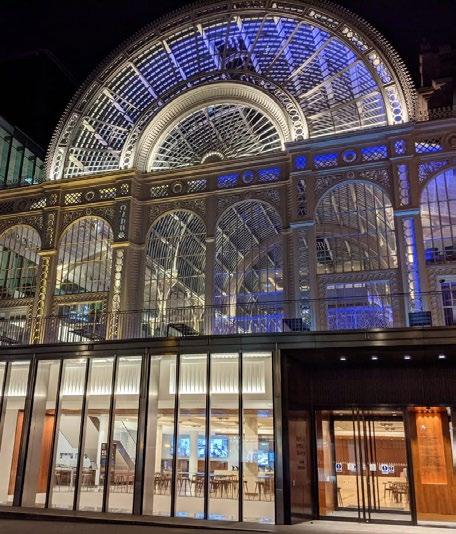
Symphony Orchestras face new challenges, as their nature is altered by the changing tastes of their consumers and the values of the creative industries in general. As the digital mediums dominate the production, access, and consumption of music, the perception of product quality and the objective measures of the assets are less definable and even less predictable. Market research shows that attendance of classical music in the UK has been, for a number of years, in significant decline; attributed to the sector’s relative failure to reach out to younger audiences.

To counter these challenges, every major symphony orchestra around the world has attempted to rebrand themselves, an exercise that involves a shift in brand identity and visuals to attract the younger savvier crowd into the seats. However, the real need is to revitalise the repertoire; celebrate traditions but also to create fun and exciting new opportunities aiming at engaging the younger audience at every touchpoint. This study aims to investigate the impact of rebranding efforts through the cultural back drop of classical music. In addition, it proposes an innovative and experience-led rebranding strategy that makes use of new age technology and engagement platforms to inform and involve younger audiences.



In 2021, over 80% of all Bluetooth speakers sold in the UK were outdoor speakers. On the other hand, reports in new consumer trends reveal that users are willing to swap to sustainable and durable options. This modular design allows for a circular economy that makes it easy to disassemble, repair and recycle if a part is broken but also to clean after a day out.

The user has the opportunity to entirely customize the speaker choosing, from different colours and materials to pick what best suits their current lifestyle. This helps to promote a second life for the product as a new user would be able to readapt the speaker to their needs. At the same time, this creates an after sales opportunity for Roberts by incorporating new colours or finishes, special editions with British personalities and new accessories, for example a solar panel shell.
To make the device accessible for those with vision disabilities, the buttons will be textured, including the battery charge indicator. Four small marks on the charge indicator pop out on the surface when fully charged. As the battery is drained, the dots revert back into the speaker, meaning the charge level of the speaker can be determined through just touch. The speaker incorporates a kinetic energy battery to prolong the battery life through movement when you are outdoors.




As the size of the speaker decreases and becomes more compact, more and more consumers are opting to use Bluetooth speakers. Accordingly, for people who enjoy listening to music, the speaker is not simply a product to listen to music, but a possession that can express their individuality. With this, an all new Bluetooth speaker has been designed using the identity of the Roberts brand.
As a result of analysing the behaviour of most Bluetooth speaker users, it was determined that one speaker was used until it broke down, regardless of indoor or outdoor use. Reflecting this, both indoor and outdoor concepts were designed with fashion in mind, allowing the user to feel the emotions of Roberts speakers and express their individuality. The product can be carried like a bag by combining the straps depending on the situation, and it is designed to be easily used outdoors. Leather, stainless steel, and fabric materials were combined to produce a design that reflects the classic feel of Roberts.





According to the World Health Organisation forecasts, depression will be the leading cause of diseases worldwide by 2030. The COVID-19 pandemic and the subsequent economic slump have had a detrimental impact on many people’s mental health and created new barriers for those who are already dealing with mental health issues and substance use disorders. This pandemic has compelled everyone to place a greater emphasis on mental health.
With increased awareness and the rise of these new demands for mental wellness, it is time for Heartfulness to focus more on consumer perception and cater to its customer’s needs. Heartfulness is a non-profit organisation that offers a free but effective mental healthcare routine. They have various in-house brand offerings that the target audiences are unaware of. Given that it is a volunteer-based organisation, there is a lack of planning in their launched marketing and branding strategies resulting in relatively weaker consumer perception. As a result, the true essence of the brand is not captured. Thus, the purpose of this research would be to investigate possible strategic design opportunities in order to maximise reach and improve the organisation’s consumer perception of the brand.

AS Portable II is an Outdoor Portable Speaker inspired by the “suitcase” radios that were hand-made in London, UK, in 1933; the first pre-war years of Roberts’ launch. As Roberts celebrates 90 years of sound, this design is created to honour the company’s creators, Harry Roberts and Leslie Bidmead. The “suitcase” shape can be found in many picnic hampers that are part of the British heritage; this way, both worlds are connected.
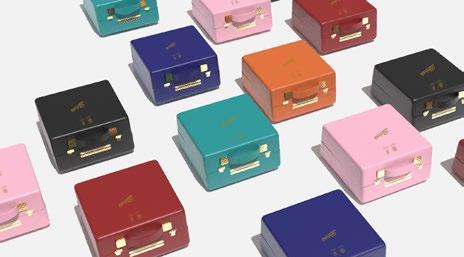
For this project, it was essential to design a product that would respect Roberts’ values and British heritage. This new design incorporates the format of A5 portable and Midget Portable, models of 1933-1936, equipped with the latest technology and modern design. The angle on the front surface is distinctive to Roberts’ brand, and it is ergonomically convenient and user-friendly to operate.
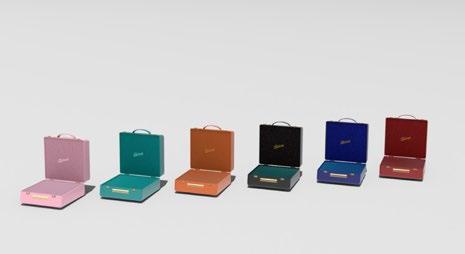
A5 Portable II has a length of 20.5cm, a width of 20.5cm, and a height of 10.2cm. It is waterproof and dustproof, making it suitable speaker for outdoor activities. Its batteries can last up to 16 hours with a full charge while upgrading to a solar panel body is also possible. It comes in 6 different colours inspired by British meadows and retro London.


The Roberts project entailed the design of a portable outdoor speaker that develops the brand identity of Roberts Radio. Roberts Moment delivers a novel product to a specific user group while maintaining core brand values and characteristics.



The Roberts Moment offers style through a playful yet sophisticated colour palette developed from existing brand colours, evoking natural hues and drawing inspiration from traditional British adventure vehicles such as Land Rover and Mini.
To create a delightful user experience, the speaker utilises flat iconography coupled with a soft-touch surface, eliciting a sensory stimulus with each touch that is emphasised through haptic feedback. In addition, through the combination of internal mechanics and electronics, under-lighting gradually intensifies as the speaker is twisted open, mimicking the finding of treasure to provide surprise and delight. To maintain these emotions and sustain product value, the speaker is paired with an AI app, capturing the sound and converting it into art to offer surprise and delight with each unique moment.

With the digital internet age booming around the world. People are demanding more and more from their quality of life. Mobile applications for booking and searching for lifestyle tips have become an integral part of people’s lives. There is a necessity to create a design that allows users to freely share their lives and refer to reviews. It is essentially about listening and reviewing life so that people are less indecisive when faced with a multitude of options and have more quality places to go when faced with numerous options and have more quality places to go when they’re bored.
OOPS is an app that offers local services, an app that provides users with advice and quality reviews on the best local restaurants, shopping, nightlife, places to go, entertainment, things to do, services, and more. It allows people to not hesitate when faced with many choices and gives them more places to go when faced with boredom. The essence of the OOPS mobile applications is to listen and review life.







Cambodia’s economy is recovering rapidly after the 2020 pandemic with e-commerce gaining huge popularity by playing a substantial role in allowing businesses and trade to function over the constant lockdowns and restrictions. However, the e-commerce environment still has a long way to go as issues, such as digital literacy, trust, payments and delivery are key barriers that are blocking local e-commerce brands from success. Therefore, this research explores opportunities to tackle those issues through the use of user experience design. In addition, it analyses strategies used by successful brands, such as Amazon and Taobao, and how it can be applied in the Cambodian market. It also deals with consumer journey analysis, quantitative and qualitative research to understand how design can be used to build a trustworthy e-commerce brand and increase the brand value.
Through the information and data gathered, a design strategy will be developed to suit Cambodian user’s taste in a way that the display products are presented in an interactive manner. Additionally, the proposed strategy touches on an optional contrasting colour interface, fonts, icons and layouts that will benefit all major stakeholders and be more convenient, manageable and practical regardless, their of digital knowledge.


Tablets drug packaging is difficult to classify when recycling due to its small size, especially for people who take medicine on a long term basis. The discarding of drug waste causes a detrimental increase on resource waste and environmental pollution.

Re-pillbox is a reusable medicine cabinet designed for people who need to take medication long term. It aids users by coordinating with the help of pharmacy service systems, implementing bulk packaging, and using reusable medicine boxes to reduce waste. For the design of the pill boxes, functions are superimposed. Large capacity medicine boxes are set to reduce the frequency of travel, and daily dosage of medicine boxes are easy to carry while reducing waste to bring users a better sense of experience.




The appearance of an outdoor speaker has been combined with the outdoor visual elements so that it can be connected to the outdoor space by the user. At the same time, these outdoor visual elements can evoke the user’s emotional perception of the outside world. This concept focuses on activating people’s emotions and memories, the conch’s shape design will remind people of fond memories of being at the seaside, and then remind them of the emotions these memories bring to them.
As one of the classic visual elements of nature, the conch shell has an aesthetic appearance and delicate construction, which is in line with Roberts’ visual style. Considering the manufacturing, the final design uses an artificial marble, that is constructed of polyester. The product is cast and formed so that it can be manufactured into a curved surface. This artificial marble has an appearance and material properties similar to natural marble. The conch speaker is designed to have only one knob for volume adjustment and one button for Bluetooth connection, and is equipped with LED indicators to display the working status, ensuring that it can be easily used.
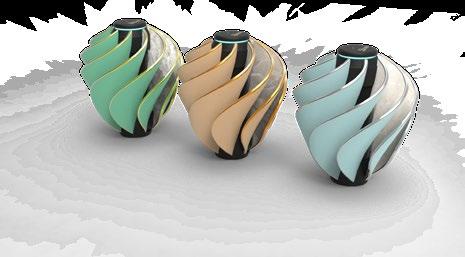

RobertsThe new Roberts outdoor speaker is designed for socialisers to provide a better and more interactive user experience and provide an improved visual language. It features a 360º degree sound range and two LEDs to generate an immersive atmosphere at night. The speaker is made from multiple materials with new colourwave selections. A streamlined ergonomic shape makes is easier for people to hold and grasp with a leather-like ABS and steel metal grille on the surface to elevate the design.
There are two ways to play music, in both horizontal and vertical positions. The product is designed for repair, it features two replaceable and repairable parts. These easily damaged parts at both ends of the product can be easily replaced.



Himani Gohil, Lakhan Gujarati, Martina Riccetti, Silvana Arteaga Moreno, Jesse Amoako Atta, Shameer C. M. Ramdin
Design Strategy & Innovation MA
Integrated Product Design MSc Design & Branding Strategy MA Sustainable Entrepreneurship & Design MSc
One of the exercises in the Design Future module was about envisioning future trends and utilising creativity to address emerging challenges. The exercises emphasised using future-forecasting tools, such as the Janus Curve, Context Mapping and PESTLE Analysis. The module focused on team brainstorming, analysing hard and soft trends, and selecting one future scenario to be explored further. “Decentralising Food System and Centralising Nature” was the emphasis of our group.
Every industrial revolution has brought about changes in food consumption, manufacturing, and distribution worldwide. Food waste has been the global issue that needs to be addressed. The team came up with the concept called MAID as a Food Waste Docking system for home use that converts food waste into pills which users can consume. The pills are designed to serve multiple users’ needs in terms of health, cosmetics, and medicines—this future product was created in response to changing consumption behaviour. The economy is moving from linear to circular, where products start from a waste before being converted into pills. The leftover pill can be supplied to pharmaceutical industries and transformed into food fertiliser. Waste generated by MAID is recycled into a usable product, providing health benefits in seconds.










Immersive experiences are evolving in our physical landscapes. Virtual experiences are being mixed with actual venues to create liminal spaces. The growth of virtual immersive places, as well as their impact on the physical spaces we currently inhabit, has only contributed to emphasise the importance of the desired somatosensory, auditory and olfactory senses as a driving force in the digital universe. Now, let us consider an immersive experience that engages with us on a deeper emotional level while also providing much-needed emotional care and therapeutic diversions.
The emergence of less expensive and more accessible technology has resulted in social isolation, depression and mental health issues, with an increasing desire for endless contacts and experiences. This is where ‘Liminal Space’ comes into play. A space where virtual experiences are combined with a physical space. Based on the user’s problems, powerful simulations of their psychological difficulties scenarios, are created virtually, providing a safe space for them to engage with and try new behaviour. Their responses to the environment can be recorded based on biometric data sent from wearable devices, or from mood states read via facial recognition software. Data collected from the workshop will be visualised by the therapist who will diagnose and determine the best treatment methodology.

This year celebrates 36 years since our first doctoral student graduated from the School of Engineering and Design, now known as the College of Engineering, Design and Physical Sciences. Ahmet’s doctoral thesis was about a decision support system and a design methodology for operational management of industrial organisations. Since then, our doctoral researchers have branched out to investigate other topics encompassing human centred design, sustainable design, advanced technologies, and products, services and digital design. These topics are aligned with our newly formed research groups covering inclusive design, creative computing additive manufacturing, design for sustainability and the digital design lab.
For this year’s book, we present a selection of projects starting with Aimone Bodini’s work on the immersive technologies for audio-visual productions, Chris Biggadike work on the application of complexity leadership within Engineering, Montida Lertnimanoradee looking at the upcycling principles that are suitable for small rural communities to address local municipal solid waste, Nevena Balezdrova formulating a framework of co-design principles for social care service development, Qing Ni focusing on the language barriers and adaptation issues faced by Chinese older people who have migrated from one place to another, Sena Berktaş looking at the use of communication design to address language barriers between Syrian immigrant parents and Turkish primary school teachers, Umber Shamim addressing the factors that may affect the adoption of Interactive Smart Agents (ISAs) among severely disabled users, Yuan Long investigating the single-use plastic packaging issues to support packaging professionals to create reusable packaging solutions, Zakaria Monteiro who aims to investigate the relationship between football and AI and finally Zixin Tian exploring the treatment process for mobility impairment and disability rehabilitation caused by Parkinson’s disease.

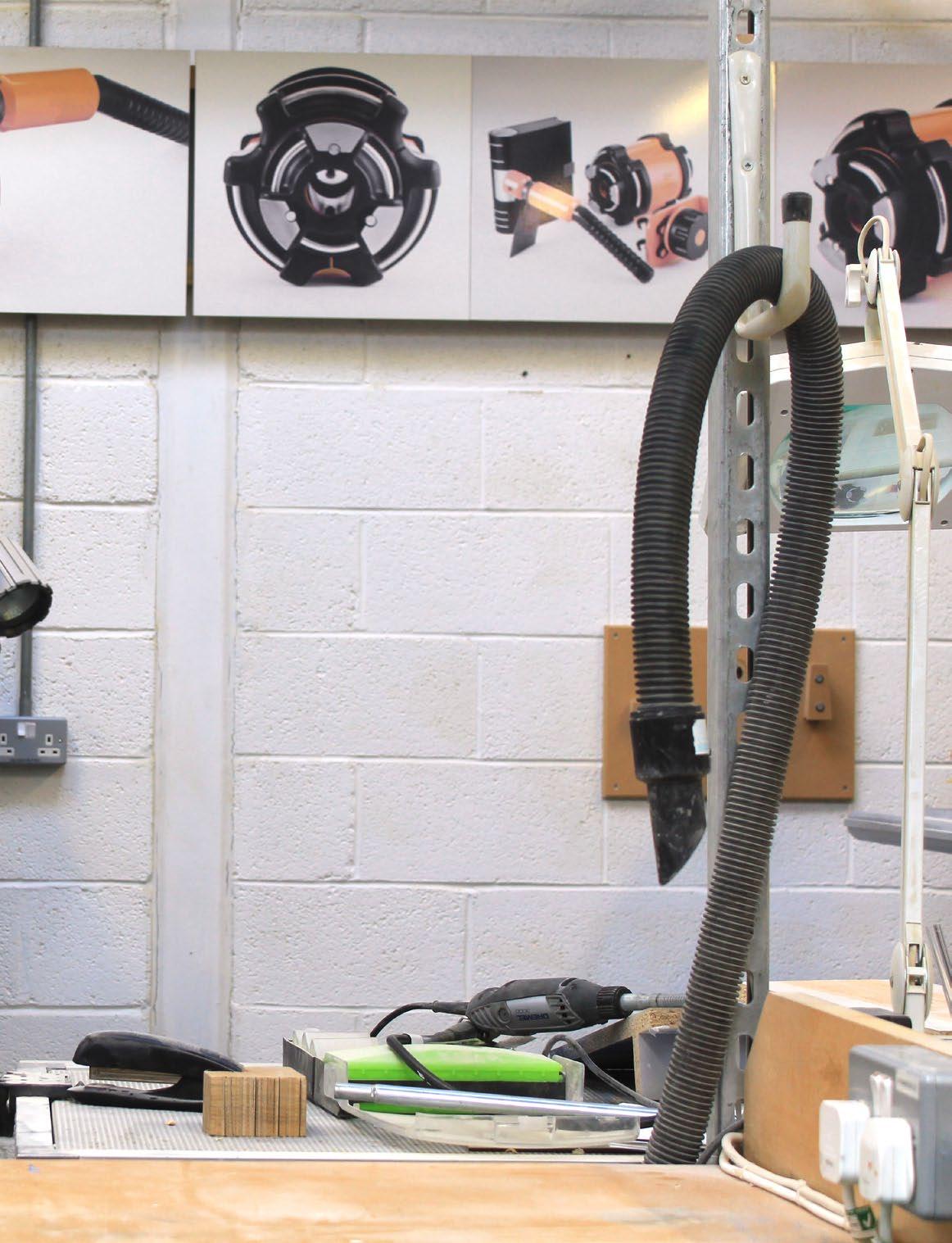 Aimone Bodini
Aimone Bodini
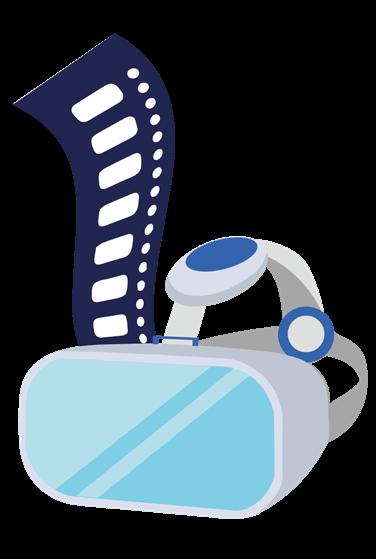
A co-design approach to explore potential uses and applications enabled by immersive technologies for independent audio-visual productions. Exploration, co-design, development, and testing of creative concepts utilised immersive technologies and empowered audio-visual professionals working in small and medium productions.
Immersive technologies such as augmented and virtual reality continue impacting more and more businesses and people across various disciplines. In the case of the audiovisual industry, immersive technologies have proved to be valuable for the “virtual production” (VP) process in high-end projects.

The concept behind virtual production is the real-time data exchange between physical and virtual worlds through real-time engines such as Unity or Unreal Engine.
Recent feature films that involve the use of Computer Generated Imagery (CGI), such as “Ready Player One” or “The Lion King”, relied on the adoption of VP because, among its many benefits, it allowed directors and the film crew to visualise and capture places and scenes that do not exist or which would require an incredible amount of resources.
As immersive technologies keep advancing and become more accessible to a broader audience, this research investigates the commercial and creative opportunities offered by virtual production for small and medium-sized audiovisual productions.
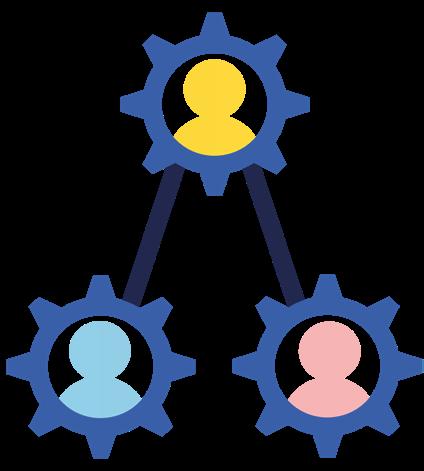

Defining a practical method for the application of complexity leadership through a programme of action research within the aerospace and defence company Ultra Electronics. The aim of this research is to develop a proven framework or tool for applied complexity leadership.
The idea of using complexity science to inform organisational science was met with great excitement in the early part of the 21st Century. Discourse on the potential of the approach has been wide ranging but, perhaps due to the scale of the task, it has so far failed to see real-world application. There is a marked lack of primary data from case studies and trials to substantiate and mature the theory.
This research seeks to close gaps in the extant work through a programme of action research within the aerospace and defence company, Ultra Electronics. With over 850 leaders and sites in a number of countries, Ultra is a perfect site for this ground-breaking research.
Working in four groups over a period of two years, the volunteers for the action research will first spend time discussing facets of the theory, relating them to their lived experience and finding areas of significance and insight. They will then, in the second year, address the challenges of deploying a new complexity leadership framework within the group. The research will ultimately triangulate the qualitative data gathered from the action research groups (four teams of six or seven leaders working over two years) with qualitative survey data (using the 850 leaders as a research population) and with semi-structured elite interviews.
This research aims to propose the process model based on the participatory design and upcycling principles that are suitable for a small rural community in Khon Kaen province in Thailand, to address local municipal solid waste.
Thailand has been using the principle of the 3R’s (reduce, reuse, and recycle) to tackle waste from 2016 until the present. Although the private sector is aware of the waste issue and has participated in solving the problem, the primary source of waste generation is the people sector. Based on the ‘Clean Province’ policy mentioned, the household sector needs to manage waste at the primary sources such as sorting, reducing, and reusing waste. The handicrafts are used widely for the small Thai community; the narrative and local identity are hidden in a craft product to show their root culture in each locality. The local’s knowledge, identity and techniques could add much needed value to upcycling products.

The research case study is a small community in Khon Kaen Province, the second largest city of North-Eastern Thailand and the highest province of the Northeast zone in residual waste in 2014. This research focuses on deductive and mixed methodology research, identifying problems and reviewing theories relevant to the key issues: municipal solid waste in Thailand, participatory design, up-cycling, art and culture in rural areas. The tool created based on the theory aims to mix methodology applied in quantitative and qualitative research. The outcome of these mixed-method tools seeks to develop a participatory design process and incorporate it in the workshops.

The aim of this research is to formulate a framework of co-design principles for social care service development, in order to help communicate the need and value of co-design and better engage with older immigrant people on a local level.
Research shows that complex administrative systems, bureaucracy and the lack of knowledge of existing care structures form part of major obstacles of social care in the UK by people from non-native origin. In tackling social care specific challenges, faced by immigrant older people in the UK, this research uncovers two main aspects:

1. How the use, application and process of co-design can be used to engage with immigrant older people in the social care service development process.

2. How co-design can be used to improve social care services to better align with the needs of older immigrants.
Conducted through user and experts interviews, focusing on understanding co-design for service development, influence of migration, and barriers to care. Country case studies help to distill best practices. Main framework considerations refined from community and field experts include trust, participant recruitment, active creative engagement related to immigrant elders, suggestions made for flexible governing structures at local level.

This study focuses on the language barriers and adaptation issues faced by Chinese older people who have migrated from one place to another. By designing innovative interventions to help older migrants adapt to living in a new place, the research encourages older adults to utilise their resources to build a better migration experience.

Language barriers have a significant impact on the well-being of migrants, including differences in dialects. Language is a tool for social communication and is inseparable from spiritual life and social interaction. Older migrants experience changes in their living conditions and the people they communicate with, leading to loneliness and other issues. This study will provide a design perspective on the language barriers and cultural adaptation of older migrants, understanding their requirements and providing design-lead solutions to build a better experience for older migrants, which may also benefit migrants of other age groups.
This study mainly focuses on the following three research questions:
1. What are the communication issues for ageing Chinese migrants in the UK and China?
2. To what extent could new technologies address these communication issues?
3. How can design help to overcome these significant issues?
This research will be conducted in two countries during different periods; Shanghai and Shenzhen, China and London, United Kingdom.

This research aims to propose guidance and practical solutions based on Human-Centred Design and Information Design that could help overcome challenges to achieve better communication between Syrian immigrant parents and Turkish primary school teachers.
Syrian refugees migrated to Turkey in 2011 because of the war in Syria. Turkish context reports that Syrians have problems in language, housing, health, education, employment, citizenship, and social and cultural adaptation. Evaluating their problems, researchers found out that most Syrian refugees’ are related to language barriers. Language barriers happen in every context of life. The focus will be on education, as it is very important to the social cohesion of communities. Moreover, parental involvement plays a crucial role in students’ achievement. However, Syrians cannot attend parental meetings because of language.
Considering the language barrier context, it is not only about language limitation but several other factors such as emotional barriers, cultural differences, unfamiliarity, and personal features. This research focuses on certain problems that come from emotional barriers between Syrian parents and Turkish primary school teachers, cultural differences, and the fact that they are unfamiliar with the Turkish system.
A qualitative research method will be used to collect data to offer useful solutions to decrease communication barriers between Turkish primary school teachers and Syrian parents.

Through a user centred design approach, the aim is to understand the factors that may affect the adoption of Interactive Smart Agents (ISAs) among severely disabled users. The use of welldesigned assistive devices may improve the quality of life of individuals living with severe and permanent impairments and, consequently, reduce the burden on their caregivers.

ISA devices, for example Amazon Alexa, use the latest smart home technology to control devices around the house through a voice interface. This study aims to investigate whether ISAs may be effective to support individuals who are affected by neurological ailments like multiple sclerosis, stroke, and spinal cord injury (SCI). The study’s approach is user-centred to ensure inclusion. The study has achieved NHS Research Ethics Committee and Health Regulatory Authority approval (Project ID: 255096) and includes two main parts:
1. The initial development of an adoption model informed by secondary research and exploratory primary data.
2. A second in-depth investigation of the initially identified constructs and relationships through a multi-point qualitative study.
The research is in collaboration with the North Thames Regional Environmental Control Services and Hillingdon Hospital NHS Foundation Trust, an NHS organisation that provides Environmental Control devices to manage the patient’s electrical and computing appliances. Clinical staff have indicated an increasing patient demand of ISAs instead of traditional EC devices and have suggested that their clients are keen to experiment with more intuitive interfaces.
Investigating the single-use plastic packaging issues, aiming to support packaging professionals to create reusable packaging solutions, which include advancing their knowledge, identifying the market opportunities, and addressing the user acceptance issues.

This project is focused on addressing the singleuse packaging waste issues. The unsustainable consumption of plastic combined with the ineffective waste management approaches encourages this project to explore the strategies to close the resource cycle and satisfy social needs. Under the current plastic crisis, it is urgent for us to develop sustainable packaging solutions that push down the amount of packaging waste produced but also satisfy social needs. Reusable packaging solutions appear to be a promising and effective option. However, the support systems for packaging professionals to design and diffuse reusable packaging solutions are limited. Based on this reason, the research developed a design tool and set of recommendations to support packaging professionals advance their knowledge, identify market opportunities, ideate suitable reusable packaging solutions and address the user acceptance issues.
This research engaged with 24 packaging professionals and 42 packaging consumers to iteratively evaluate and refine the design tool and develop the design recommendations. In practice, the outcomes of this research should be beneficial for packaging professionals such as packaging consultants, packaging entrepreneurs and NGO professionals.
This project focuses on the relationship between football and AI, investigating the use of VAR technologies and in-game tactical management using decision-based frameworks with methodologies of minimising error and optimising sport events efficiently.

Over the years, we have included more and more technology into sports, whether through the management and team analysis or, more recently, with Video Action Replay to judge and correct decisions in-game. More recently, technologies have been questioned in football as to whether they have improved the game, aided official decisions, and had a hand in tactical management and setup. With these questions, the answer may lie within AI technologies and the steps needed to remove errors and aid club management in pre-game decisions.
Elements such as Machine Learning, Deep Learning and Natural Language Processing are all features to consider moving forward. There are many gaps in the research concerning the psychological aspect of AI and how it has affected players and management, both short-term and long-term. A key goal is to find practices that reduce judgment mistakes with AI risk and possibly find a balance that will allow us to use AI efficiently in sports or in other fields. An intervention based on AI applications to increase productivity or faster outcomes must also be explored. Emerging technologies such as AR and VR can play a tactical part in this, impacting players and growing exponentially across training and matches.

This study will use a series of user experiments and data statistics methods to focus on the treatment process for mobility impairment and disability rehabilitation caused by Parkinson’s disease (PD). It will also research the practicality of VR technology and abstract elements in the rehabilitation process, including physical and psychological effects.
Through experiments with PD patients of different levels, more credible and accurate data will be established that reflects the effectiveness of VR technology in rehabilitation medicine. Moreover, the existing research used readymade VR products or allowed users to perform experiments in a single mode of exercise. These methods cause the lack of research and data analysis on the same patient in different exercise modes, so it is impossible to reference and compare the experimental results of users under various exercise tasks. Through further research and experimentation, a more scientific and effective VR rehabilitation training method will be created.
Furthermore, to research whether PD patients experiencing different VR rehabilitation training methods in different VR environments may positively or negatively affect the patients’ psychological aspects, including social integration, spiritual well-being, and life selfconfidence.
Finally, building a more systematic design by integrating related technologies and equipment that may be used in the rehabilitation process of VR technology, such as music. In addition, the establishment of a remote presence in the home environment with the purpose of implementing clinical interventions will be realised.


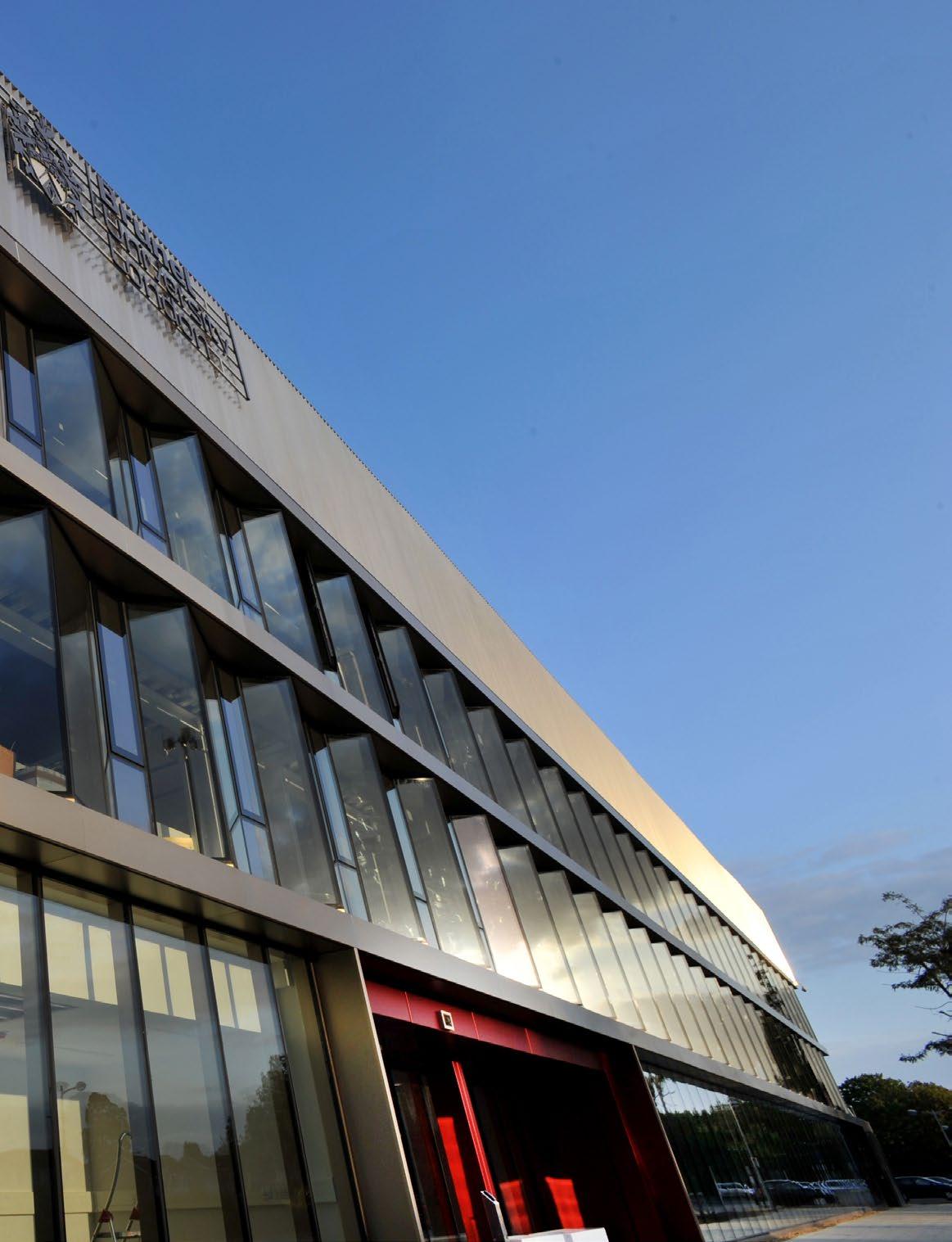
Somaiya Afzal Industrial Design & Technology BA Somaiyaafzal@outlook.com Pp. 169
Jessica Ansell Industrial Design & Technology BA jcka.ansell975@gmail.com


Pp. 039, 173
Michelle Bandera Industrial Design & Technology BA michellebanderas@gmail.com
Pp. 041
George Oscar Baritsch Industrial Design & Technology BA george.baritsch@gmail.com

Pp. 043, 165
Nazifa Begum Industrial Design & Technology BA nazifabegum00@gmail.com
Pp. 045, 144, 163
Stanley Binns
Industrial Design & Technology BA stanleybinns@googlemail.com
Pp. 047, 136, 145, 171
Carl-Henrik Andersson Industrial Design & Technology BA carl-henrik@hotmail.co.uk
Pp. 038, 161

Eda Balci Industrial Design & Technology BA edabalci116@gmail.com
Pp. 040, 161
Anduena Bardhi Product Design Engineering BSc abardhi00@gmail.com
Pp. 042, 112, 128
James Battishill Industrial Design & Technology BA jamesbattishill@outlook.com




Pp. 044, 173
Rahima Begum Product Design Engineering BSc rahimabeg02@gmail.com


Pp. 046, 113, 157
Gabriel Britton Industrial Design & Technology BA gabrielbritton11@yahoo.com
Pp. 048, 165
Eben Budd Industrial Design & Technology BA 1709776@brunel.ac.uk
Pp. 169
Bilal Chaudhry

Product Design Engineering BSc bilalproductdesign@gmail.com
Pp. 050, 112, 157
Edward Cray Product Design Engineering BSc edward@thecrays.com
Pp. 052, 112, 169
Oliver James Dawson Industrial Design & Technology BA o@ojd.design








Pp. 054, 165
William Dixon Industrial Design & Technology BA wdixondesign@gmail.com
Pp. 056
William East Industrial Design & Technology BA willeast.we@gmail.com
Pp. 057, 173
Chloe Canell Product Design Engineering BSc clcanell25@gmail.com



Pp. 049, 157
Henry Copeland Product Design Engineering BSc productdesignbyhenry @gmail.com
Pp. 051, 112, 120, 171
Daniel Daborn Industrial Design & Technology BA ddaborn1@gmail.com
Pp. 053, 159
Lillian Denson Industrial Design & Technology BA lillian@denson.eu
Pp. 055, 167
Wesley Duffy Industrial Design & Technology BA wesdesign@outlook.com
Pp. 165
Kerry Edwards Industrial Design & Technology BA kerryedwardsdesign @outlook.com
Pp. 058, 165
Jake Elston Industrial Design & Technology BA jakeelston123@gmail.com



Pp. 059, 165
James Gadsden
Industrial Design & Technology BA jamesmgadsden@gmail.com
Pp. 061, 157
Kripa Gurung Product Design Engineering BSc kripagrg0@gmail.com
Pp. 063, 113, 146
Tammy Julleekeea





Industrial Design & Technology BA tjulleekeea1000@gmail.com
Pp. 064, 167
Isneha Kapoor Product Design BSc isnehakapoor@outlook.com
Pp. 066 Yaroslav Kovalev Industrial Design & Technology BA ykovalev2001@gmail.com
Pp. 068, 129, 147, 161
Jordan Evans Product Design Engineering BSc jordan.ci.evans@gmail.com



Pp. 060, 112,
Thiresia Georgantzi Industrial Design & Technology BA tereza_geor@hotmail.com
Pp. 062, 161
Silke Heyse
Product Design BSc silkeheyse.design@gmail.com
Pp. 121, 137
Benjamin Justice Industrial Design & Technology BA benjustice4@gmail.com
Pp. 065 Kiarash Karimitari Industrial Design & Technology BA kiarash@live.co.uk
Pp. 067, 159 Sophie Lazenby Industrial Design & Technology BA sophielazenby@btinternet.com
Pp. 069, 171
Rosina Leftwich-Kallmann Industrial Design & Technology BA rosinaemilyleftwich@gmail.com

Pp. 070
Joshua Li Product Design Engineering BSc joshgajunli@gmail.com


Pp. 072, 163
Jess Logan Product Design Engineering BSc jess.logan@hotmail.co.uk
Pp. 074, 113, 122
Margot Mason Industrial Design & Technology BA margotmason22@gmail.com
Pp. 076, 173
Chloe McCourt Product Design BSc



chloemccourt@gmail.com
Pp. 078, 171
Harry McIntosh Industrial Design & Technology BA harrymc55@gmail.com
Pp. 080, 149, 167
Adeline Leon Industrial Design & Technology BA adelineleon305@gmail.com
Pp. 071, 138, 148, 163
Yutong Li Industrial Design & Technology BA 15669077933@163.com


Pp. 073
George Longmore Industrial Design & Technology BA longmore.gv@gmail.com


Pp. 075, 167
Oliver Maszlin Industrial Design & Technology BA ollie.maszlin@hotmail.co.uk


Pp. 077, 139
Sam McGlynn Product Design BSc sammcglynn452@gmail.com
Pp. 079
Shin Heryll Mejia Product Design Engineering BSc shin.mejia@outlook.com
Pp. 081, 113,
Subhan Mughal Industrial Design & Technology BA subhan.m2000@hotmail.com
Pp. 157
Zoe Mercer Industrial Design & Technology BA zoemercerdesigns@gmail.com
Pp. 167
Madeline Mortland Industrial Design & Technology BA madsmortland@gmail.com


Pp. 084, 169
Rishabh Nayak Product Design BSc rishabhnayak2000@gmail.com
Pp. 086, 163
Oscar Norman Product Design BSc oscarbnorman@gmail.com

Pp. 088, 159
Michael Ong Product Design Engineering BSc michaelong.ew@gmail.com

Pp. 090
Lauren Menzel
Product Design BSc lauren.n.menzel@gmail.com
Pp. 082, 130, 140
Athina Mikrou Product Design BSc mikrouathina@gmail.com

Pp. 083
Sam Mytton
Product Design BSc myttons@gmail.com
Pp. 085, 131, 141
Jingyu Niu Industrial Design & Technology BA 1987204762@qq.com

Pp. 087
Divine Okoroji Industrial Design & Technology BA dkokoroji@gmail.com
Pp. 089, 163
Edouard Parslow Industrial Design & Technology BA edouard.parslow07@gmail.com



Pp. 091, 150, 169

Wysiana Patricia Product Design Engineering BSc wysianapatricia@gmail.com
Pp. 092, 113, 171
Joshua Perkins Product Design BSc joshuajperkins1@gmail.com
Pp. 094, 132
Connor Ray Product Design Engineering BSc connor.ray1999@gmail.com




Pp. 096, 112, 123, 151
Ioana Saioc Product Design Engineering BSc ioanasaioc@gmail.com



Pp. 098, 124, 152
Zahra Siddiqui
Industrial Design & Technology BA zahra.siddiqui@hotmail.com

Pp. 100, 163
Lyn Tan Product Design Engineering BSc zhenglin.tan99@gmail.com



Pp. 102, 113
Kirsty Patterson Industrial Design & Technology BA kirsty.eveline@gmail.com
Pp. 093, 173
Palmira Piqué Salvat Product Design Engineering BSc palmirapique@gmail.com
Pp. 095, 133
Archie Read Product Design Engineering BSc agd.read@hotmail.com

Pp. 097, 112, Thomas Sault Product Design Engineering BSc thomasodsaultdesign @gmail.com
Pp. 99
Sam Supan Product Design BSc supansamantha@gmail.com
Pp. 101
Jehoshua Thayaparan Industrial Design & Technology BA jehoshuageorge@gmail.com
Pp. 103, 157
Brandan Traini Product Design BSc bkl4design@gmail.com
Pp. 104, 161
Millie White Product Design Engineering BSc milliefwhite@gmail.com
Pp. 106, 125, 159
Augustė Žukaitė Industrial Design & Technology BA augustezukaite@gmail.com
Pp. 108, 173
Frances Adam
Sustainability, Entrepreneurship & Design MSc
frances.r.adam@gmail.com
Pp. 180
Jesse Amoako Atta Design & Branding Strategy MA Pp. 201
Guy Westcott


Industrial Design & Technology BA wes7co77design@gmail.com
Pp. 105
Sophie Wilson




Industrial Design & Technology BA sophie.wilson1@gmail.com
Pp. 107, 153, 167
Idil Akman Integrated Product Design MSc idilakmn23@gmail.com

Pp. 181, 202
Yuktha Baheti
Integrated Product Design MSc yuktha11b@gmail.com Pp. 182
Asawari Bora Design Strategy & Innovation MA asawaribora16@gmail.com
Pp. 183, 202
Himani Gohil Design Strategy & Innovation MA himanikgohil@gmail.com
Pp. 185, 201
Fenmei Li

Integrated Product Design MSc
li648400453@gmail.com
Pp. 187
Sean Lupdag Integrated Product Design MSc seanmlupdag@hotmail.com
Pp. 189
Silvana Arteaga Moreno Integrated Product Design MSc silvana.art.mor@hotmail.com
Pp. 201, Minhoo Park Integrated Product Design MSc minhoo6737@gmail.com


Pp. 192
Olivia Cowling Sustainability, Entrepreneurship & Design MSc cowlingolivia@gmail.com




Pp. 184
Lukhan Gujarati Integrated Product Design MSc Pp. 186, 201
Qianyu Lu Integrated Product Design MSc lqyu980905@163.com
Pp. 188 Nirali Marfatia Design & Branding Strategy MA niralimarfatia06@gmail.com
Pp. 190, 202
Raquel Moreta Morandeira Integrated Product Design MSc raquelmoreta19@gmail.com Pp. 191
Gayatri Pachpande Design Strategy & Innovation MA pgayatri02@gmail.com Pp. 193, 202


Anna Papavasileiou Integrated Product Design MSc papavasile@mail.com
Pp. 194
Martina Riccetti Sustainability, Entrepreneurship & Design MSc riccettimartina@gmail.com

Pp. 201, Shouyu Sun Integrated Product Design MSc 419910136@qq.com
Pp. 196 Ran Tao Integrated Product Design MSc ran_tao22@163.com Pp. 198
Shiyi Zhou Integrated Product Design MSc

Bruce11Jia1@gmail.com
Pp. 200
Shameer C. M. Ramdin Sustainability, Entrepreneurship & Design MSc Pp. 201
Theo Seah Integrated Product Design MSc theoseah@gmail.com Pp. 195




Vuthywath Taing Design & Branding Strategy MA taingvuthywath@gmail.com Pp. 197, 202 Yunhao Zhao Integrated Product Design MSc Pp. 199

Aimone Bodini
Chris Biggadike
aimone.bodini@brunel.ac.uk
Doctoral Researcher Pp. 210
Montida Lertnimanoradee
Doctoral Researcher montile@kku.ac.th Pp. 212
Qing Ni
Doctoral Researcher 2105826@brunel.ac.uk Pp. 214
Umber Shamim
Doctoral Researcher umbers@gmail.com Pp. 216
Zakaria Monteiro Najmi
Doctoral Researcher Pp. 218
Doctoral Researcher chrisbiggadike@talktalk.net Pp. 211


Sena Berktas Doctoral Researcher sena.brk@hotmail.com Pp. 215
Yuan Long Doctoral Researcher longyuan0824@gmail.com Pp. 217

Nevena Balezdrova Doctoral Researcher nevib@live.co.uk Pp. 213 1711306@alumni.brunel.ac.uk



Zixin Tian Doctoral Researcher Pp. 219

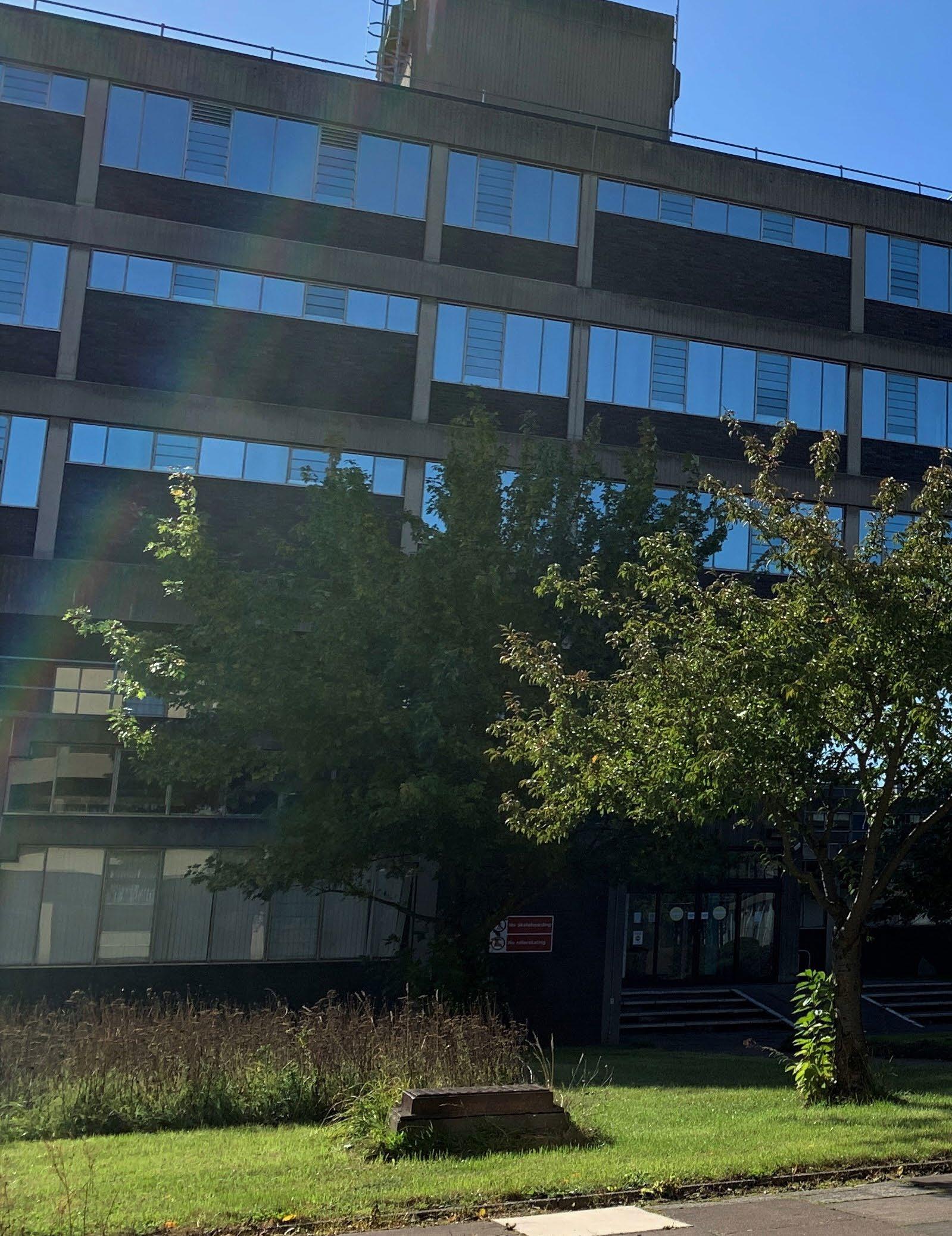

Innovation is a key business growth mechanism. However, without the right expertise, knowledge and resources in place, creating a new product or service or even introducing a new process or technology is inherently risky.
Co-Innovate is a business support service based at Brunel Design School and jointly funded by Brunel University London, the European Regional Development Fund and the Greater London Authority. Consisting of two interrelated programmes: Brunel Co-Innovate Journeys and Bridging the Gap, the service directly helps London-based SMEs and graduate entrepreneurs launch, grow and scale their innovation activities, while mitigating risk by connecting them with Brunel’s world-class facilities and knowledge resources.
Companies interested in working with Co-Innovate can benefit in a number of ways: engaging with students on collaborative projects to address real-world business challenges, innovation mentoring, helping to apply for project funding, tailored input from specialised academics, business growth training workshops, and networking events.
If you are interested in exploring how Co-Innovate can help your business expand through innovation, please get in touch at: co-innovate@brunel.ac.uk to speak to one of our Innovation Directors.
Ryan Smith & Rhona DennessImagine the possibilities of an international network of highly motivated students, researchers and educators working together to stimulate, teach and support collaborative innovation. Imagine then the possibilities for your organisation in working with this community of innovators to help you gain new perspectives and solutions to the innovation opportunities and business challenges you face. Design Factory London is Brunel’s new innovation initiative focused on making these possibilities a reality. Brunel University London is part of the Design Factory Global Network (DFGN, dfgn.org), the first higher education institution in the UK to obtain membership of this international network. DFGN is a worldwide association of 33 design-led innovation hubs at universities and research organisations across Europe, North America, South America, Asia and Australia.
Design Factory London are creating a collaborative University centre in Brunel with the three objectives in mind:
• Teaching human-centred, collaborative innovation to students from all disciplines across the university.
• Partnering with external organisations from all sectors in developing innovations centred on real-world challenges, opportunities, and challenges set by organisations themselves.
• Collaborating across the Design Factory Global Network to develop innovative solutions together, working across national and professional discipline boundaries.
If the idea of working with our students on your innovation challenge is of interest, or if you simply want to find out more about how we work, please contact us at: dfgn@brunel.ac.uk.
Design Plus is an ongoing design support programme by Brunel Design School, focused on promoting and developing collaboration between the School and industry with an emphasis on design innovation and knowledge exchange. The programme is targeted at medium-sized businesses, large corporations and public sector organisations – both nationally and internationally. Brunel’s Industrial Design & Technology, Product Design, Product Design Engineering, and Design Strategy programmes are amongst the highest-rated in the UK. Since 2004, students and academics from these programmes have applied their creativity and knowledge in collaborative design projects for a wide variety of companies, including Brompton Bikes, Hornby, British Telecom, JLR, several hospital trusts and many more. Design Plus projects involve working with clients on the design and development of radical new ideas for products, services and processes. Students work individually, or in small teams, supported and guided by their supervising tutor, to deliver design solutions of a very high standard.
A Design Plus project is an opportunity both to access fresh thinking and to add considerable value to the collaborating student’s education and career prospects. If you have a real-life design challenge, we could help you gain a competitive advantage.
To discuss collaboration opportunities, please get in touch at: designplus@brunel.ac.uk.
Part of Brunel Careers, the Entrepreneur Hub exists to provide free support for students and graduates who want help to develop their ideas (especially final year projects) into winning businesses. Support available includes unlimited 1-1 consultations with your own Hub Business Consultant, expert advice from Intellectual Property, Marketing and Finance professionals and potential funding through bursaries, Brunel Venture Competition prizes, incubator support, accelerator support and Santander CEO programmes.
Budding entrepreneurs and others can attend monthly workshops and events run by the team, encouraging transferable skill development. The Brunel Entrepreneur Hub have now launched both an Incubator programme and through collaboration with the Central Research Laboratory, a Pre-Accelerator Programme, both with around six businesses.
Made in Brunel success stories supported by the Entrepreneur Hub include:
Stephanie Monty
Industrial Design and Technology BSc 2016 graduate and founder of Ostique, www.ostique.co.uk.
Lauren BellProduct Design BSc 2018 graduate and founder of Cosi Care, www.cosicare.co.uk.
Anil PuriProduct Design Engineering BSc 2018 graduate and founder of Pet Instincts, www.petinstincts.com.
If you wish to explore turning your final year project into a business and commercialising your idea with the Entrepreneur Hub please get in touch at: hub@brunel.ac.uk.
The Central Research Laboratory is part of the Plus X network of innovation hubs. Central Research Laboratory (CRL) is the UK’s leading accelerator and co-working space for hardware startups and product pioneers. It has supported hundreds of entrepreneurs to launch and scale their companies through product development, commercial strategy, prototyping, mentorship and access to a network of investors and partners. Based at The Old Vinyl Factory in Hayes, West London, CRL helps Brunel graduates and alumni who want to turn their product and technology ideas into a new business, CRL runs a six-month accelerator programme supporting early growth stage product pioneers. Six companies are selected to take part in an intensive support programme focused on product development and design, commercial and growth strategies and investor readiness.
Brunel alumni to go through the CRL Accelerator programme include: Cosi Care, Aceleron, Mimica, Wase, Pet Instincts and Lylo who have gone on to win multiple awards and raise millions of pounds. The CRL also partners with Brunel to offer exciting opportunities for students and graduates to connect and collaborate with startups.
Plus X enables and supports tomorrow’s pioneers to meet the challenges of our time. Find out more: www.plusx.space.
At Brunel Design we are proud of our links with industry and the professional experience that our designers gain. Typically, 75-80% of second-year design students complete placements or international exchange programmes each year. Placement opportunities are broad, including product design, industrial design, engineering, automotive, lighting, graphic design, packaging, interior, branding, UX design, toy design and digital design. Brunel encourages students to undertake international placements, in countries such as the Netherlands, Germany, Denmark, France, Italy, the USA, Bali, Dubai and China. Brunel Design also has excellent links with Politecnico di Milano, Italy; TU Delft, the Netherlands; San Francisco State University, USA; ISD Rubika; France, and Mimar Sinan Fine Arts University; Turkey, all of which provide the invaluable opportunity to study abroad for 1 year, often undertaking master’s level modules.
Brunel’s award-winning Professional Development Centre is dedicated to enhancing our students’ professional experience. Our Careers team support our design students from their first year at Brunel through to after graduation, providing expert industry advice and support to find employment. We successfully connect employers with students and graduates for placements, internships, part-time work and graduate-level roles, and organise events throughout the year, including employer-led events, careers fairs and guest lectures from our industry partners.
If you are interested in taking on a Brunel student or graduate, visit our website www.brunel.ac.uk/pdc. Or contact us at: design-placements@brunel.ac.uk
Nadine Scantlebury
Santander Universities’ partnership with Brunel University London launched in 2014, since then we have helped to deliver lifechanging experiences to students through a range of scholarships, grants and start-up awards for student-led businesses. Our programme has benefited hundreds of Brunel students with international mobility awards, scholarships, internships, whilst also supporting multiple student entrepreneurs and local SMEs with direct and indirect financial support. Through Brunel’s incubator at the Central Research Laboratory, we have provided direct monetary assistance to over a dozen Brunel start-ups, by providing equityfree seed funding grants, networking opportunities and partfunded internships. Santander Universities continues to be deeply embedded in the wider enterprise activity at Brunel, including the Made in Brunel awards, Venture Competition and the Co-Innovate business pitches. Given that the quality of enterprise education at Brunel is so strong, it should be no surprise that in 2018 and 2019, Brunel start-ups won the annual Santander Universities Entrepreneurship Awards! This year students presenting at Made in Brunel will win a share of £2,000 thanks to Santander Universities.
#SantanderuniversitiesUK
Kirsty Smith
Design is a team sport, we all came to realise this during our final academic year. The Blueprints brand was created with hard work and passion for design and Brunel University, but mostly with the immense support from the people around us. We know the success of the year’s Made in Brunel would not have been possible without the behind the scenes work of people from this university and beyond.
Our team would like to express our endless gratitude to the help and support received from all the Academic Staff and Design Technicians, who have been so helpful throughout the year. Their support and guidance has helped to create high quality designs.
Hua Dong
Busayawan Lam Arthi Manohar Steve McGonigal Eujin Pei
Individuals Clive Gee Paul Josse Marilyn Powell Ryan Smith Paul Turnock
Another thanks to external companies or individuals throughout the process of bringing Blueprints to life.
Brunel University
Cambridge Consultants
Futurenova Quagga Design
Smallfry Stix Mindfulness
Alex D’Souza
Sophie Denham Steve McGonigal
Eujin Pei
Pop Up
Lauren McMullan
Amardeep Singh Shakhon Gurmit Shakhon
Anduena Bardhi
Stanley Binns Sarah Brashaw Henry Copeland Oliver James Dawson
William Dixon Silke Heyse
Purvi Kotian Sophie Lazenby
Rosina Leftwich-Kallmann Fenmei Li Chloe McCourt Rebecca Mellor
Zoe Mercer Kirsty Patterson Palmira Piqué Salvat Connor Ray
Design Technicians
Paul Barrett Vincent O’Horo William Pierce Minal Shah James Stephen
Ioana Saioc Sam Supan Brandan Traini Sophie Wilson Photographers William Dixon Purvi Kotian Jonathon Leigh Chloe McCourt Patrick Quayle
The whole team would like to say a big thank you to Paul Josse, Marilyn Powell and Ryan Smith who have all made this year’s Made in Brunel possible. Without their patience and devotion to Made in Brunel and the students of Design, none of our initiatives this year would have been as successful as they were.
The same is true for Paul Turnock and Clive Gee for their valued advice and aid on the creation of the book.
We are all extremely grateful for your support during this challenging but incredibly rewarding year, Made in Brunel wouldn’t be the same without you!


Connor Ray
“Design problem fighter, by doing all-nighters”
Chloe McCourt
“I was born in Stoke, but I was Made in Brunel.”
Palmira Piqué Salvat
“Hey, look at us ... Who would have thought?”
Anduena Bardhi
“Look at us ... Not me”
Henry Copeland “With great height, comes great responsibility”
Oliver James Dawson
“Making Henry look short in pictures”
Rosina Leftwich-Kallmann
“If at first you don’t succeed, call Paul Josse”
Kirsty Patterson
“Be bold or italic, never regular”



Millie White
“Bringing the puppy to cuddle at MiB meetings”
Silke Heyse
“The party don’t start till I walk in”


Sophie Wilson
“Fake till you make it”
Somaiya Afzal
“What do you call a lazy UX designer? Slack”
Stanley Binns
“I promise the MiBNFTs are coming”
Sophie Lazenby
“I want a MiB Squishmallow”
Brandan Traini “C squared for Chloe and Connor”
Ioana Saioc “Cu capul in nori!”




William Dixon
“Big smiles into the camera! In 3, 2, 1...”
Purvi Kotian
“Behind a successful graduate is CTRL + V”
“The grass is always greener if you boost the saturation”
Rebecca Mellor
“I’m only here as I’m being paid”
Sam Supan “Guys, I’m joining the MiB meeting online!”
Sarah Brashaw
“It wouldn’t be a MiB event without vinyls”
Research Liaison

Fenmei Li
“East or West, MiB is best”
We want to thank everyone for their involvement in the book, whether you have submitted content or proofread our initial drafts. This book not only serves as a collection of work, but of everyone’s efforts throughout our time as students, and this hectic and wonderful final year.
Thank you for all the hours and late evenings you’ve dedicated to the creation of the 17th Made in Brunel book. Good luck in all your ambitions!
Anduena & Palmira Publications Managers 2022





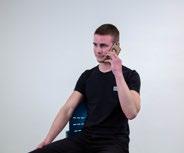
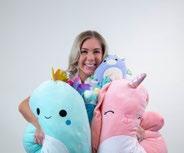




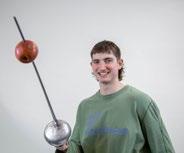




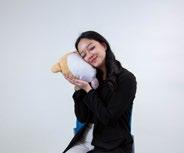







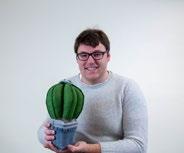



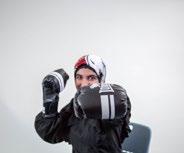




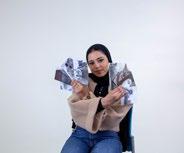

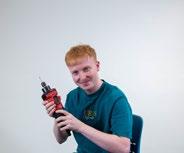




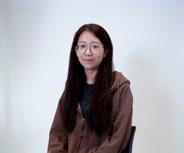




















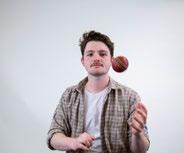




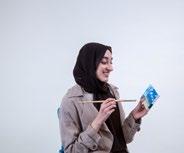














...the
Copyright © 2022 Made in Brunel
All
A
Made in Brunel
ISBN:
Printed
a
the
the British
Brunel

or
Made in
Editors: